
SUMMER 2022 EDITION 13 NEW CHAIR ANTHONY POINER Industry 4 WHAT’S WITH THE WEATHER Industry 46 UVC ADVANCES IPM Strawberries 98 NEW IPM PROJECT Rubus 106 AUSTRALIAN BERRY JOURNAL

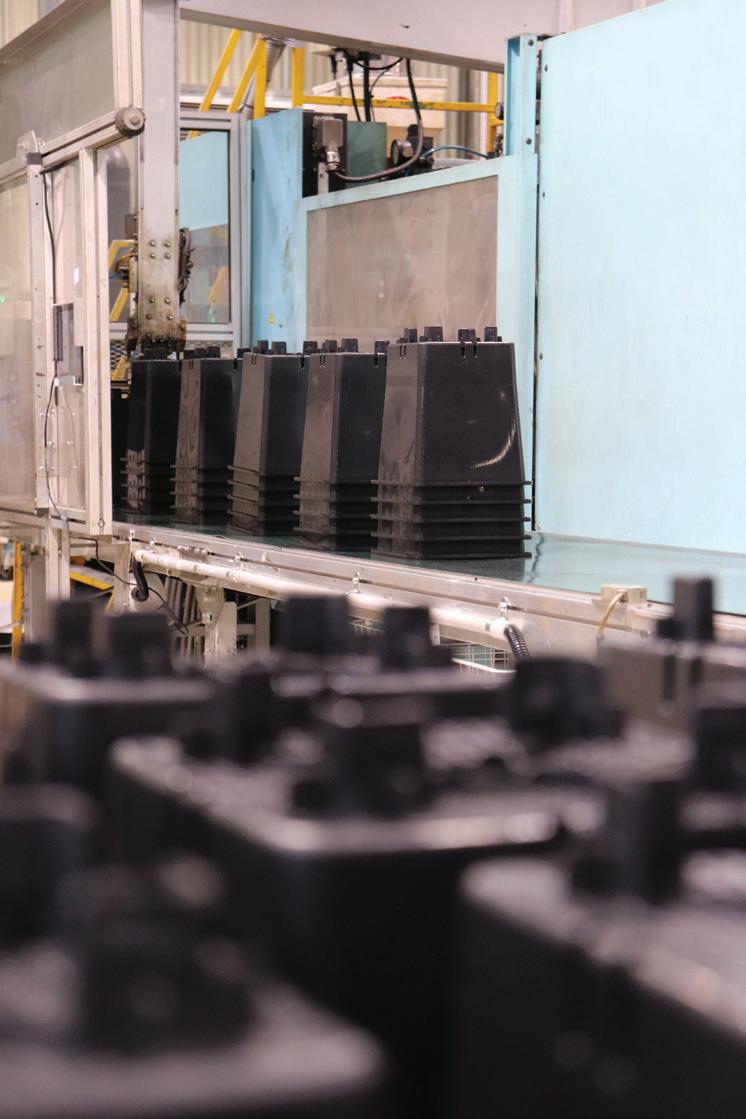

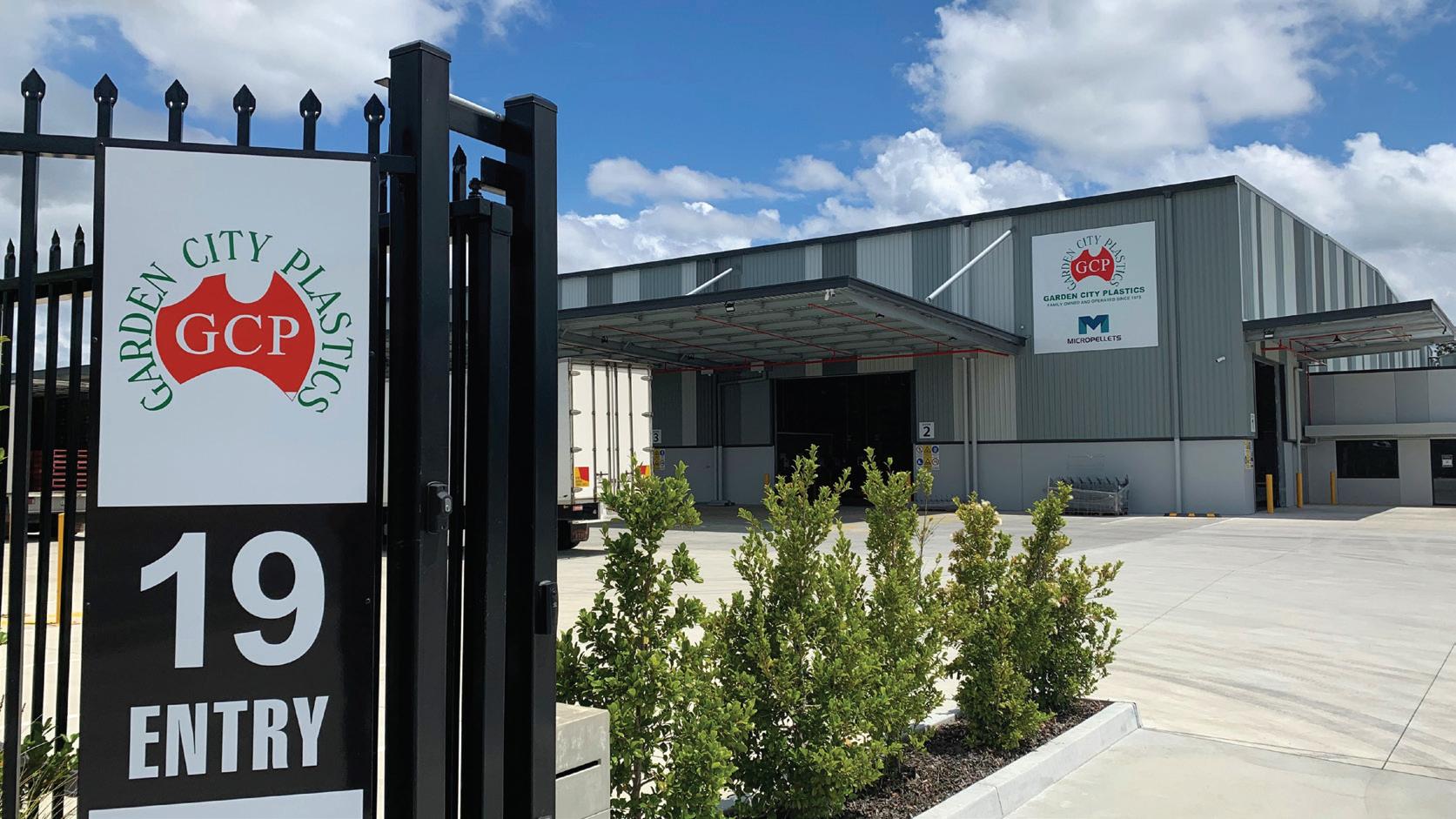
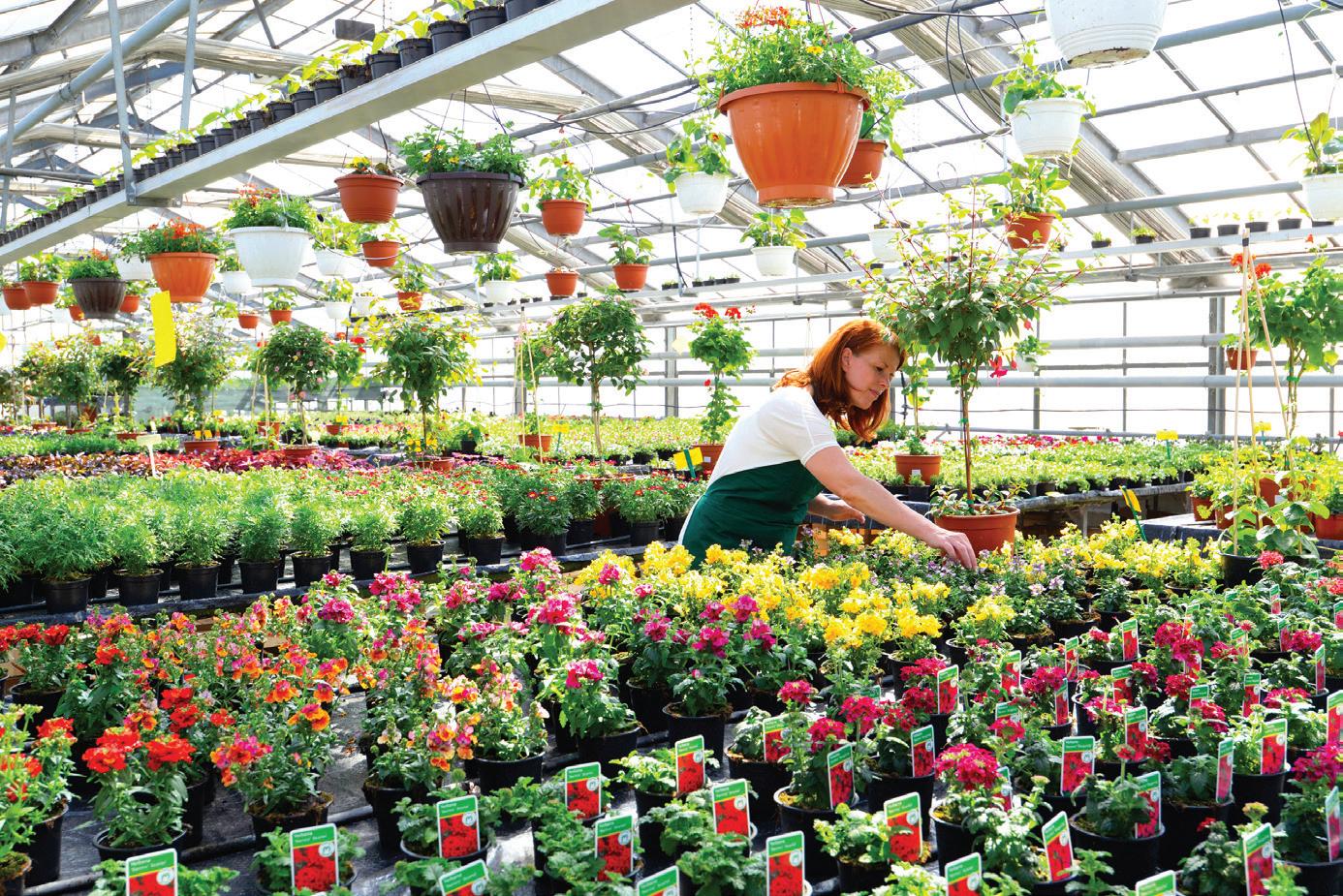

Varroa mite –where are we at? 14
Fair Farms welcomes Australian horticulture to inaugural conference 16
NEW: Raising Awareness of Nutrition and Berry Benefits with Healthcare Professionals 20
BQI22 Insights: Berries… retail insights from the world stage 22

Scams affecting the Agriculture Sector 33
Tasmania: Pre-Season Berry Field Day 36 Victoria: Berry Biosecurity Field Day 38 Soilless mixes – what’s important and why? 42
BQI22 Insights: High Impact Meteorology - Using models to help predict future weather events 46
New mandatory food safety rules for Berries 56
HARPS Version 2.0 is now live 58
Biosecurity: Be alert for Cane Toads in NSW 61
Export: Australian Berry Growers get a feel for export at Asia Fruit Logistica 2022 64
INDUSTRY SUMMER 2022 EDITION 13 AUSTRALIAN BERRY JOURNAL ADVERTISING For all Advertising & Partnership Enquiries Wendy Morris | 0491 751 123 | admin@berries.net.au All advertising and advertorial material is subject to review and approval prior to publication. DESIGN Sama Creative www.samacreative.com.au EDITOR Jane Richter TERES Communication 0431 700 258 jane@teres.com.au Wherever you see this logo, the initiative is part of the Hort Innovation Blueberry, Strawberry and Raspberry and Blackberry Fund. Like this publication itself, it has been funded by Hort Innovation using the Blueberry, Strawberry and Raspberry and Blackberry R&D levy and contributions from the Australian Government. Some projects also involve funding from additional sources. DISCLAIMER: Whilst every care has been taken in the preparation of this journal, the information contained is necessarily of a general nature and should not be relied upon as a substitute for specific advice. The advice and opinions in the articles published in Australian Berry Journal are essentially those of contributors and do not necessarily reflect the views of Berries Australia or the Editor. The advice is at the reader’s own risk, and no responsibility is accepted for the accuracy of the material presented. Inclusion of an advertisement in this publication does not necessarily imply endorsement
Journal
7 | 141 Walker Street, North Sydney 2060, Australia | E: communications@horticulture.com.au | P: 02 8295 2300 CONTRIBUTORS Michele Buntain Dr Jonathan Finch Dr Stephen Quarrell Christopher Menzel Sam Chadwick Delaney Lang-Lemckert Steve Maginnity Farhana Momtaz Professor Giles Hardy Kirsty Bayliss Jodi Neal Katie O’Connor Dr Doris Blaesing Jane Richter Rachel Mackenzie Anthony Poiner Simon Dornauf Jonathan Shaw Richard McGruddy Melinda Simpson Dr Angela Atkinson Mark Salter Helen Newman Aileen Reid Jen Rowling Sachin Ayachit Jutta Wright BLUEBERRIES Pest: Elephant weevil management in blueberries ......................................................................................... 71 Marketing Update — ABGA & Wavemaker 2022 Campaign .................................................................... 74 Using native bees as pollinators in Berries .................................................................................................... 79 RUBUS NEW: Alternative growing media for hydroponic Rubus production 105 NEW: $2.4 million boost for Rubus pest management 106 Profile: Roly & Jemma Mackinnon, Mountford Berries, Tasmania 109 STRAWBERRIES Impact of global warming on the yields of strawberry in southern Queensland......................................... 81 Cold-plasma mediated control of postharvest strawberry pathogens. ....................................................... 87 Latest Update from the Australian Strawberry Breeding Program ............................................................... 92 UVC as a non-chemical alternative for managing strawberry diseases ..................................................... 98
of the product, company or service by Berries Australia or the Editor. Horticulture Innovation Australia Limited (Hort Innovation) makes no representations and expressly disclaims all warranties (to the extent permitted by law) about the accuracy, completeness, or currency of information in Australian Berry Journal. Reliance on any information provided by Hort Innovation is entirely at your own risk. Hort Innovation is not responsible for, and will not be liable for, any loss, damage, claim, expense, cost (including legal costs) or other liability arising in any way, including from any Hort Innovation or other person’s negligence or otherwise from your use or non-use of Australian Berry Journal or from reliance on information contained in the material or that Hort Innovation provides to you by any other means. Copyright © Horticulture Innovation Australia Limited 2022 Copyright subsists in Australian Berry Journal. Horticulture Innovation Australia Limited (Hort Innovation) owns the copyright, other than as permitted under the Copyright ACT 1968 (Cth). Australian Berry Journal (in part or as a whole) cannot be reproduced, published, communicated or adapted without the prior written consent of Hort Innovation. Any request or enquiry to use the Australian Berry
should be addressed to: Communications Manager, Hort Innovation, Level
Executive Director's Report

Rachel Mackenzie | 0408 796 199 | rachelmackenzie@berries.net.au
Welcome to our last journal for 2022. It has been a jam-packed year for the Berries Australia team and whilst we finally seemed to get out of the shadow of COVID-19, the combination of La Niña and Varroa mite has made it a difficult year for growers and kept us busy.
Looking back, 2022 was the year that the piece rate changed, we got a new Federal government, growing areas were flooded at least once, there was a major biosecurity incursion along with significant pest and disease pressure, and many consumers woke up to the fact that there is not an endless supply of cheap fruit and vegetables.
The piece rate change is the single biggest workplace shake-up the industry has seen since the introduction of the modern Award. Whilst it is tempting to go back over the unacknowledged challenges the new system presents, I am pleased to hear reports from the Fair Work Ombudsman that compliance in berry growing regions has improved over the last few years. I commend those of you who have embraced the new rules and thank those of you who took the time to attend our information seminars. The bottom line is that no matter what we think of them, the new rules are a legal obligation and you must comply.
As a sector we were potentially less impacted by flooding than some other horticulture commodities which was a combination of fortunate timing and geographic location. That said, I am not diminishing the impact on production from low light levels and increased pest and disease, and I am aware that some growers were very badly hit. Hopefully, 2023 brings with it perfect growing conditions.
The Varroa mite incursion and associated response had the potential to devastate a huge proportion of Australia’s blueberry and Rubus production. Fortunately, the Coffs Harbour area incursion seems to have been confined to a single hive and we are working closely with NSW DPI to maximise the opportunity for pollination for red zone growers and also support growers in the purple zone. You will note there is an article on HARPS v2 on PAGE 58 of this journal with information provided by the HARPS team. It is important that you understand the new version, but I also want to make clear that Berries Australia and other industry associations are calling for greater transparency as to how decisions within HARPS are made, particularly those that increase the cost and compliance burden to growers.
It has not been all doom and gloom. BerryQuest was a major success with more than 500 attendees from around the world. The team worked incredibly hard to put on a great show and the feedback from those who attended has been nothing short of exceptional. The next BerryQuest is scheduled for February 2025 in Melbourne, and I hope we can get a great turn out from growers all over Australia. As an outcome of the Emerging Leaders Program held at BerryQuest we are hoping to build more leadership activities into the next iteration of the Industry Development and IDO team.
Finally, I would like to thank Peter McPherson the outgoing Chair of Berries Australia and Jonathan Shaw the outgoing President of the ABGA. Both Peter and Jonathan have supported me personally in my time at Berries Australia, but more importantly they have been great advocates and supporters of the whole berry industry.
I wish you all a happy festive season and a productive 2023.
2 INDUSTRY BERRY AUSTRALIAN JOURNAL SUMMER 2022 EDITION 13
Chairman's Report
Anthony Poiner | 0412 010 843 | anthony@smartberries.com.au
This is my first column as the new Chair of Berries Australia. It is certainly a privilege to be taking on this role after three years of excellent leadership from Peter McPherson. Thank you to the Peak Industry Body (PIB) Committee members for putting your faith in me.
I would like to acknowledge Peter McPherson’s contribution both to Berries Australia, and to the berry industry over the past decades. Peter, you have been a strong and relentless champion for our industry for a long period, and for that we are all deeply appreciative.

For those of you I haven’t met, I am Co-Chair of Fresh Produce Group, Smart Berries is our berry division. We grow blueberries and raspberries in Queensland, Tasmania, and Western Australia. I have served on the ABGA, RABA and BA Committees in various capacities over the past years and have had the pleasure of meeting many of you in that time.
Your BA Board has representatives from each PIB (Strawberries Australia, ABGA and RABA), and I can assure you each is passionate and forceful in advocating for the needs of each berry type. We all see the significance of the category, and the importance of representing growers first and foremost. We are all growers ourselves.
We have an experienced full-time team at BA, ably led by Rachel Mackenzie as Executive Director, Jen Rowling as Projects Manager and Wendy Morris as our membership and administration officer. We also have our network of five berry industry development officers located across the states. This team is very focused on connecting with growers in each region through this journal, the Burst e-newsletter, field days, our
BerryQuest conference, and simply getting to know each of you personally. The team is there to support with technical knowledge, and help growers navigate compliance requirements associated with food safety, labour, chemical usage and more. Rachel also has Jenny Van de Meeberg leading the effort to open new export protocols so we can enter new markets, mostly in Asia. Berries is now the largest fruit category by value in Australia, and a core part of the future growth of horticulture for one simple reason; we grow high quality berries that consumers want to eat more and more. Interestingly, Agriculture in Australia is tipped to become a $100 billion industry, with horticulture and berries being an important part of that growth. However, this will require expanding into new markets, because there will be a limit to how many berries Australian households will consume (and pay growers a fair price). It is for this reason that Berries Australia has put such a high priority on developing new export markets. All this points to a rosy future, and it can be. But we have to acknowledge that the past period has brought plenty of challenges. COVID-19 may increasingly seem to be in our past, but we still have challenges hiring enough labour for harvest. And almost everywhere in Australia the weather is dealing us a harsh hand. Only 3 weeks ago a hail storm tore through one of my own farms in Queensland, doing plenty of damage, and I have heard many unfortunate stories across the industry of similar challenges. Berry growers are a resilient lot, by necessity I am afraid. If in need, please do reach out to Rachel and our team, and we will support in any way we can.
Please enjoy this journal, I wish you all a happy Christmas, and a bountiful next harvest.
3 INDUSTRY
GET TO KNOW YOUR BOARD MEMBERS
Following the Berries Australia AGM held on 13 October 2022, we are pleased to confirm the new board members and positions. Peter McPherson has retired from the board and Anthony Poiner has stepped into the Chair role. We also welcome Gavin Scurr who has joined the board as a new member.
NEW BERRIES AUSTRALIA BOARD APPOINTMENTS


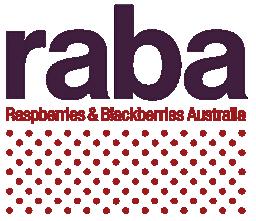
Anthony Poiner
Anthony is the Executive Director of Fresh Produce Group (FPG). FPG was established in 1991 and is a business committed to sourcing, growing and distributing the freshest quality produce in Australia. The business is one of Australia’s largest and most innovative produce suppliers and includes farming operations producing grapes, citrus and berries. Anthony has over 10 years’ experience in the fresh produce industry and has represented both his business and the wider industry in a number of industry roles, including as Treasurer for the Australian Blueberry Growers’ Association and as a Committee Member for Raspberries and Blackberries Australia.
Gavin Scurr
The newest member of the Berries Australia board is Gavin Scurr from Pinata Farms based in Wamuran, Queensland. Piñata Farms is now Australia’s largest pineapple producer and the only one to supply fresh pineapples all year. They are also proud to be among Australia’s leading producers of summer and winter strawberries. Pinata Farms holds the rights to grow and market specialty Honey Gold mangoes between November and March. Along with joint venture partner, BerryWorld Group, Pinata Farms produces specialty berries for BerryWorld Australia. Gavin is the Managing Director and a seasoned fresh produce grower and industry leader respected for farming innovation and commitment to quality. He is a former chairman of the Australian Mango Industry Association (AMIA), a Committee Member of Raspberries and Blackberries Australia (RABA) and an active member of the Australian Fresh Produce Alliance (AFPA).
CURRENT BERRIES AUSTRALIA BOARD MEMBERS
4
Gavin Scurr, Pinata Farms Richard McGruddy, Queensland Berries
Simon Dornauf, Hillwood Berries Jamie Michael, Ti Produce
Andrew Bell, Mountain Blue Christian Parsons, Costa Group
President's Report
Jonathan Shaw | 0418 758 268 | president@abga.com.au
This is my last column as President of the ABGA having stepped down from the committee at our October AGM. I know my successor Andrew Bell will slot seamlessly into the role, but I wanted to take this opportunity to reflect on my time with the ABGA and the blueberry industry.

I first came onto the committee ten years ago at the invitation of Peter McPherson and Ridley Bell to drive the Association’s market access activities. China was then seen as the market access priority and a major export opportunity. Despite the warnings from other industries that gaining market access was a slow process, I launched myself into the project with full expectations that we would achieve re-opening of Japan and gain China within five years. Whilst China and Japan are still closed to us, for the first time we are now an active negotiation priority in a key Asian market (Vietnam). This is a testament to the advocacy and investment by the ABGA and Berries Australia on market access and I am told export may start by 2024 at the earliest. This is a very exciting development for the industry.
Whilst developing overseas markets is important, increasing domestic consumption is critical to the success of the sector. The ABGA continues to lead a successful marketing campaign, which will continue through to 2023. The goal of the campaign is to drive consumption without impacting price. Whilst this season has seen lower supply, the marketing campaign is taking a long-term view on building customer loyalty.
Ensuring high quality berries is also a key component of driving consumption and consumer loyalty, and this is perhaps an area of focus in future years.
One of the major changes in my tenure was the establishment of Berries Australia. I am firmly of the belief that we can achieve far more by working together and Berries Australia has enabled all of the berry categories to lift their game in terms of advocacy and service delivery. Whilst it is sometimes easy to question the value of industry associations, we need them to fight for us and communicate with us during difficult times such as the COVID-19 pandemic and recent Varroa mite incursion.
I have very much valued my time at the ABGA, particularly the camaraderie of my fellow committee members. It is a myth that the Association is dominated by the “big end of town”. As a smaller grower myself I have valued the expertise of the bigger players but have also observed their whole-of-industry focus and I have certainly made the needs of smaller growers front and centre of discussion. It is easy to throw rocks from the sidelines, and so I strongly encourage growers of all sizes to become active in the committee.
I leave at a time when the Association is in excellent shape, with strong membership, a very healthy balance sheet and financial position, strong engagement with growers and a highly talented, dedicated and knowledgeable committee and executive ready to take the Association forward to meet tomorrow’s challenges.
I wish the new committee the very best of success in promoting the interests of Australian blueberry growers and I also wish all growers ongoing success in their farming businesses.
5 INDUSTRY
President's Report
Richard McGruddy | 0408 763 804 | richard@berryq.com.au

Here we are in AGM season, and I am pleased to once again serve the Rubus industry as the President of Raspberries and Blackberries Australia (RABA). At this year’s AGM we welcomed Rob King from Costa and farewelled Christian Parsons. I would like to thank Christian for all his efforts on behalf of the broader industry.

This has been a big year for RABA which included holding the ballot to amend the levy from 12c to 4c per kilo and, of course, dealing with Varroa mite.
The levy amendment is working its way through the system, and we are about to make the formal recommendation to the Minister and commence the thirty-day objection period. I feel confident that we have consulted thoroughly, but if anyone does not support the levy amendment then this is your chance to make a formal objection. In terms of when the new levy will be implemented, the best-case scenario is that it will begin from next financial year, but the amendment requires ratification in Federal Parliament which can be a slow process.
Varroa mite has been another area of significant activity with Berries Australia representing RABA as part of the formal response process. I understand that it has been a very stressful period for the growers in the red zone, but I am pleased that through the hard work of Tyler Scofield, Rachel Mackenzie and Melinda Simpson we were able to facilitate a solution with native bees. RABA also made a financial contribution to supporting the native bee solution.
We will continue to work closely with the NSW DPI to minimise business disruption from the Varroa response. In conjunction with the AGM, the RABA committee also participated in a joint meeting with Hort Innovation and the Rubus Strategic Investment Advisory Panel (SIAP). It was a productive meeting but with more than $4 million of unmatched funds sitting in the levy fund we are keen to push for more projects on the ground delivering back to the levy payers. Berries Australia is working on a new consultation system with Hort Innovation to streamline consultation and fast-track project delivery.
I am really pleased to note that we have had Mark Salter - our Rubus IDO - in place for a year now. It is great to get our own technical specialist and I am hopeful that in the next iteration of the project Mark can get around to all of the Rubus growing regions and identify areas that need extra support.
Obviously, a wrap-up of the year would not be complete without mentioning BerryQuest. It was a great event with high quality speakers and excellent networking opportunities. Some of my team were fortunate to receive a bursary to attend and participate in the Emerging Leaders Program (funded by RABA) which they really valued. I know the Berries Australia team is looking to expand the leadership program for the next BerryQuest and it would be great to get more emerging leaders from Rubus involved.
It has been a tough few years across the board for horticulture and I wish all of our growers a relaxing and not too wet Christmas and a great year in 2023.
6 INDUSTRY BERRY AUSTRALIAN JOURNAL SUMMER 2022 EDITION 13
Chairman's Report
Simon Dornauf | 0408 681 206 | simon@hillwoodberries.com.au
It is hard to believe that this is the last journal edition for 2022 and that we are heading toward Christmas. I know La Niña has made for challenging growing conditions across the country and we would all like it to be a bit warmer and a bit less wet, especially over the festive season.
The Strawberries Australia (SAI) committee has worked hard this year on behalf of our members particularly in relation to how we work with Hort Innovation to ensure the effective spend of growers’ levy funds. Historically the levy spend has been managed by Hort Innovation with advice from the Strategic Investment Advisory Panel (SIAP) and SAI has been at arm’s length.
The new leadership at Hort Innovation is working to ensure that peak industry bodies (PIB) have much greater involvement and oversight which is to be commended. Unfortunately, this coincided with Hort Innovation informing us that the levy has been over-committed due to an accounting error which included royalty funds into the levy closing balance.

SAI is now working with Hort Innovation to review levy expenditure over the longer term and ensure that the industry is spending within its means. This may require hard decisions to be made such as scaling back the breeding program.
I would particularly like to thank Vice President Jamie Michael for his forensic evaluation of the financials and the rest of the committee for their time and effort in grappling with this issue. I would also like to thank Brett Fifield and the team at Hort Innovation for their efforts to work with us to try and resolve this issue.
It is my sense that the move toward giving PIBs greater scrutiny will mean that issues like this will be more quickly identified and rectified.
On a more positive note, we are making good progress with our export aspirations, and it was encouraging to hear that Australian berries were very popular at Asia Fruit Logistica. You can see more about the Australian berry presence at this event on PAGE 64.
I am also encouraged by the positive feedback we are getting regarding the work of the team of Industry Development Officers (IDO). It is great to have a truly national team so that every berry grower has a go-to IDO. The work of this team was showcased at BerryQuest which was truly a fantastic event with heaps of relevant and useful speakers as well as plenty of good quality networking opportunities.
The committee is aware that plant quality remains an issue and we will continue to try and identify practical options for ensuring the best quality plants are available to growers at the same time remembering that the vagaries of the weather can impact all parts of the supply chain.
My family business recently expanded into Queensland which brought home to me that despite regional differences we all face similar challenges and that working together is the best way to take the industry forward.
I would like to give a big thank you to the SAI committee who have had to work through some challenging discussions over the past year. Everyone has acted professionally and with regard for the greater good and I am hopeful that we can continue to deliver back to our growers.
I wish all growers across the country a safe, prosperous and peaceful festive period.
7 INDUSTRY
Western Australia
Aileen Reid & Helen Newman, Industry Development Team, Agricultural Produce Commission



Climate
Winter 2022 delivered close to average rainfall and temperature conditions to most WA berry growing regions. The number of rainy days in the Perth region was also average, 48 days compared with 57 last winter, which came as a relief to those needing to spray. Spring kicked off with average conditions in Perth, but warmer and drier than normal conditions in the south. October was cooler and drier than normal in most areas, except Albany which received above average rainfall and average temperatures. Looking ahead for the period from November to January, the forecast is for warmer than average temperatures and slightly drier than average conditions across most WA berry growing regions.
The crop
Harvest of new season strawberries in the southern region commenced in September and came into steady production in November. Production in the Perth region started winding down in early November as temperatures warmed up and prices dropped. Harvest will continue at some sites until early December depending on temperatures and prices. For those that didn’t experience plant losses early in the season, yields and quality were comparable with previous years.
Raspberries in the Perth region had a disappointing season this year because of the heat experienced after planting. The southern raspberry season is also a little delayed, expected to commence in early December. Blackberries that were impacted by chilli thrip in the Perth region came back into production in midNovember after losing their autumn crop to the pest. Blueberries generally appear to be following their normal schedule in the greater Perth region expected to finish up in November/December. Crops in the south are a little delayed but are expected to peak around November.
Industry events
The Draft WA Strawberry Industry Strategic Plan was sent to stakeholders in November as part of the industry consultation process. The plan has a focus on improving the productivity and profitability of WA growers, improving fruit quality and consumer acceptance and providing leadership on market issues that impact profitability and sustainability. A copy of the plan can be found on the APC website: apcwa.org.au/producers-committees/strawberry
The Climate Services for Agriculture team visited WA in August to get grower feedback on an online climate tool they are developing. The tool will allow growers to search weather and climate patterns by location and commodity, to assist with medium to long-term decision making. Representatives from Costa Berries participated in the discussion alongside other horticultural industries at a small event in West Gingin. You can see the online climate tool at: climateservicesforag.indraweb.io
Strawberry growers participated in two field walks; one in August and the other in October, to look at the national breeding program variety trial in Bullsbrook with plant breeder Jodi Neal from the Queensland Department of Agriculture and Fisheries (DAF). Participants were able to provide feedback on the current selections and flag those with favourable traits. Apollo Gomez, Senior Plant Pathologist at DAF, and Jodi Campbell, Supply Chain Innovations Project Leader at DAF, also visited in October to discuss the Serviced Supply Chains II project (AM21000) and give local exporters an opportunity to participate in supply chain monitoring.
Also in October, Anthony Yewers (Berry Sweet) hosted a group of horticulture students from South Metropolitan TAFE to show them how berry production systems work and to raise the profile of careers in the industry. Lachlan Chilman (Biological Services) also spoke to the students about the berry industry and use of IPM.
8 INDUSTRY BERRY AUSTRALIAN JOURNAL SUMMER 2022 EDITION 13
The students were blown away at the advanced systems in use and the potential job opportunities as well as Anthony’s entertaining personality.
In the online environment, a webinar was held in August for WA blueberry growers and nurseries who wanted to learn more about Blueberry Rust. A big thank you to Melinda Simpson, Blueberry IDO, and Maurizio Rocchetti, Plant Supply Manager for Costa in NSW, for presenting and answering questions from the audience.

Kirsten Hall, Exports Co-Ordinator at Quarantine WA, also spoke about the ICA-31 procedure for sending fruit to South Australia and how it works in WA.
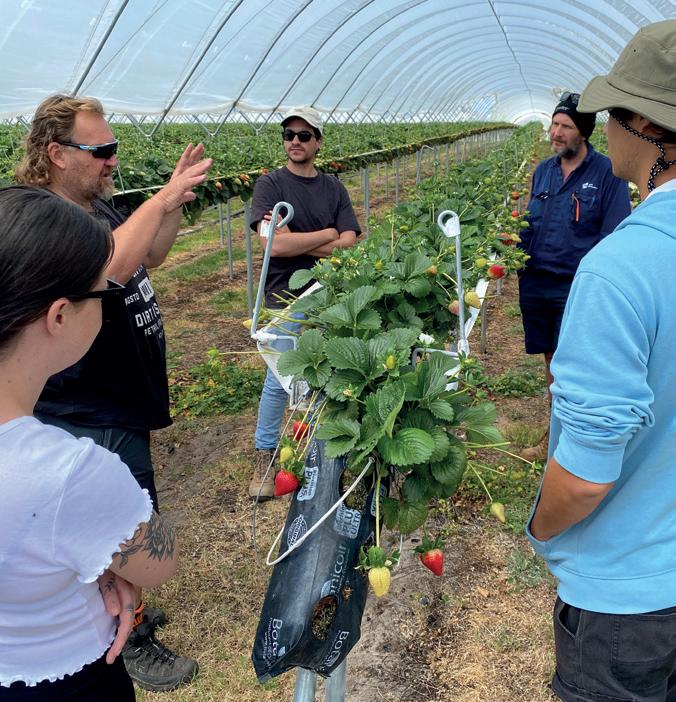
There have been several other interesting online events delivered nationally through the Berries Australia communications project, and other providers. If you have missed any of these events, get in contact with your IDO for links to recorded sessions and information packs.

9
(L) Anthony Yewers showing Horticulture students from South Metropolitan TAFE the tools he uses to manage irrigation and nutrition in his raspberry crop and (R) how tabletop strawberry production works. Photo credit: Helen Newman
(L) Hua and Truc Hoang of Hoang Le’s Strawberries participating in the national breeding program variety field walk with plant breeder Jodi Neal. Photo credit: Helen Newman
Victoria & South Australia
Dr Angela Atkinson, Berry Industry Development Officer 0408 416 538 | ido@vicstrawberry.com.au
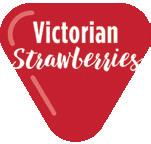

It has been a very wet and cold start to the season in both Victoria and South Australia. Both states have recorded higher than average rainfalls, with many parts of Victoria subject to record level floods. The cool temperatures have seen the season delayed in both states by up to 2-3 weeks. Wet conditions on farms have meant growers have had difficulty getting into paddocks, and there have been limited opportunities to carry out spray routines. Growers in the Adelaide Hills have also suffered extensive damage from hail storms recently.
The widespread flooding throughout Victoria has led the Commonwealth and State governments to make available a primary producer flood recovery package. Assistance includes Primary Producer Recovery Grants of $75,000 to support clean-up, relief and recovery efforts, a Rural Landholder Grant of up to $25,000 for small-scale enterprises, concessional loans up to $250,000 to restore or replace damaged assets, and support for transport costs for farmers with livestock.
The grants are available through Rural Finance, and growers are encouraged to get in contact on 1800 260 425 if they are unsure if they’re eligible. The grant guidelines are very broad and cover a range of activities.
For more information go to: www.ruralfinance.com. au/Industry-programs/victorian-primary-producerflood-recovery-package
Since the last edition of the Berry Journal, we have held a couple of events for berry growers in Victoria.
Unfortunately, the Women in Industry Dinner planned for September had to be cancelled, but we will hopefully run a similar event at the end of the season.
On Thursday 29 September a native bee pollination forum was held at Alowyn Gardens in Yarra Glen, in conjunction with Melbourne Water and Northern Yarra Landcare Network. The forum included presentations by Prof. Saul Cunningham (ANU) on the challenges of crop pollination and food production, Dr Julian Brown (University of Melbourne) on native bees in the Victorian landscape, Yolanda Hanusch (Sydney University) on promoting functional diversity of flowerfeeding insects in agricultural landscapes, and a citizen science discussion led by Ana Guizman. The forum was well attended, and very timely given the current Varroa mite incursion in NSW, and the threat to European honey bees as pollinators.
A berry biosecurity field day was held at Fresh Berry Co on Wednesday 14 September, with a wide range of presentations and demonstrations on topics such as on-farm biosecurity planning, biosecurity preparedness and pest and disease management. For more information on the day SEE PAGE 38.
The Victorian Strawberry Growers’ Association AGM was held on Friday 7 October at The Orchard at Montague, in Narre Warren. After the AGM growers got a behind-the-scenes tour of the state-of-the-art apple and stone-fruit processing facility, which was definitely an ‘eye-opener’. This new facility can process more than 280 million pieces of fruit each year, and is almost entirely automated, including a robotics controlled cold room that operates without staff.
Hopefully we will start to get a bit more sunshine, and a lot less rain, as the season gets underway, and as always get in touch if you need any help or information.
10 INDUSTRY BERRY AUSTRALIAN JOURNAL SUMMER 2022 EDITION 13
Victorian Strawberry Industry Development Committee
Queensland
Jen Rowling, Temporary Berry Industry Development Officer
0448 322 389 | berryido@qldstrawberries.com.au
The winter production season for strawberries in South-East Queensland has wrapped up and growers are no doubt breathing a sigh of relief. The combination of inclement La Niña weather conditions, the resulting disease pressure, spiraling input costs and labour shortages all contributed to yet another challenging year.
Overall, it was the wettest winter in Queensland since 2016, and the cooler-than-average daytime temperatures combined with overcast days in between regular rain events meant production was slow and disease pressure was continuously high.

The milder temperatures in Queensland towards the end of the season did see many growers extending harvest by a good month or so, overlapping with the beginning of the summer harvest season in the Granite Belt and southern states. With further La Niña weather patterns predicted over summer and potentially into autumn and winter next year, growers will no doubt be reviewing plant numbers and also the choice of plant varieties for next season based on this years experiences.

Work continues identifying and further developing control measures for the disease problems that arose during the season such as Neopestalotiopsis sp. (Neo P). Samples received from growers continue to be analysed and have also been shared with the University of Florida. Strawberry producers in the Florida growing region of the United States have experienced several outbreaks of Neo P in recent years, so a collaboration between Qld DAF and the University of Florida will hopefully provide greater insight into the pathogen and potential control measures in preparation for future wet growing seasons.
On a much more positive note, it’s fantastic to see the community support for the industry in Queensland’s key growing regions. The Sandstone Point Strawberry & Dessert Festival was held in September and welcomed thousands of sweet, strawberry and dessert loving
patrons with strawberry eating competitions, dessert food trucks, dessert cooking and cocktail making demonstrations, live music, fireworks, kid’s rides and much more. The Comiskey Group, who own the Hotel and many more incredible venues across Queensland, have been major supporters of the strawberry industry in the Moreton Bay region for many years. The first strawberry festival of its kind was held at Sandstone Point in 2015 and the event has continued to be a major drawcard to the venue over the years since.
At the time of writing, the 2nd Annual Stanthorpe Berry Festival is about to take place to celebrate the summer strawberry harvest on the Granite Belt. With accommodation sold out across Stanthorpe, its shaping up to be a huge event with celebrity chefs, farmer pop-up sales of fresh berries, berry delights of all kinds, live music and much more.
Blueberry and Rubus production in Queensland have been going well in the face of difficult conditions. Despite the humidity in tunnels generated by the wet weather and the subsequent disease pressure, the volume and quality of raspberries has been high, and blackberry production is currently booming. Blueberry production has also been good, but challenges continue including management of the labour force during adverse weather periods and, in some regions, securing an adequate supply of accommodation is problematic.
For anyone affected by the South-East Queensland Rainfall and Flooding event between 22 February and 5 April 2022, an extension has been approved for grant applications of up to $75,000 for clean-up, re-instatement activity and emergency measures. You now have until 10 March 2023 to get your application in. For more information about eligibility and how to apply, visit qrida.qld.gov.au
I’d like to wish all Queensland berry growers and the broader national berry industry a wonderful festive season and look forward to what we hope will be a stress-free season in 2023.
11 INDUSTRY
Tasmania
Mark Salter, Berry Industry Development Officer 0400 100 593 | berryido@fruitgrowerstas.org.au



The Tasmanian berry harvest is now underway throughout the state and most growers are reporting good fruit quality at this early stage despite the adverse weather. As with many areas on Australia’s east coast, Tasmanian growers have been impacted by above average rainfall, which has resulted in regional flooding and damage to infrastructure in some areas. The ongoing inclement weather although not resulting in direct losses is having significant effects on timing of the crop, which is being held back due to cool, overcast conditions.
It has been a busy time in the last few months for the Tasmanian Berry industry with lots of events happening including:
• Growers gathered at “Berried In Tas” on 2 September for a pre-season berry field day. Pest and disease management was the main theme for the day with presentations on pest and disease control, new crop protection chemicals, IPM and pollination. The event was well attended with over 40 growers enjoying the day. You can read more about this field day on PAGE 36.
• Klaas Plas from the Netherlands hosted a Strawberry Flower Mapping webinar on 20 September aimed at improving yield forecasting in strawberries. Klaas outlined the flower mapping process, which included yield predictions, truss development as well as number, height, and position of trusses.
• A Blueberry Growers Workshop was held on 23 September in Campbell Town. NSW Berry IDO Melinda Simpson travelled to Tasmania to talk on Blueberry Rust identification and prevention.
Other presenters included Jeff Harrison from NutrienAg who spoke on spray programs for blueberries and his work on defoliation trials.
Kara Barry from the Tasmanian Institute of Agriculture (TIA) outlined the latest in R&D for Blueberry Rust prevention. Andrew Bishop from Biosecurity Tasmania outlined a number of support packages which are on offer to blueberry growers including free diagnostics for suspected Blueberry Rust, promotion of benefits/profile of Tasmanian blueberries, continued research and development by TIA and provision of advice for accessing markets and property inspections to meet market access requirements.
• Jake Gaudion from RMCG held a webinar on 3 November to outline and discuss the results from a desktop review into current and emerging substrates for hydroponics including the potential for using wood fibre products as an alternative. This project will be a lead into a new 3-year research project into coir recycling and reuse. Supported through the Tasmanian Government’s Agriculture Development Fund, this project will see Dr Doris Blaesing, Jake Gaudion and the team from RMCG as the research partners working alongside Costa, Hillwood Berries, Tasmanian Berries and Exchange as industry partners. Read more on PAGE 105.
12 INDUSTRY BERRY AUSTRALIAN JOURNAL SUMMER 2022 EDITION 13
Events 8 December: Strawberry Runner Field Day at JCLM Farming, Ouse.
growers will be able to see some of the latest temperate varieties grown at Jack Beattie’s runner nursery.
Upcoming
Strawberry
New South Wales
melinda.simpson@dpi.nsw.gov.au

Following the euthanasia and destruction of recreational and commercially managed hives within the Nana Glen Varroa mite Eradication Emergency Zone, the next phase in the eradication of Varroa mite requires the complete removal of wild European honey bees from the Varroa mite Eradication Emergency Zone.
Euthanasia of wild European honey bees will be completed using a commonly available insecticide called Fipronil. Fipronil bait stations will be located and operated by NSW DPI within the 10-kilometre zone around each of the premises where Varroa mite was detected (the Varroa mite red eradication emergency zone).
Bait stations were deployed in the Nana Glen area in October, and these will be operational from late October for approximately 6 months. There will be a minimum 2 km buffer area between bait stations and the purple surveillance emergency zone, to reduce the risk of European honey bees from outside the eradication zone interacting with the bait stations. You can read the full Varroa mite update on PAGE 14.
In light of the eradication of European honey bees I ran a native bee management workshop in Coffs Harbour with Steve Maginnity from the Australian Native Bee Company.
Some of the key messages from this workshop included:
• position hives North East to take advantage of the morning sun;
• non-specific insecticides should not be used while native bees are foraging on the crop;
• not all fungicides are safe to use whilst bees are present;
• night time spraying AFTER the bees have finished foraging for the day is best practice.
For more information refer to the article ‘Using native bees as pollinators in Berries’ on PAGE 79. On another note, public exhibition for the updated North Coast Regional Plan 2041 has recently closed. The draft plan is the 20-year strategic blueprint that sets the framework, vision and direction for land-use planning on the North Coast. The draft plan aims to diversify the economy, create vibrant communities and plan for a sustainable future. It recognises the two distinctive subregions of the Northern Rivers and the Mid North Coast to ensure that they have the right homes, jobs and infrastructure in place. You can read the draft regional plan at: pp.planningportal.nsw.gov.au/North-Coast-RP
Available grants
• The Australian government netting program was released for NSW primary producers on Monday 24 October. Unfortunately, this funding has now been fully exhausted and so has been closed to new applications. You can register your interest to receive a notification from the RAA should any future rounds be announced at: industrynsw. tfaforms.net/f/RAA-Hort-Netting-Waitlist
• Special Disaster Grants: The NSW and Australian Governments have announced Special Disaster Grants of up to $75,000 for primary producers who have been impacted by severe weather and flooding from February 2022 onwards. You can apply at: www.raa.nsw.gov.au/disasterassistance/storm-and-flood-programs/sdgfebruary-2022
• Critical Producer Grants: the NSW and Australian Governments have announced additional funding to support producers in targeted industry sectors to rebuild and recover in the medium to longer term, with the aim of supporting job security, future resilience and enabling future production. This program is designed to complement the Special Disaster Grant. You can apply at: www.raa.nsw. gov.au/disaster-assistance/storm-and-floodprograms/critical-producer-grants
13 INDUSTRY
Melinda Simpson, Berry Industry Development Officer 0447 081 765 |
Varroa mite –where are we at?
Melinda Simpson, Industry Development Officer, NSW DPI
On 22 June 2022 Varroa destructor (Varroa mite) was detected in two of six sentinel hives at the Port of Newcastle in NSW, as a result of routine surveillance. All six hives were euthanised and inspected for mites. Three private hives in the vicinity of the sentinel hives were also euthanised.
Since the initial detection, other infected hives have been found through surveillance and tracing, and at the time of writing there are 103 infected premises in NSW. All confirmed cases, however, have clear links to the original detections through hive movement, or are geographically related. That said, the most recent infested premises (24 November) extends the boundary of the eradication zone as it was found in the surveillance zone in the Newcastle/Hunter area. Industry and government representatives are still confident Varroa mite can be eradicated at this stage, although there are ongoing conversations about costs.

All hives in the original eradication emergency zones areas have been euthanised and euthanasia operations continue in the remainder of the Newcastle/Hunter emergency zone areas.
The situation is changing rapidly, and information is constantly being updated on the NSW DPI website www.bit.ly/VM-NSW This is the best place to find information about, and apply for, Emergency Permits and Hive Movement Declarations to allow hive movement.
Growers using pollination services under the Hive Movement Declaration system must ensure that the commercial beekeepers they are using have the appropriate permits in place, as there are hefty fines for both the beekeepers and the growers if this procedure is not followed.
Nana Glen Wild European Honey Bee Management Plan
Following on from the euthanasia and destruction of recreational and commercially managed hives within the Nana Glen Varroa mite Eradication Emergency Zone, the next phase in the eradication of Varroa mite requires the complete removal of wild European honey bees from the Varroa mite Eradication Emergency Zone. Euthanasia of wild European honey bees will be completed using a commonly available insecticide called Fipronil. Fipronil bait stations will be located and operated by NSW DPI within the 10-kilometre zone around each of the premises where Varroa mite was detected (the Varroa mite red eradication emergency zone).
14 BERRY AUSTRALIAN JOURNAL SUMMER 2022 EDITION 13 INDUSTRY
Varroa mite emergency zone map. Photo credit: NSW DPI
To ensure the safety of people, animals, livestock and the environment this work is strictly controlled by NSW DPI, in accordance with an Australian Pesticide and Veterinary Medicines Authority permit [PER84929]. The Fipronil bait stations are designed to exclude other animals and insects, and to prevent contamination of soil and water. While the bait stations are in active use the baited area will be supervised by trained staff.
Rollout of the plan – Nana Glen
The bait stations in the Nana Glen area will be operational from late October for approximately 6 months. NSW DPI have notified registered beekeepers within proximity to where bait stations will be deployed and have directly contacted landholders where bait stations are being installed.
As per the Biosecurity Act 2015, landholders are required to allow property entry to authorised biosecurity officers to place Fipronil baits in the red eradication emergency zone if requested to do so. There will be at minimum a 2km buffer area between bait stations and the purple surveillance emergency zone, to reduce the risk of European honey bees from outside the eradication zone interacting with the bait stations.
What actions do people need to take?
All bait stations will be clearly marked with signage as per the requirements of the APVMA permit, including instructions for persons to not tamper with bait station equipment.
We encourage people to help protect Australia’s food security by contacting NSW DPI if they see European honey bee hives in the Varroa mite red eradication emergency zone at any time over the next 12 months.
Call the Biosecurity Helpline 1800 680 244 or complete the online form found at www.dpi.nsw.gov.au/varroa

Blueberry Plants
commercial growers nurseries wholesalers hobby farmers
having supplied the industry with blueberry plants for over thirty years, we can offer a large number of varieties including Northern Highbush, Southern Highbush and Rabbiteye types.
Talk to us today about how we can fulfill your requirements on plants@moonblue.com.au moonblue.com.au

pre-order winter 2023
delivery
for
Fair Farms welcomes Australian horticulture to inaugural conference
Sachin Ayachit, Fair Farms National Program Manager
Given our current labour market, there has never been a better time to come together to discuss the state of workplace relations in Australian horticulture. In October we did just that with growers, retailers, auditors, politicians, and peak industry bodies coming together for the inaugural Fair Farms National Conference & Awards.
I never would have imagined that what started out as a small concept idea for celebrating the Fair Farms program with just our growers, would grow into something involving the greater horticulture industry. Several months of planning and engaging with the industry led to a stunning roster of 13 speakers, delegates from all around Australia and a conference program that delivered on getting vital information to members of the horticulture industry.
From the moment our wonderful MC Richard Shannon started off the conference with a bang, to our first lot of speakers which included The Honourable David Littleproud MP, Executive Director of Enforcement FWO Steve Ronson, Dr James Cockayne NSW Anti-Slavery Commissioner, Rachel Mackenzie of Berries Australia –the conference room was abuzz with excitement at what was to be an informative and fun event. Special thanks to our incomparable keynote speaker Steven Bradbury for bringing energy and enthusiasm to a room full of delegates who were simultaneously amused with your humour and inspired by your story.
As topics such as audit fees, red tape, consumer demands, global pressures, lack of labour and compounded compliance were discussed, it was important to acknowledge that although we may have come from various viewpoints on the topic, fundamentally there were two things we could all agree on:
A grower perspective from the conference was this: It is a shame that growers who do everything right have to prove their behaviour with a certificate of audit. It’s an added burden and cost that we could all do without. But it’s an even greater shame that the few growers who don’t do things right, spoil the reputation of all those who do. These growers detract from our workforce and unfairly price their produce, it’s not a level playing field. These growers forced us into this space, and they need to be forced out. We need to reboot the reputation of horticulture.
It was for these very reasons Fair Farms was developed by Queensland’s peak industry body, Growcom. It is the only Australia-wide training and certification program for fair and ethical employment practices on farm.
Finally, a special congratulations to our inaugural award winners - Shane Stirling and Rachel Mackenzie who both received the first-ever Fair Farms Recognition Awards and Fair Farms Certified Growers Sunripe who took out the Fair Farmer of the Year Award. All our winners had contributed to the betterment of the program and industries approach to horticulture workplace relations and were, therefore, more than deserving of recognition.
16 INDUSTRY
Australia’s horticultural industry must have a reliable workforce
BERRY AUSTRALIAN JOURNAL SUMMER 2022 EDITION 13
The reputation of the horticultural industry must be improved




17
L-R Sunripe owners Luke & Samara De Paoli, Growcom Chair Belinda Frentz, Steven Bradbury & Growcom CEO Rachel Chambers
L-R The Honourable David Littleproud MP, Executive Director of Enforcement FWO Steve Ronson & Dr James Cockayne NSW Anti-Slavery Commissioner
I would like to thank our sponsors for supporting the Fair Farms vision. Thank you to our Gold Sponsors AUSVEG and TĀTOU, our silver sponsors Holding Redlich and Agri Talent, and our Bronze Sponsors Southern Cross Certified, Integrity Compliance Solutions, Driscoll’s, and Berries Australia.
I would like to thank our speakers – all of whom have taken time out of their day to deliver exceptional presentations and once again, thank you to our delegates for attending the event. We look forward to welcoming everyone to the 2023 Fair Farms National Conference & Awards at a date and location to be announced soon.
The Honourable David Littleproud MP L-R Sachin Ayachit, Rachel Chambers & Steven Bradbury

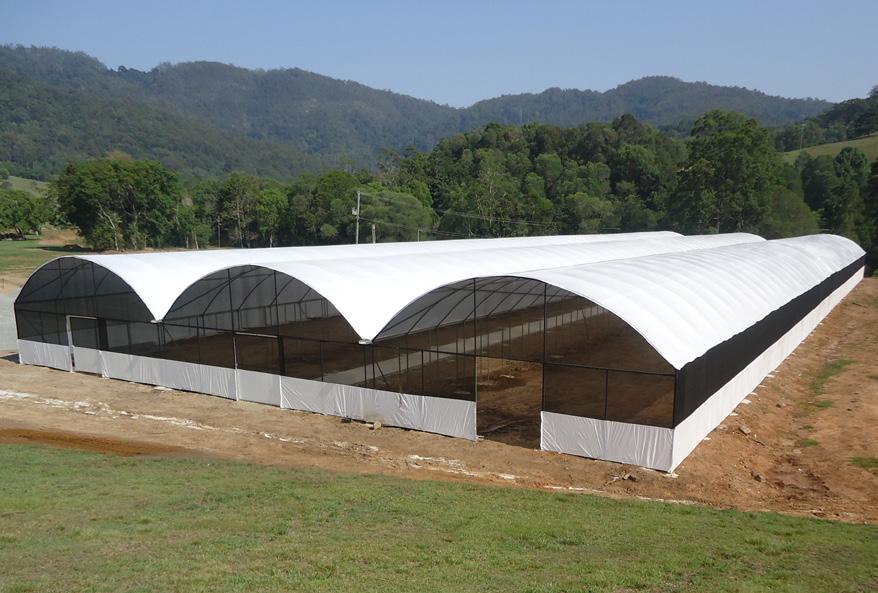


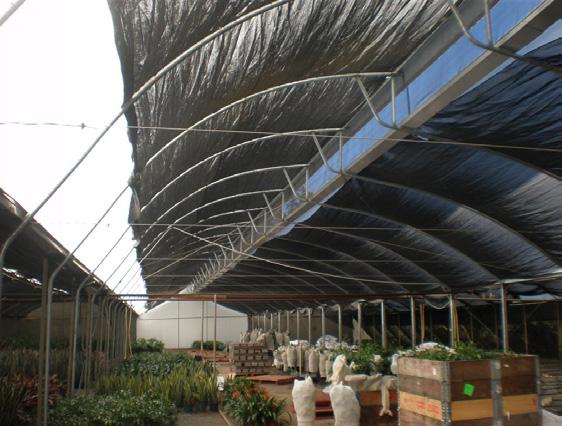




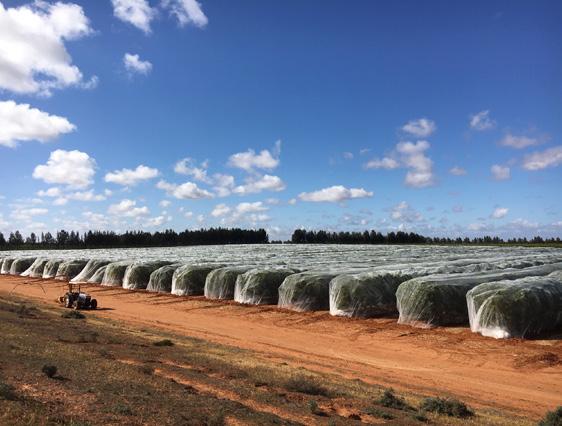
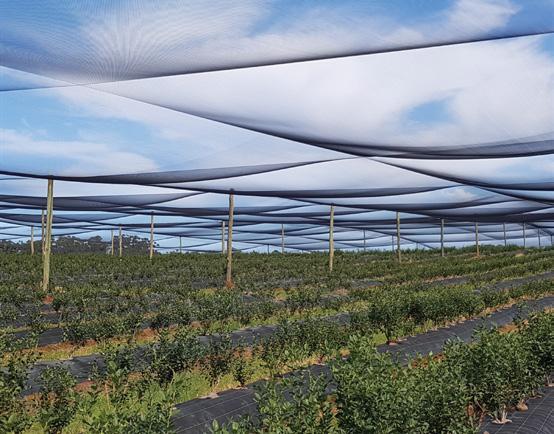
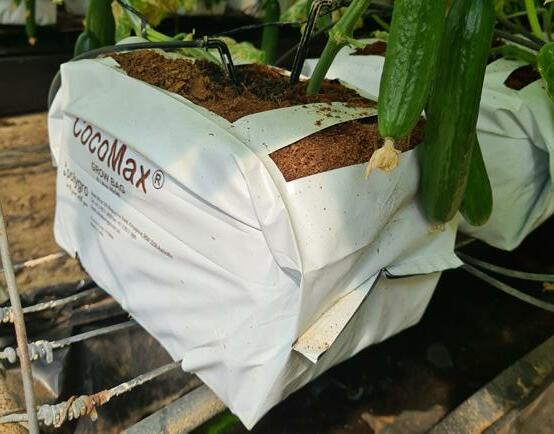
Group
Horticulture Group provides innovative product solutions to the
horticulture industry through its trading companies,
and GreenLife Structures (GLS).
trusted
partners for
in
Horticulture Group is an
that designs, manufactures and installs exceptional quality commercial
span shade structures and protective netting, as well
the
H o r t icu l t u r e SMART SOLUTIONS FOR PROTECTED CROPPING Tapex
Australasian
Polygro (Australia)
With
global brand
over 20 years
horticulture sector, Tapex
Australian-owned-and-operated company
greenhouses, cable-
as other non-chemical protective cropping solutions to
protected cropping industry.
and
• Premium Greenhouse
Shade Structures.
and Design Certified.
Sales, Design, Fabricate, Install and Service. e:
w:
p:
• National Supplier of Horticultural Products. • Tunnels, Crop Protection, Netting and Film, Landscaping products, Growbags and Accessories. e: sales@polygro.com.au w:
p:
6000 Tapex Horticulture Group 200 Kingsgrove Road, Kingsgrove NSW 2208, Australia +61 2 9502 6000 | rvallett@tapexhortgroup.com.au | www.tapexgroup.com.au
• Australian made, Engineered
•
sales@greenlifestructures.com.au
greenlifestructures.com.au
+61 2 6686 7321
polygro.com.au
+61 2 9502













































Raising Awareness of Nutrition and Berry Benefits with Healthcare Professionals
Jutta Wright, Project Manager, Nutrition Research Australia (NRAUS)
In February 2022, Nutrition Research Australia (NRAUS) kicked off a 2-year strategic levy investment project, Health and Nutrition Information for the Berry Industry (MT21000) funded by Hort Innovation using the Blueberry, Raspberry and Blackberry Funds and contributions from the Australian Government.
Why do we need this project?
Not only are berries a nutritional standout, rich in vitamins, minerals, and dietary fibre, they are also a source of numerous non-nutritive and colourful “bioactives”, compounds which give fruit and other plant foods colour, but also give us additional health benefits including reduced risk of chronic diseases. One bioactive getting more attention of late are polyphenols. Berries are one of the highest dietary sources of polyphenols and have an impressive nutrition story to tell.
Health care professionals (HCP) are a trusted source of nutrition information, that can increase awareness of both their specific health benefits and culinary uses. However, the specific therapeutic effects, bioactives, and the doses required to achieve these is not common knowledge among health-care professionals.
There is an opportunity to educate health care professionals on the latest berry nutrition science, and their culinary uses to make it relevant and practical, thereby ensuring berries are top of mind and support client recommendation.
What has been accomplished so far?
In May 2022, NRAUS launched their Berries healthcare professional Market Research Survey. The survey sought to obtain baseline data on perceptions and attitudes to be used as a benchmark for project evaluation at project end as part of monitoring & evaluation, plus gain market insights to help tailor key message development and adjust the communication plan. The survey of over 200 respondents found whilst the majority of HCPs rate themselves as confident discussing the benefits of berries, aside from being able to specify they contain vitamin C and more generally bioactives, more than half were not able to specify any other nutrients or specific bioactive types. Nearly half (42%) of respondents are not regularly recommending berries to their clients and when they do, a mix of berries or blueberries are most common, with very few specifically recommending blackberries or raspberries. Nutritional and health benefits and taste and convenience are key drivers. Not being top of mind (40%) and lack of nutritional and health knowledge for 1 in 4 are the key barriers to recommendation. Cost was reported as an issue for only a small subset of respondents (15%). Most are not familiar with growing practices of Australian berries with a large proportion (25%) not familiar at all and they yearn for more information on how growing affects nutritional quality.
20 INDUSTRY BERRY AUSTRALIAN JOURNAL SUMMER 2022 EDITION 13
The NRAUS science team, led by Dr Michelle Blumfield, undertook a comprehensive, referenced ‘deep dive’ literature review in the first half of 2022 to investigate ‘What are the health effects of Australian berries (strawberries, blueberries, raspberries and blackberries)?’ Its aim was to provide an evidence base to inform key messages in the education campaign. It highlighted berries to provide unique nutrition benefits, that differ between berry type.
One of the key findings was that berry consumption was associated with positive health effects linked to vascular health, brain health, exercise recovery, weight and ageing, and reduced risk of cardiovascular disease and type 2 diabetes. Current focus is now on planning and activating the communication and education campaign.

What is to come?
Engaging collateral is to be developed including infographics, facts sheet and an animation, all to be freely available via an NRAUS dedicated ‘Berries hub’. In December, an exciting and exclusive key opinion leader (KOL) online event is planned.
It aims to build a healthcare professional KOL ambassador and influencer network that can communicate and amplify project key messages throughout the project via their health-care professional and consumer community.
Other planned educational activities include a webinar, and dietitian and GP conferences.
21
Berries… retail insights from the world stage
BerryQuest 22 international keynote speaker, Dr David Hughes gives an overview of how recent world events have impacted fresh produce retail. Jen Rowling, Berries Australia
BerryQuest 2022 welcomed the always insightful, engaging and entertaining Dr David Hughes as international keynote speaker for the conference held in July this year at the Gold Coast. Dr Hughes is an Emeritus Professor of Food Marketing at Imperial College London, and Visiting Professor at the Royal Agricultural University, U.K. Also known as “Dr. Food”, he is a much sought-after speaker at international conferences and seminars on global food industry issues, particularly consumer and retail trends. This is a summary of his presentation from the conference.
Dr Hughes is an expert on the effect that global events have on food supply and prices. The last two to three years have seen a pandemic, the invasion of Ukraine and record food price inflation, but Dr Hughes was quick to point out that these events are not unprecedented. A pandemic wiped out one-third of Europe some 400 years ago. Russia annexed Crimea from Ukraine in 2014 and food price inflation is currently at a similar level to what it was around 1973. The increase this year has been quite spectacular at 23% higher in June 2022 than it was in June 2021, but not unprecedented. It will come down, but it will happen again.
Prices have been driven upwards partly due to the pandemic and partly due to the war in Ukraine, but it has also been affected by China who continue to increase their share of food imports. This may not directly relate to berries, but a food price inflation rate of anything over 15% will have a significant impact on all commodities.
Food price inflation is also being heavily impacted by the increase in farm input costs (fertiliser and fuel), food ingredient prices and general production costs. In the UK, farm input inflation has reached 24% with production expected to reduce as a result. Inflation is also being exacerbated by more than 23 countries who have imposed export restrictions in an attempt to protect food prices within their own country.
The significant increase in gas and electricity prices means that a high proportion of households in colder countries will be forced to decide whether they heat or eat. And spikes in food prices tend to signal political turmoil with new governments formed during food crisis events, particularly in emerging countries where over half the household income is spent on food.
What does food price inflation bring at a retail level?
Competition is intense at a retail level in the UK. The UK has one of the most competitive grocery markets in the world, with over 12 major retailers. In Australia the situation is dramatically different where Woolworths and Coles combined have 66% share of the total grocery market, with Aldi rapidly gaining ground. In the UK, the big supermarkets are on a price offensive to prevent loss of market share to the hard discounters such as Aldi and Lidl. The big retailers are matching the prices of the hard discounters on selected products including berries, which then puts price pressure on suppliers. Retailers are resisting putting up prices despite the major escalation in input costs at the farm level. This is not sustainable, but it will hurt suppliers in the meantime. In Figure 2 from Dr Hughes’ presentation, you can see the trends occurring in the UK in fruit retail value market share for a major supermarket (Tesco) versus two of the hard discounters (Aldi and Lidl). Tesco’s market
22 INDUSTRY BERRY AUSTRALIAN JOURNAL SUMMER 2022 EDITION 13
Figure 2. Fruit retail value market share comparison for leading retailer Tesco with hard discounters Aldi & Lidl.

Source: Kantar UK, *52 weeks to 12 June 2022

23
Figure 1. China food imports by year. Source: General Administration of Customs of China
share value has dropped a little, whilst the two hard discounters have increased and are expected to continue this increase over the next 2 to 3 years up to a combined 25% of the fresh fruit market, which will in turn put more pressure on suppliers.
Big supermarkets require sales growth. Without sales growth, they will fall over and major supermarkets are concerned about income-constrained shoppers converting to hard discounters such as Aldi.
In Figure 3, you can see that the average household income of the highest 20% is $280,956. The lowest 20% is just $24,336 – a big difference. Over the next 12 months, it is expected that a minimum of 40% of Australian households will be struggling and our major supermarkets do not want to lose these customers to Aldi.
At a recent Conference that Dr Hughes attended in Slovenia for the European Bakery Industry, he came across a number of key takeaways that can be applied to the fresh fruit market which shows the very similar issues being faced across the globe and across industries:
1. Just-in-case inventory management is emerging, rather than just-in-time. In pre-covid times, inventory management was all about the efficiency of the supply chain i.e. as things ran out, it was efficiently re-stocked. Now, due to food insecurity and supply chain problems, efficient re-stocking is not happening, so additional stock has to be ordered just-in-case.
2. There has been a reduction of single source suppliers, to ensure that options are available for supply should a problem from another supplier be encountered.
3. Shorter and more local supply chains are being used.
4. Retailers are reducing the breadth of product range for many categories.
5. There has been an acceleration of rationalisation of smaller/artisan bakeries, which has the potential to happen for smaller berry growers.
6. Hollowing out of the middle market. There is strong demand in the low-cost, value segment but top income earners still want the good stuff and may in fact buy more. This, in effect, may squeeze out the middle market.
Figure 3. Infographic which explains the current distribution of incomes and wealth across Australian Households.
Source: ABS, McCrindle

24 BERRY AUSTRALIAN JOURNAL SUMMER 2022 EDITION 13
Changes in shopping trends
In the UK, some of the key shopping trends for 2022 include:
Divided shoppers Reactive shopping
The ‘Haves’ and ‘Have-Nots’
More shopping around looking for good prices; even high-income households are on the lookout for good deals on the products that they choose to consume
Growth of disruptors Value for time Do it for me
New routes to the consumers which have emerged at an accelerated rate
Faster, more convenient solutions for shopping
Show me what action you’re taking on sustainability and health
16% of groceries are now purchased online in the UK but with online shopping consumers often order the same thing that they did last week. They don’t browse for new ideas and different things as they would in-store. This makes products such as new or premium lines somewhat difficult to sell.
India has introduced a great concept where people can shop online for fresh fruit and vegetables, but then choose the items themselves from a grocery van that will pull up in front of their house (Figure 4).
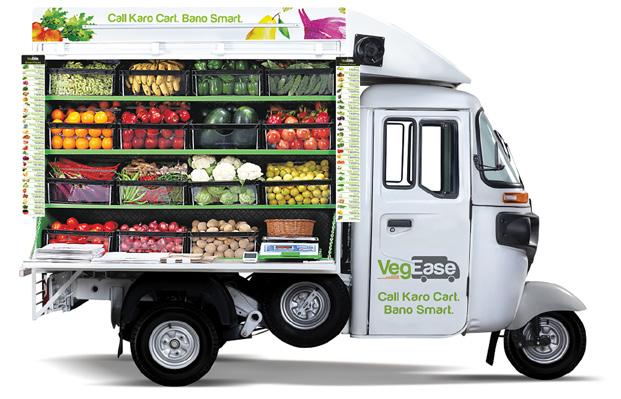
Figure 4. The VegEase service has recently been launched in Delhi, India with plans to franchise the concept across the country. Photo credit: VegEase
Technology in grocery retailing has accelerated over the past five years, and high-tech shopping systems like ‘Amazon Go’ will continue to roll out and improve.
Another new concept which is very popular in the UK is 15-minute grocery delivery, which is predominantly being used by younger people for small quantities of products. As Dr Hughes describes “they are likely to use this service to order a bottle of wine and an avocado, or some berries”.
This trend may not have taken off in Australia as it has done in London, but it is worth tracking the progress of all these methods of shopping to ensure we are prepared for the changes in shopping trends that will continue to evolve.
25
‘Amazon Go’ is a chain of convenience stores in the USA and the United Kingdom, operated by the online retailer Amazon. The stores are cashier-less, thus partially automated, with customers able to purchase products without being checked out by a cashier or using a self-checkout station.
Figure 5. Gorillas, the rapid delivery grocery start-up, has teamed up with Tesco to offer a 15-minute grocery delivery service. Under the partnership, Gorillas will set up “micro-fulfillment” sites at five large Tesco London stores, where workers will pick, pack and deliver to customers on electric bikes. Photo credit: Gorillas, The Times.

Consumers are also becoming far more aware that their food purchase decisions can have a much wider impact on our world, for a healthier person and a healthier planet.
The pandemic was seen as an opportunity to eat healthier and exercise more, however it seems average body weights have actually increased, particularly in Australia and New Zealand! As a result, governments may have to start to push consumers towards healthier products for weight loss of the population, which would be a great opportunity for fruit and vegetable producers.
Across Europe, there has been the arrival of ‘Nutri-Scores’, a traffic light system to rate the healthiness of products (Figure 6). Fruit and vegetables will obviously be highly rated and over the next few years, this type of nutritional scoring system will become mandatory, as governments cannot afford the medical costs associated with an overweight population. The health benefits of berries need to be promoted as much as possible. Berries are up in the top 10 commodities for health benefits, so we need to ensure that this remains top-of-mind for the consumer.
Another traffic light system being trialed in Europe are ‘Eco-Scores’, which rate the impact that your product has on the environment (Figure 6). Three of the top four supermarkets in the UK are currently trialing eco-scores and organisations such as Compass Group will roll out eco-labels across workplace catering sites. These systems of scoring will become mandatory.
Major supermarkets everywhere are starting to make big statements about reducing their carbon impact. But 97% of the carbon impact for supermarkets is in the food supply chain which means it will be the growers who will be put under pressure from the majors to make the necessary changes to become carbon neutral. They’re also strongly promoting food that’s healthy for you and healthy for the world, including reducing water and the use of plastic packaging.
How are berries doing globally?
Blueberries are a huge area of growth, particularly in the USA. In 2022, USA per capita blueberry consumption is approx. 1kg (30% higher than in the UK) and the expectation is that this will keep increasing (Figure 7). Interestingly, market penetration for blueberries is higher in Australia than for both the UK and the USA.
Figure 6. (TOP) The Nutri-Score traffic light system for use on food packaging to communicate the healthiness and (BOTTOM) the Eco-Score allows consumers to consider the environmental impact of a product when shopping. Photo credit: openfoodfacts.org


26 BERRY AUSTRALIAN JOURNAL SUMMER 2022 EDITION 13
Figure 7. Consumption of blueberries in the USA has increased significantly since 2001.
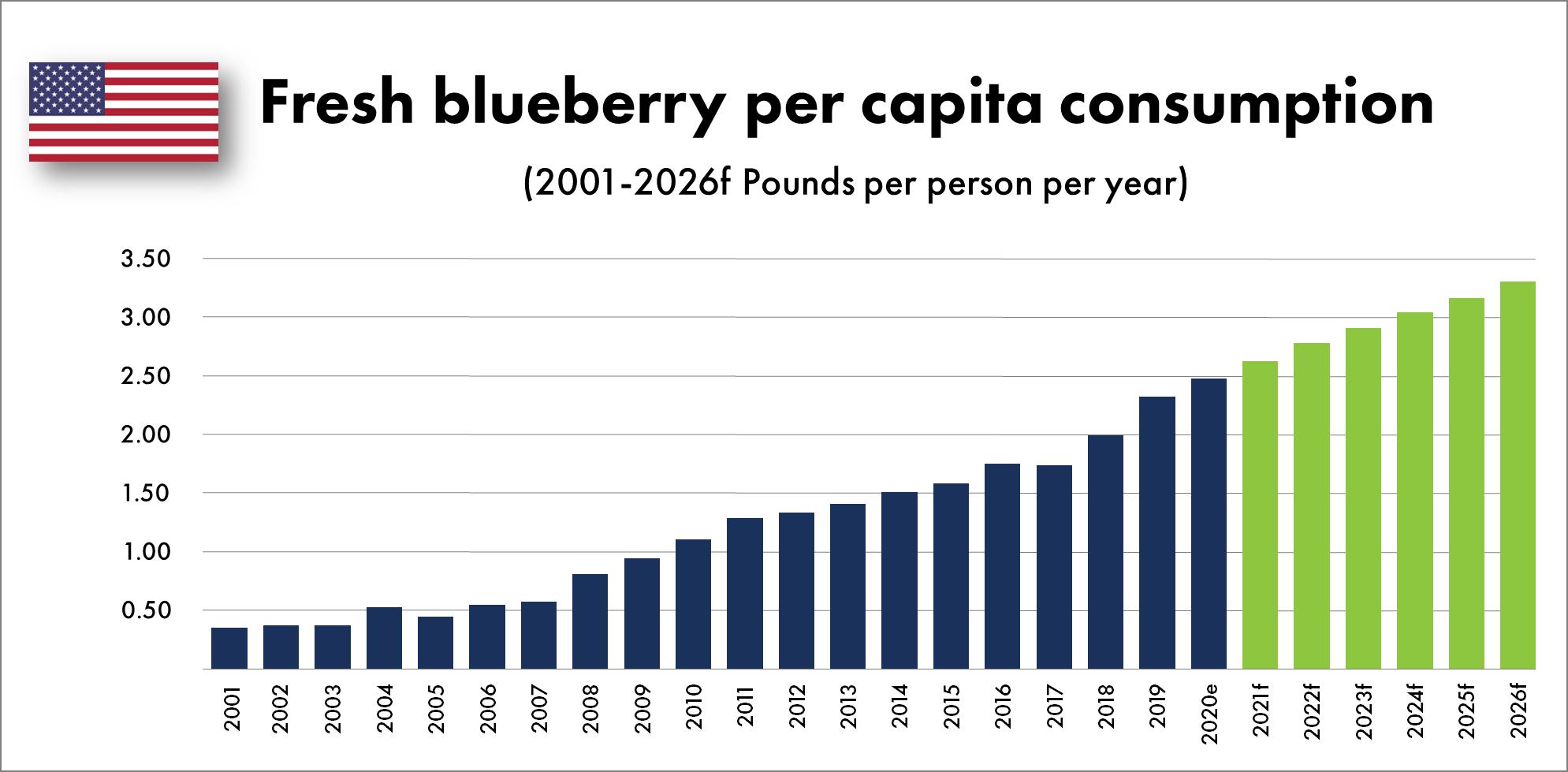
Source: USDA/ERS, Rabobank estimates 2021
Where are all these blueberries coming from? Figure 8 shows the countries of origin for blueberries hitting markets across the world.
Figure 8. Origin country of fresh blueberry exports.
Source: Trade Map, Customs Chile, Customs Peru, Customs Mexico, Rabobank estimates 2021

27
In the USA, the consumer response to price changes varies by types of fruit and vegetables. Research has shown that from a price perspective berries are relatively inelastic, meaning that if prices go up, consumers will still continue to purchase fresh berries.
Figure 9. Research by IRi in the USA shows that price changes on berries causes a relatively lower impact on volume purchased than many other fresh produce products. Source: IRi

In the UK, there has been a continual rise in fresh berry sales. Table 1 shows the value share of the UK retail fruit bowl 2007 vs 2022, with berries overtaking apples to take almost 28% share.
RETAIL FRUIT VALUE 2007
£3,671 million % Apples 18.7 Berries 18.3 Bananas 15.7 Citrus 14.2 Grapes 12.5 Tropical Fruit 9.2 Stone Fruit 6.8 Pears 4.6
Average Weekly Household Spend on Fruit £2.80 (AUD $4.90)
RETAIL FRUIT VALUE 2022 £6,112 million % Berries 27.7 Apples 15.5 Citrus 13.9 Grapes 14.2 Bananas 9.6 Tropical Fruit 9.6 Stone Fruit 5.9 Pears 3.6
Average Weekly Household Spend on Fruit £4.30 (AUD $7.50)
Table 1. Value Share of the UK Retail Fruit Bowl 2007vs 2022. Source: Kantar Worldpanel UK (July 2021/June 2022 for 2022 figs.)
BERRY
28
AUSTRALIAN JOURNAL SUMMER 2022 EDITION 13
Figure 10. After strong growth in the last two decades, strawberry sales have stabilised, but blueberries continue to grow. Source: Kantar WorldPanel (UK) *52 weeks to 12 June 2022
In terms of growth in retail sales, strawberries and raspberries have experienced good growth but now levelling off, whereas there is continued growth in blueberries. Market penetration for strawberries in the UK has stayed consistently between 70 – 80%, but you can clearly see the rise of blueberries from 2003 to 2022 and again, it is expected that this market penetration will continue to increase (Figure 11).

Figure 11. Strawberries have been a household staple for three-quarters of UK households some some time, but blueberries have only just topped 50% market penetration. Source: Kantar WorldPanel (UK) *52 weeks to 12 June 2022
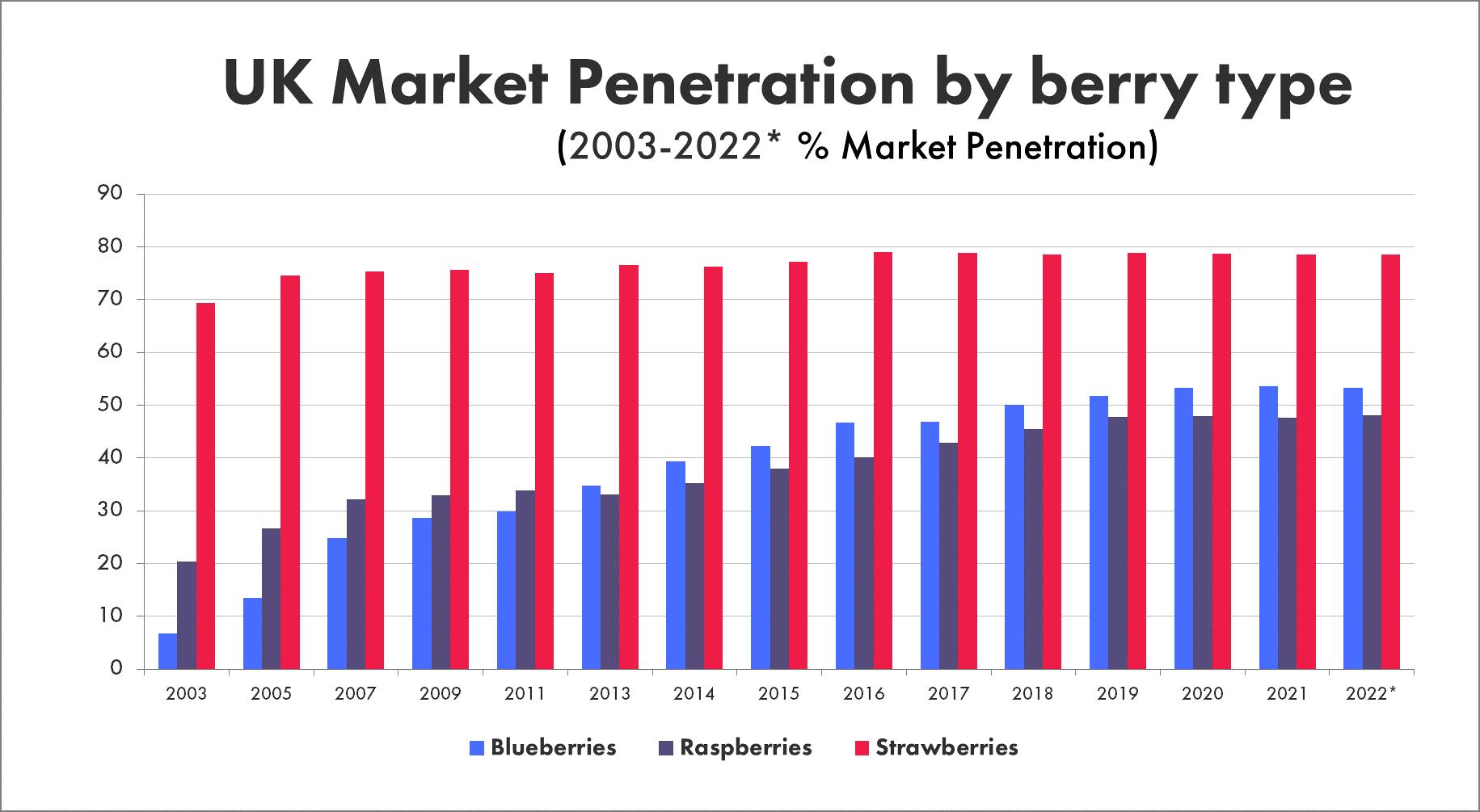
29
Table 2. Latest figures for blackberries in the UK. Source: Kantar WorldPanel (UK) *52 weeks to 12 June 2022
Figure 12. For 10 years Retail blueberry & raspberry prices have been flat as pancakes! However, UK field labour hourly costs have increased by 50%. Source: Kantar WorldPanel (UK) *52 weeks to 12 June 2022
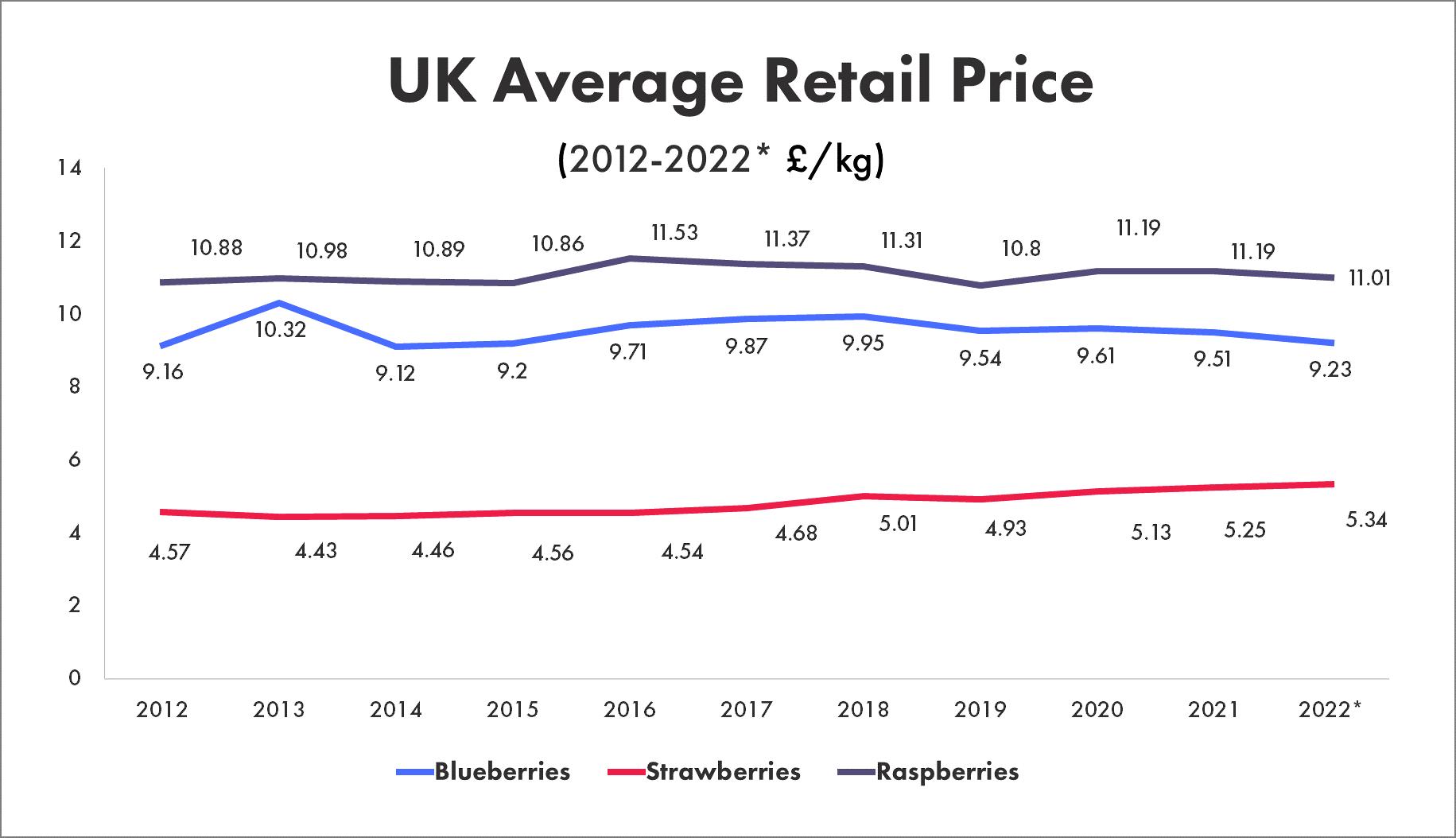
The real concern however, is that the average price for berries has gone nowhere, despite increasing labour costs and overall cost of production (Figure 12).
Over the last two years in the UK, the cost of production for strawberries has increased by an average of $1,000 AUD per ton. As for raspberry production, the increase is around $2,000 AUD per ton with no increase in retail prices. Damage is being done and as a result, we will unfortunately see growers leaving the industry.
30 BERRY AUSTRALIAN JOURNAL SUMMER 2022 EDITION 13
So, what about blackberries? Table 2 shows the increases in value, penetration and frequency experienced by blackberries in the last five years, but average retail price has decreased.
BLACKBERRIES 2017 2022* Retail Value £m 37 47 Market Penetration % 12.5 13.2 Frequency of Purchase (times per year) 4.3 6.0 Average Retail Price £/kg 11.79 11.33 AUD$2.50/125g
Marketing of berries
In terms of marketing, Dr Hughes believes there is currently insufficient product differentiation. You can’t clearly see the good, the better and the best of berries. There is not enough choice for the Haves and the Have-Nots and this needs to be improved.
Pink Lady® Apples do this well and are able to market their apples year-round at four times the price of the cheapest apple on the market (with the help of a substantial marketing budget of course).
Zespri™ is also an exceptional brand with best in class R&D partnerships to develop unique varieties, global brand development, a strong focus on consumer health particularly in Asia, supply chain management excellence and 52 week availability. There is a lot that we can learn from the best performers.
The Australian grocery market is much more concentrated with an absence of import competition from major overseas suppliers. In the UK, every week of the year, fresh berries from Africa, Spain, Latin America are available in the market and at “knock down” prices. Fresh berry demand is strong, and it will be serviced by fewer, larger suppliers.
• There is a hyper-competitive grocery retail market as supermarket chains go head-to-head with hard discounters
• Private label focus of fresh produce retailers (e.g. Tesco label) gives few suppliers branding opportunities
• Fresh berry quality and year-around availability has improved substantially over the past 2 decades
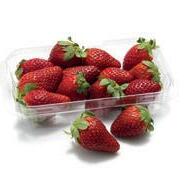
• Only limited successful berry product differentiation (e.g. Good, Better, Best) through the years
• Where there has been differentiation via varietal uniqueness (e.g. Driscoll’s Maravilla raspberries), the catch up time of competitor varieties is shortening
• Overall, the quality bar for fresh berries has moved up but berry retail prices haven’t!

• Taxpayer subsidies fuelled the early move to tunnel and table berry production in the EU. In turn, this accelerated the rationalisation of the berry producer base as capital investment to improve productivity increased sharply and labour costs increased inexorably
• Since 2020, berry input cost inflation has increased substantially further accelerating producer rationalisation
• This combination of events is accelerating consolidation of berry supply management and marketing powerhouses
• Stronger berry marketers will have the capacity to invest more in varietal R&D, brand development, productivity-enhancing technology (e.g. robots) and new production systems
31
In summary, Dr Hughes concluded his presentation with some thoughts on UK Berry Market Developments and relevance to Australia:
Frequently, as an industry, we have failed to communicate fresh berry product value to consumers. = ROUTINELY AFFORDABLE FRESH BERRIES ARE LOVELY BUT A BIT EXPENSIVE $5 = $5
And
finally… the price-value perception challenge

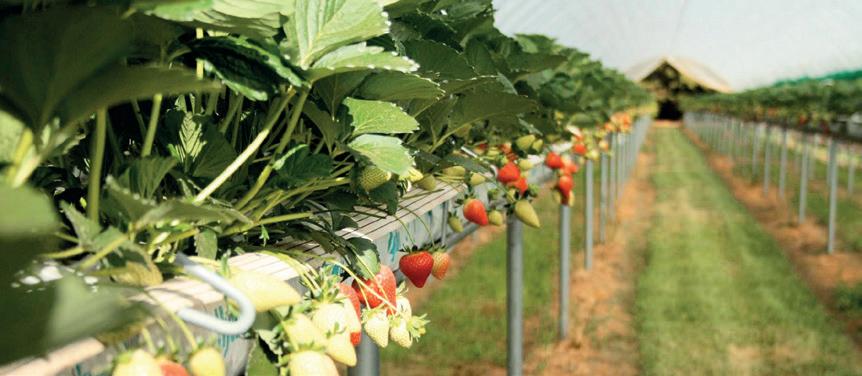









We are proud to be associated members of: Our materials are proudly UK and EU sourced. www.elitetunnels.com Ross Watt ross@elitetunnels.co.uk Mobile: +44 (0) 7841 532 652 Office: +44 (0) 1356 648 598 Australian agent James Downey jdowney@polygro.com.au Mobile: 0400 893 250 Office: +61 2 9502 6000 WE’VE GOT YOU COVERED Elite Tunnels is an established British manufacturer and global supplier of field-scale multi-span polytunnels, substrate gutter growing systems, and ancillary parts. For projects of any scale, our familyrun business will professionally handle your order – with a personal touch! Visit our NEW website to see details of our products and view drone footage of our Australian polytunnel projects! We hold stock of a variety of ancillary parts, including: C-clips • hinge-clamps sheeting-rope • rope-pullers We also stock ample rolls of plastic.
Scams affecting the Agriculture Sector
Jane Richter
• The ACCC’s Scamwatch has observed a rise in agriculture scams since the COVID-19 pandemic. According to the 2021 targeting scams report, farmers and small businesses lost over $1.5 million to scammers targeting the agriculture industry in 2021.
• An estimated one third of victims do not report scams to the ACCC and therefore the actual losses are believed to be higher.
• Scams cause great emotional distress and trauma. Anyone who suspects they have given money or details to a scammer should talk to someone they trust or seek professional support.
How tractor scams work
Fake tractor website scams
Scammers create fake websites that look like genuine online shops selling agricultural machinery.
They may use sophisticated designs and layouts, photos and brand logos taken from other websites, a ‘.com.au’ domain name and even an Australian Business Number (ABN) taken from a legitimate business.
The websites often have a physical business address listed on the website which are vacant blocks or belong to another business.
Between January 2021 and August 2022, the ACCC’s Scamwatch has received 533 reports about tractor and heavy machinery scams, including total losses of $2.6 million.

These scams were for new tractors, with scammers creating fake websites, and for second-hand sales on marketplace websites such as Facebook and Gumtree.
Second-hand tractor scams
Scammers will pose as genuine sellers and post fake ads on classifieds websites, in print classifieds, and on online platforms such as Gumtree and Facebook Marketplace. However, once a deposit is paid, the scammer usually ‘disappears’ and delivery is never made.
33 INDUSTRY
Australian farmers and agri-businesses are the targets of tractor scams.
7 tips to avoid being scammed
1. If it seems too good to be true, it probably is Scammers advertise machinery at much lower prices than what the market rate is.
2 Don’t purchase machinery if you haven’t seen it in person
Scammers will always come up with an excuse as to why you can’t inspect the machinery in person, or they will ask for a deposit first.
3. Beware if they offer a ‘free trial’ or an ‘escrow’ service
Scammers may offer a ‘free trial’ in an attempt to earn your trust. However, they would ask for a deposit to be paid first.
Scammers may also reassure customers that the deposit is paid into a third party or ‘escrow’ account, but the ‘escrow’ service is also fake and part of the scam.
4. Don’t rush into a purchase
Be cautious if the seller tries to make the sale feel urgent. For example, scammers often say that they need to sell quickly because they are in the army and about to be deployed overseas, or that their father has passed away and they need to get rid of machinery from their parent’s farm.
5. Do your own research
Look for online reviews to see other people’s experience with the business. Do your research beyond the website itself, as those reviews may be fake.
Scammers may also steal other businesses’ names and ABN details for their website. If a physical address is listed, look it up online and see if it is the correct business on Google Maps. You could also call a neighbouring business to verify the seller.
6. Be careful what personal details and information you provide
Be careful if you are asked to provide a driver’s licence, passport or home address, which may be used for identity theft. Where people reported losses as a result of a scam, more than half of them lost personal details.
7. Speak to someone you trust
If you think the sale might be a scam, get a second opinion from a family member or a friend to see what they think.
Fake invoices
Agri-businesses may be unknowingly paying fake invoices
Did you know that scammers sometimes send invoices that appear to be from real business suppliers, and you could pay them, not realising they are fake invoices until sometime later?
These are known as ‘fake invoice scams’ and between January and August 2022, the ACCC’s Scamwatch received 19 reports from farmers and agricultural businesses, with $320,572 in reported losses.
Overall, over the same period, Australians lost $15,006,570 to fake invoice scams.

The scammers may hack into the email account of a business or supplier, and send you an email saying that their bank details have changed. These scammers can make invoices look almost identical to the real ones, with the only difference being the bank account details.
In one instance, a farmer paid a scammer’s fake invoice of over $60,000, as they believed they were paying an invoice for the purchase of machinery.
Protect yourself. What can you do to avoid being scammed?
Be careful if a business tells you they have updated their bank details
• If you receive an email containing an invoice that says the supplier’s bank details have been updated, you should call them to confirm this. Do not call the phone number on the invoice, as this may have been changed by the scammers. Instead, find the supplier’s phone number from another source.
• You should also confirm via a phone call that you have the right bank details, if it is the first time you are paying money to that supplier’s account, or for large purchases.
34 BERRY AUSTRALIAN JOURNAL SUMMER 2022 EDITION 13
Once they have remote access, scammers can access personal information stored on your computer, install malicious software or use your information for other crimes, such as identity theft.
To protect yourself from remote access scams, never give an unsolicited caller remote access to your computer. You should also never give your personal, credit card or online account details over the phone unless you made the call and the phone number came from a trusted source.
General scams awareness
Two common types of scams to look out for
Phishing scams
Phishing scams are attempts by scammers to trick you into giving out personal information such as bank account numbers, passwords, credit card details or personal information.
A scammer may contact you by email, phone call or text message and pretend to be from a legitimate business such as a bank or internet service provider. For example, they may pose as a bank seeking to ‘verify’ customer records.


To protect yourself from phishing scams, do not click any links or attachments in an email unless you are certain it is from a trusted organisation. If the email asks you to update or verify your details, this should be a warning sign.
Do an internet search using the names or exact wording of the email or message to check for any references to a scam. Many common scams can be identified in this way.
Remote access scams
A remote access scam happens when a scammer gets access to your computer after convincing you to download software to fix an internet or computer problem.
The scammer will usually phone you, pretending to be a from a large telecommunications or computer company such as Telstra, the NBN or Microsoft. They may also claim to be a technical support service provider.

Report a scam
We encourage you to report all scams to the ACCC via the report a scam page www.scamwatch.gov.au/ report-a-scam. This helps the ACCC to warn people about current scams, monitor trends and disrupt scams where possible. Please include details of the scam contact you received, for example, email or screenshot. Scamwatch also provides guidance on protecting yourself from scams and where to get help. Find out more at www.scamwatch.gov.au
Find out more about scams
You can read more about these scams and other common scams on the ACCC’s Scamwatch page at www.scamwatch.gov.au

35
Tasmania: Pre-Season Berry Field Day
Mark Salter, Berry Industry Development Officer, Fruit Growers Tasmania
Fruit Growers Tasmania and Berries Australia held a berry field day at “Berried in Tas” at Carrick on Friday 2 September. Pest and disease management was the theme for the day with presentations including pest and disease control in berries, crop protection chemicals, IPM and pollination.
Opening the field day, berry IDO Mark Salter welcomed around 40 attendees and outlined some of the recent activities undertaken by Fruit Growers Tasmania, including a project aimed at improving activities in coir and plastic recycling, and ongoing access to bumble bees for pollination, and the work Berries Australia has been doing in relation to the Varroa mite incursion.
Stuart Doyle from AgVista spoke next on the major diseases in berries including grey mould/botrytis and powdery mildew. He also outlined ways to manage the environment - particularly in tunnels - to try to avoid these diseases. Stuart also discussed various spray programs and chemicals for disease control with an emphasis on proper rotation to prevent the overuse of chemical groups and avoid resistance issues.
Brenden Green from Nufarm updated growers on the latest chemicals for berries including Intervene®, a Group 9 fungicide registered for grey mould and powdery mildew in strawberries and Rubus with two major benefits: a nil withholding period and IPMcompatible. Brenden also covered some of the other products Nufarm have for berries, again reinforcing the message about the importance of rotation between modes of action (different groups) within a fungicide program. Also, many thanks to Brenden and Nufarm for sponsoring the day.
Stephen Quarrell from the Tasmanian Institute of Agriculture (TIA) presented about the benefits of having a diverse group of flowering plants (predominantly native species) in and around berry production sites to help provide a better environment for pollinators
and beneficial insects. Focusing on alternative pest management techniques and Conservative Bio Control (CBC), the research is aimed at reducing input costs and improving pack-outs through natural pest control. Stephen outlined the different forms of CBC including planting tree lines and ground covers of natives and exotics that attract both pollinators and beneficial insects. He also explained how it is important to consider flowering times when choosing plants. He also emphasised that these techniques require some investment, particularly in time to get established. Growers will need to consider putting aside some land area to establish beneficial plantings although he stressed this doesn’t need to be valuable cropping space.
Jon Finch from TIA continued the pollination theme with a talk on alternative pollinators, including Hover flies, Blow flies and many of the Native bee species. He also explained Blow flies are now available to purchase as a commercial pollinator.
Michele Buntain from TIA delivered a very enlightening and entertaining PowerPoint presentation on identifying some of the good and bad insects that occur in berries. The audience were asked to identify each of the bugs with prizes handed out for correct answers. It was interesting to note a few of the insects were not correctly identified. Michele also provided a great display of the bad bugs which could be viewed through a microscope and hand lens for closer inspection and identification.
Michele also asked growers to fill out a survey on the most important pest in their berry crops, with some interesting results.
36 INDUSTRY BERRY AUSTRALIAN JOURNAL SUMMER 2022 EDITION 13
Raspberries and Blackberries
1. Two spotted mites
2. Mirids
3. Green vegetable or shield bugs
Others that made the list included aphids, Raspberry leaf and bud mite, black vine weevil, Rutherglen bug, caterpillars and soldier beetles.
Strawberries
1. Two spotted mite & Mirids
2. Thrips
3. Green vegetable bug
So quite a similar story for strawberries, but with thrips in the mix. This is helpful - as even as the research is concentrating on Rubus IPM strategies, the findings should flow on to strawberries as well. And considering most growers produce both crops, this is extra useful. Other strawberry pests included aphid, light brown apple moth, earwigs and Portuguese millipedes.

Blueberries
It was a bit of a mixed bag for blueberries with nothing really standing out:
1. Whitefly
2. Mealybug, elephant weevil
3. Black vine weevil
Others included two spotted mite, scary spiders (for pickers), light brown apple moth and aphids. The whitefly top billing probably reflects a number of growers producing blueberries in tunnels in Tasmania. The day finished off with Fraser Harris from Bugs for Bugs giving a presentation on IPM and showcasing the various beneficial insects they supply to growers. Fraser also talked about timing and how to establish beneficials in the crop, in particular the need to take into consideration temperature and humidity when distributing beneficial insects.
Feedback received from growers indicated the day was a great success.



37
This project has been funded by Hort Innovation using research and development levies from the Blueberry Fund, Raspberry and Blackberry Fund and Strawberry Fund and funds from the Australian Government. For more information on the funds and strategic levy investment visit horticulture.com.au
Field Day attendees at “Berried in Tas” Photo credit: Mark Salter, FGT
Fraser Harris has worked as an IPM consultant for the past 6½ years helping to educate farmers about biological control options for managing pests in berries. Photo credit: Fraser Harris, Bugs for Bugs
Victoria: Berry Biosecurity Field Day
Angela Atkinson, Berry Industry Development Officer, Victoria & South Australia
On Thursday 14 September a Biosecurity Field Day was held at Fresh Berry Co in Coldstream in the Yarra Valley. The day was a joint effort by Berries Australia, VSICA Research and the Boosting Diagnostics project delivered by AUSVEG. Attendance at the day was good, despite it being the only sunny day in a week of wet weather!
The focus of the day was biosecurity preparedness and pest and disease management, with presentations on biosecurity planning, exotic pest diagnostics, pest and disease control and Varroa mite. The day was a combination of presentations and demonstrations, followed by a BBQ lunch and, surprisingly, a train ride!
The morning started with Dr Tony Gendall (La Trobe University) speaking about his work controlling Botrytis in strawberry using the novel BioClay™ technology. This work is part of a large project by the ARC research hub for sustainable crop protection, which is aiming to develop RNA-based biopesticides as alternatives to chemical fungicides and pesticides.
Dr Dylan McFarlane (VSICA Research) gave a presentation on the importance of on-farm biosecurity practices for the management of charcoal rot in strawberries.

Dylan’s work has shown a strong correlation between the increased adoption of biosecurity practices on farm and a decrease in severity and incidence of charcoal rot. This work is applicable to other soil borne diseases in any crop, and shows that every practice put in place to reduce the spread of disease helps to reduce the impact on crops.
Dr Scott Mattner (VSICA Research) spoke about his work with biofumigant crops as another tool to manage soil borne disease in strawberry.
Scott’s presentation included a demonstration of how important it is to properly break up the biofumigant crop to release the biofumigant chemicals, with Scott grinding up biofumigant species to different extents and measuring the amount of biofumigant released.
Managing fruit waste is an important part of Queensland fruit fly prevention, and Bronwyn Koll, Yarra Valley regional Queensland Fruit Fly (QFF) coordinator, demonstrated a trial system for using fermentation to kill larvae that may be present in fruit waste.
This work was done in conjunction with Box Hill Institute Biosecurity Centre of Excellence. Bron showed the system that has been trialled, and spoke about the potential and requirements for scaling up to handle large quantities for waste fruit on farm. You can read more about this project on PAGE 24 of the Spring 2022 edition of this journal.
38 INDUSTRY BERRY AUSTRALIAN JOURNAL SUMMER 2022 EDITION 13
Scott Mattner demonstrating biofumigation
Photo credit: Angela Atkinson

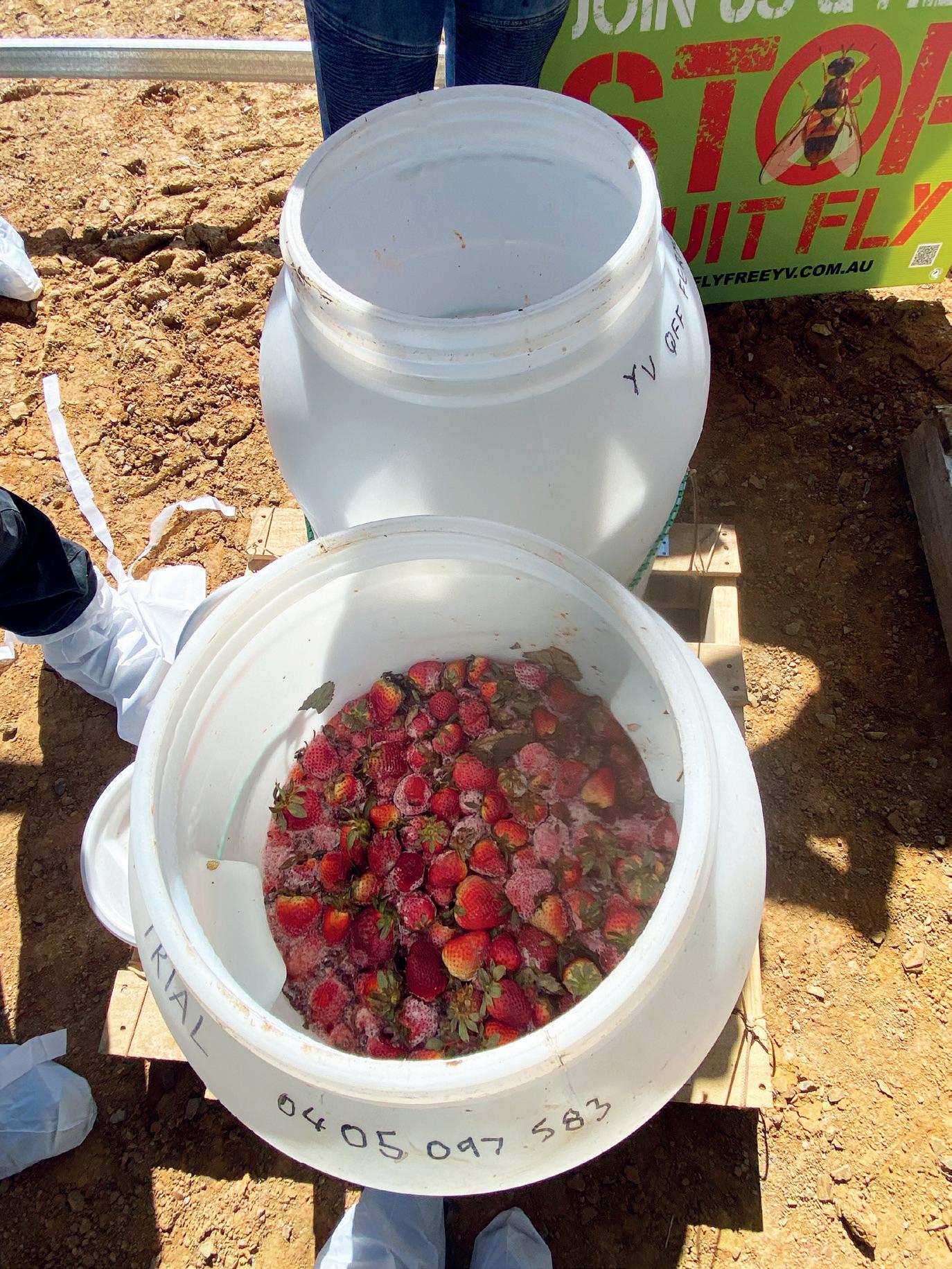
39
Fermenting berries. Photo credit: Angela Atkinson
Following morning tea, and an opportunity to look at the demonstrations, we had two talks from researchers at AgriBio as part of the Boosting Diagnostics project.
Dr Alex Piper spoke about Spotted Wing Drosophila, a high priority exotic pest of berries, and Elisse Nogarotto (via video) spoke about her improving diagnostics for Xanthomonas fragariae, or Angular leaf spot, which is an exotic pest of strawberries.
Dr Mike Hodda (CSIRO) gave a comprehensive presentation about the different nematodes present in soil and how they can affect berry crops. He and Dr Daniel Huston (CSIRO) set up microscopes to show everyone what the pests look like.
Adam Upton (Upton Agronomy) gave a timely presentation on the management of Blueberry Rust, given that it has recently been declared endemic in Victoria, and also now in Tasmania and Western Australia. Adam spoke about the various cultural and chemical methods available to control rust.
In the light of the ongoing incursion in NSW of Varroa destructor, Greg Huggins from the Emerald Regional Beekeepers gave an update on the eradication response and the risks to industry of Varroa.

Greg has been working with the response teams overseeing the movement of hives for the Almond industry and other crop pollination events in northern Victoria. At the time of writing, the NSW DPI is still confident the mite can be eradicated. You can read more about the Varroa mite eradication plan on PAGE 14.
The final presentation was by Shakira Johnson (iMapPESTS) who brought along an iMapPESTS mobile surveillance sentinel to show growers. These units incorporate smart trapping devices to monitor pests and diseases and have been trialled in a number of agriculture areas around Australia. Airborne insects and spores are trapped by the devices and can be identified using diagnostic techniques. The sentinels can potentially help with detection of exotic pests, as well as monitoring for prevalence of endemic pests to help with pest and disease preparedness. iMapPESTS is funded by the Department of Agriculture, Fisheries and Forestry as part of its Rural R&D for Profit program, along with contributions from many other organisations.
40 BERRY AUSTRALIAN JOURNAL SUMMER 2022 EDITION 13
Shakira Johnson with the iMapPESTS sentinel. Photo credit: Angela Atkinson
Over lunch attendees were treated to an unexpected model train ride around the dam and wetlands on the property! Feedback for the day was overwhelmingly positive, particularly from those who had a train ride, something I can take no credit for. Thanks again to Michael Pettinella and his team at Fresh Berry Co for hosting the field day, including his brother Tony for bringing out the train!
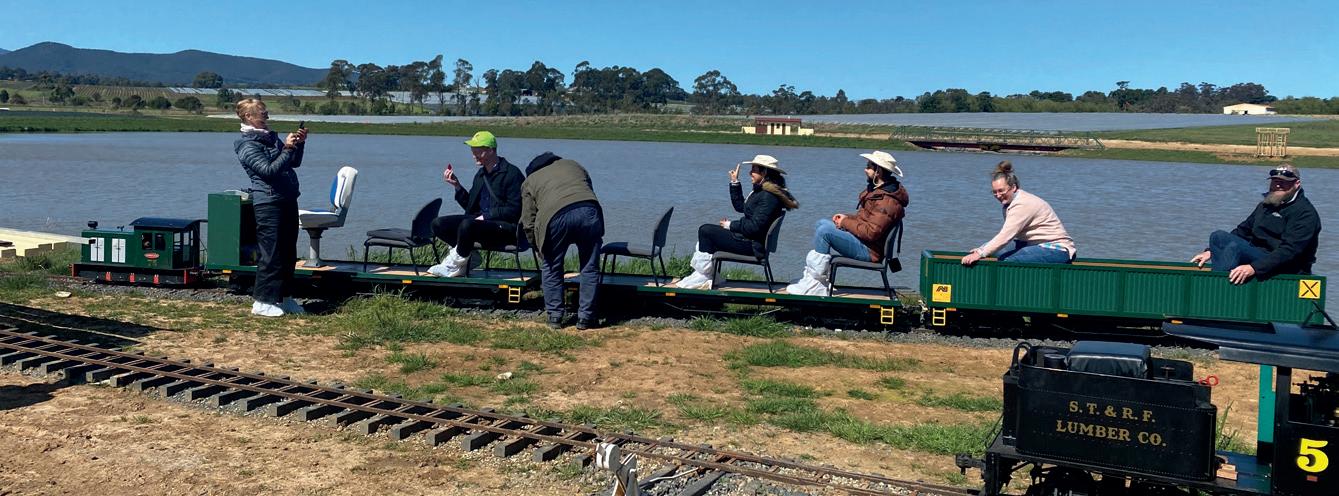 WINNE R
WINNE R


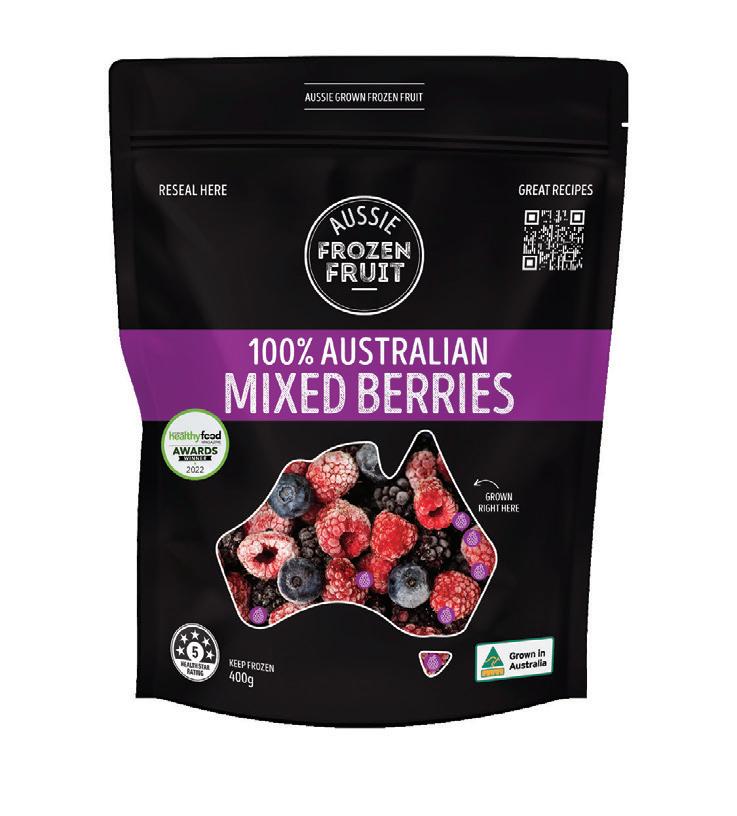
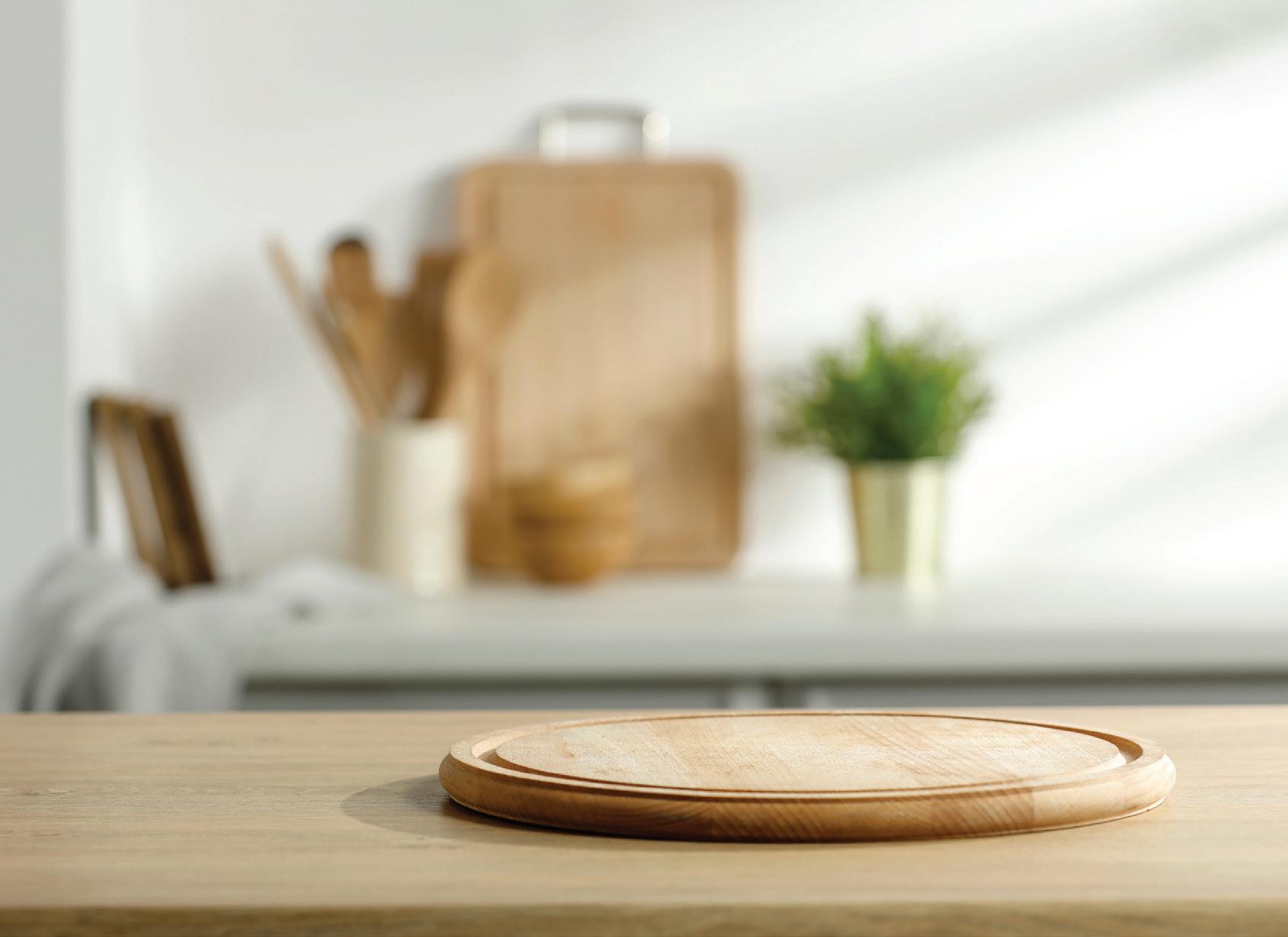
MAGAZINE AWARDS 2022 ★
Hopping on board for a train ride! Photo credit: Angela Atkinson
Soilless mixes –what’s
important
and why?
Aileen Reid, Strawberry Industry Development Officer, Agricultural Produce Commission (WA)
• The ability to monitor substrate nutritional and moisture status in almost real time is challenging traditional substrate theory.
• Reliance on the physical characterisation of mixes has assumed irrigation and fertigation schedules that are largely obsolete in today’s modern substrate production.
In the previous article we explored the key characteristics of substrates and why they are relevant to soilless production. Now we are going to take a deeper dive into what happens when you start changing things in a mix and highlight some of the research that is going on around the world into soilless mixes.
Things to consider when changing a soilless mix
Nothing happens in isolation. If you want to change your mix, or even one component of your mix it is a big step. Each mix component has its own properties, but when combined with other mix components there will be interactions to consider:
• Physical: structure stability, gradation, internal pores, retention curves (water buffer, Easily Available Water) and WOK (water uptake characteristic).
• Chemical: initial pH, buffering (pH, cations), nutrient load, nitrogen drawdown and biological aspects.
For each raw material in a mixture, the effect and interaction with other raw materials must be evaluated.
In addition to the basic chemical and physical properties there are other considerations:
• Could the raw material be carrying pests, diseases or weeds and therefore does it require a treatment such as composting or steaming/pasteurisation?
• Could it be carrying other chemicals or residues that may be harmful to the crop? Herbicide and antibiotic/pesticide residues, for example, have been found in composts.
• Could it contain other contaminants such as glass, plastic or stones? Plastics may even contain other substances such as dyes that can be harmful to plants.
• Could it have high levels of other undesirable ingredients like heavy metals? Certain barks can be high in manganese, for example.
What testing has been carried out?
If you are being offered a product or mix component, it is important to ask what testing has been done and were the tests relevant for the material? Tests for wood based mixes are not the same as those for soil. It is also important to note that not all laboratories are accredited for testing soilless mixes. ASPAC certification only ensures that labs get similar results for the same test. NATA certification ensures that the correct test is being performed. There is an Australian standard for potting mixes (AS 3743—2003) but it is not really relevant for soilless substrate mixes such as coirbased mixes. It is a different scenario in Europe where there is a privately operated scheme for substrate mixes. The RHP quality mark monitors the quality of growing media in the supply chain, from raw materials production until processing and delivery to the end user. You can find out more about the RHP scheme at: www.rhp.nl/en/about-rhp
42 INDUSTRY BERRY AUSTRALIAN JOURNAL SUMMER 2022 EDITION 13
LEVEL OF AMMONIUM ADSORPTION
More Less
mix
mix
Tuff is a relatively soft, porous rock that is usually formed by the compaction and cementation of volcanic ash or dust. Tuff substrate derived from pyroclastic volcanic material is characterised by high porosity and surface area. Volcanic tuff is a reliable substrate for soilless systems.
Growstone® is a manufactured growing medium that is made from 100% recycled glass. Growstones’ highly porous and uneven shaped aggregates provide a balanced combination of small pores inside each aggregate and large pore spaces between aggregates. This determines Growstones capacity to store water, air, and the ability to provide these to the plants.
Longevity of mix components
The longevity of a mix is a product of the interaction between its components. While materials such as perlite are almost inert, the impact of other mix components degrading can have an adverse overall affect.
For example, when pine bark degrades, the fine particles released can adhere to other materials in the mix and they will also move down and out in the profile and silt up around the edges and base. The air-filled porosity and water holding capacity of the mix will alter throughout the profile, especially near the base of the pot. Many commercial bark-based mixes only last 6-12 months. Long enough for nursery crops, but not nearly long enough for a perennial blueberry crop. Mixes comprising composts and bark, or wood-based products are quite dynamic, especially if the wood materials are fine and pH drift may occur over time.
Coir mixes
The high level of ammonium adsorption in pure coir translates to mixes containing coir. But it should be noted that when substrates are mixed, the dry mass ratio is crucial for estimation of adsorption properties of the resulting mixtures. For example, 30% coir in a volcanic tuff-coir mix does not significantly increase ammonium adsorption because volcanic tuff is comparatively heavy.
In contrast, the 50% coir in a perlite-coir mixture significantly impacts ammonium adsorption due to an almost 30 times lower dry mass ratio than that of the volcanic tuff-coir mixture (coir and perlite are much closer in terms of their bulk density).
The order of affinities of ammonium to the substrates is greatest for perlite. Followed in order by tuff, tuff/ coir, perlite/coir, coir and lastly Growstone®/coir. As expected, the k values for ammonium in the two component mixtures fall in between the values of the pure components.
Hydraulic interactions between perlite and coir
The addition of perlite to coir enhances aeration, allowing air to enter the mix more freely as compared to a mix of 100% coir. The addition of coir to perlite lowers saturated hydraulic conductivity, slowing down drainage and increasing the plant available water. The amount of water that can be extracted (after drainage) from pure coir, pure perlite and a 50:50 mixture of both is shown in Table 1.
Plant water availability (accessibility) of perlite is one of the highest of all substrates, followed by perlite/coir mixtures as shown in Table 2.
Note the large drop in easily available water as the perlite is increased to 50% in a coir/perlite mix.
43
Perlite Tuff Tuff-coir
Perlite-coir mix Growstone-coir
Table 1. Amount of water that can be extracted from coir, perlite and a coir/perlite mix.
MIX R VALUE*
Coir 100% 3.57
Perlite 100% 4.35
Coir/perlite (50:50 vv) 3.83
* R indicates the amount of water that can be extracted via exertion of a unit amount of energy by plant roots within the range of the wet-and dry-end thresholds. The higher R, the easier it is for plants to extract water.
Table 2. Physical properties of pure coir, and two coir/perlite mixes. SUBSTRATE TOTAL POROSITY % AIRSPACE % AT -10 CM EASILY AVAILABLE WATER % WATER
Suction Pressure Head (cm) -10 -10 to -50 -50 to -100
Coir 100% 91.50 20.07 32.09 7.85 18.49 13.00
Coir: perlite 75 : 25 88.50 20.92 30.88 6.64 17.06 13.00
Coir: perlite 50 : 50 72.00 23.00 22.00 6.30 8.70 12.00
Source: Adapted from Table 4 Londra Paraskevi, Angeliki Paraskevopoulou and Maria Psychogiou, 2018
In the past, characterising the physical parameters of mixes and their components has been of utmost importance. However, these physical parameters are static and should be used only as references, because the only criterion for defining them is negative water pressure head. The important role of the dynamic hydraulic properties of the substrates such as gas diffusivity, hydraulic conductivities over the range of moisture contents, their chemical composition, and the growth peculiarities of different plants was not previously considered.
During plant growth in pots or in the field, a dynamic state is formed that constantly changes over time and space. Therefore, the method, timing, and amount of irrigation water beyond the values of the physical properties of the previously “ideal substrates” plays a significant role in defining a substrate as “ideal” or not.
44 BERRY AUSTRALIAN JOURNAL SUMMER 2022 EDITION 13
DIFFICULT AVAILABLE WATER
UNAVAILABLE WATER %
BUFFERING CAPACITY
%
-100 to -1500 > -1500
A summary of current substrate research
Wood based products
North Carolina State University is focussing largely on the engineering, characterisation and utilisation of wood-based substrate components. Recent trials have been evaluating commercially available wood products from both North America and Europe. However, the longevity of wood-based materials is highly dependent on particle size and probably of more value to the nursery industry where production timelines are shorter (that is less than one year).
Read more at: woodsubstrates.cals.ncsu.edu/publications
Stratified substrates
Stratified substrates, or layering growing media within a container, is a recent innovation being led by Dr. Jeb Fields with the LSU AgCenter and Dr. Jim Owen with USDA-ARS. The concept was initially designed to improve water management by altering the physical nature of the container.
Layering substrates with high water-holding capacity on top of coarse materials to promote drainage allows re-engineering of the water distribution within the substrate system. It permits increased water holding in the upper portion of the container and reduces water holding in the lower—a reversal of a typical container system. This creates a more uniform moisture profile throughout the substrate and allows for improved water resource management, in addition to supporting improved root growth.
Stratified substrates also have the potential to lower media costs by stacking high-cost substrates on top of low-cost substrates. For example, utilising a low-cost pine bark substrate on the lower portion in highperformance, peat-based media may cut media costs with additional potential benefits.
Coir
Researchers at NC State and the University of Arkansas (Dr. Ryan Dickson) are conducting an evaluation of coconut products (fibre, chips, coir, etc.) with the goal of supporting the global manufacturers, suppliers and distributors of these substrate materials that are, and will remain, in extremely high demand.
The intention is to work with industry to further improve or advance processing and preconditioning methods and help to develop novel mixes and product formulations.
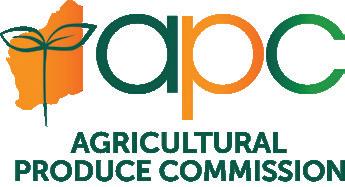
Biological properties
Research at the USDA-ARS Application Technology Research Unit and The Ohio State University (OSU) is looking at the biological properties of soilless substrates using Next-Gen (NG) amplicon sequencing techniques on soilless substrate DNA to determine the impact of substrate management practices on the microbial community.
Previously scientists have studied the bacteria and fungi in soilless substrates by observing the growth or suppression of one organism (beneficial or pathogenic) at a time. Using the NG amplicon sequencing approach, the entire community of fungi and bacteria living within the substrate can be identified.
The first goal of the project is to document the breadth of the community and how it changes over time under different management strategies. Substrate components such as pine bark, peat and compost affect the makeup and diversity of the microbial community early on. However, over time, the communities tend to become more similar regardless of substrate components, as the environment (temperature, irrigation water, etc.) has more influence on the community than the original substrate.
Longevity
As more perennial crops such as blueberries, are shifting to soilless cultivation systems, the need for longer-term substrate stability has to be addressed. Some of these crops will spend five to eight years or more in containers so the substrates used need to be resilient enough to provide the physical, chemical and biological stability needed to optimise yield and productivity throughout their production life. This work is being led by Dr. Gerardo Nunez at the University of Florida.
45
High Impact Meteorology: Using models to help predict future weather events
Helen Newman, Berry Industry Development Officer, Agricultural Produce Commission (WA)
Australia is on the receiving end of every El Niño and La Niña event in the Pacific Ocean, so it’s useful to understand what’s driving these events and how they might be predicted.
At BerryQuest 2022 Eric Snodgrass, Science Fellow and Principal Atmospheric Scientist for Nutrien Ag Solutions, explained what drives these climatic changes and the models that can be used to predict them.
This article summarises Eric’s presentation, stepping through the global weather systems that impact Australia’s seasonal climate (El Niño and La Niña and the Indian Ocean Dipole) and the Southern Annular Mode that influences our daily and weekly weather patterns. Links to climate prediction models are provided at the end.
You can watch the presentation Eric Snodgrass gave at BerryQuest 2022 online at: youtu.be/4MFPU3oyN80
What’s driving seasonal weather patterns
Some key things to remember when looking at seasonal weather events are:
• they are driven by changes in the air circulation patterns over the oceans
• strong winds upwell cold water and push warm water away
• warm air rises over warm parts of the ocean bringing an increased chance of rain
• air descends over cooler parts of the ocean leading to lower chances of rain
History lesson: The Walker Circulation
In the late 1800’s to the early 1900’s, scientists at the newly formed Indian Meteorological Department were set the task of figuring out the Indian Monsoon, predicting when it was going to start and stop and how much rainfall it would bring. After a few failed attempts, they bought in Sir Gilbert Walker, an advanced mathematician who was studying linear correlations and multi-variable regression models. He looked at all the variables that controlled the Indian Monsoon and saw relationships between fluctuations in the monsoon and changes in the Trade Winds across the Indian and Pacific oceans. The models he produced based on this observation were so good that they named the air circulation that’s above the Tropical Pacific Ocean after him - the ‘Walker Circulation’. The Walker Circulation helps explain how El Niño and La Niña events form.

46
INDUSTRY
El Niño and La Niña explained

In the neutral state (Figure 1) trade winds blow east to west across the surface of the Pacific Ocean at their typical speed of 10 nautical miles per hour (about 18km/hr). They bring warm moist air and warmer surface waters towards Indonesia and keep the central Pacific Ocean relatively cool. This pattern is known as the Walker Circulation.



During an El Niño event (Figure 2), trade winds weaken or may even reverse, breaking up the Walker Circulation and allowing the area of warmer than normal water to move into the central and eastern Pacific Ocean. This shuts down the normal rainfall processes over eastern Australia and it gets hotter and drier.
During a La Niña event (Figure 3), the Walker Circulation speeds up and pushes the pool of warmer water over northern Australia. This increases convection over the western Pacific which increases the probability of rainfall across eastern Australia.
Figure 4 shows changes in the Southern Oscillation Index (SOI) over the last twenty years. The SOI gives an indication of the development and intensity of El Niño or La Niña events in the Pacific Ocean. It’s calculated using the pressure differences between Tahiti and Darwin. Sustained positive values (in the blue zone) are indicative of La Niña events and sustained negative values (in the red zone) indicative of El Niño. Events typically begin to develop during autumn, strengthen in winter/spring, then decay during summer and autumn of the following year.
Normally La Niña events, like the one we are in right now, are double dippers, occurring for two years in a row. Occasionally they occur more than twice in a row as happened in successive years from 1998/99 to 2001/02. We are currently sitting in another La Niña pattern with a La Niña event recorded in 2020/2021 and again in 2021/22.
Figure 1. The neutral phase of the Walker Circulation showing the air movement cycle and upwelling of cool water off the east coast of South America. Source: Australian Government Bureau of Meteorology
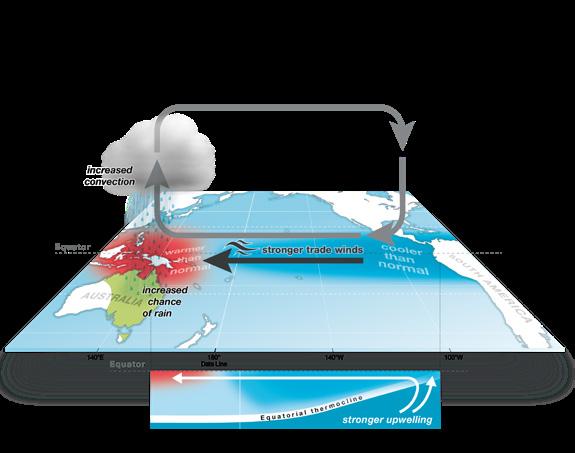

Figure 2. Air movement and ocean temperatures during an El Niño event. Source: Australian Government Bureau of Meteorology
Figure 3. Air movement and ocean temperatures during an La Niña event. Source: Australian Government Bureau of Meteorology
47
Figure 4. Southern Oscillation Index changes over the last 20 years. Sustained negative values lower than −7 often indicate El Niño events, sustained positive values greater than +7 are typical of a La Niña events.
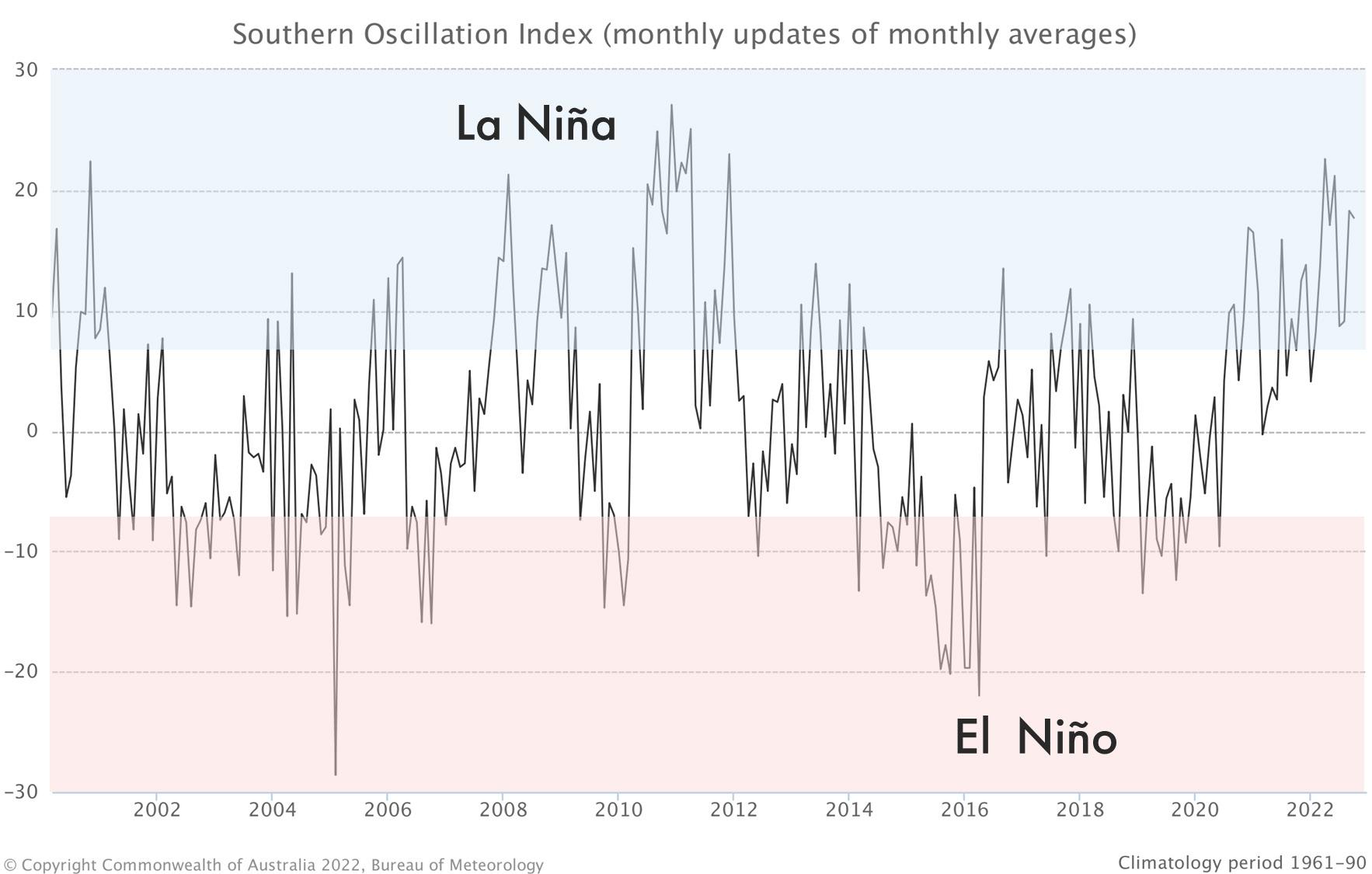
Source: Australian Government Bureau of Meteorology
A Bureau of Meteorology climatologist warns of above-average number of tropical cyclones this season driven by warmer waters to Australia’s north. Source: NASA Images

48
BERRY AUSTRALIAN JOURNAL SUMMER 2022 EDITION 13
Indian Ocean Dipole (IOD) explained

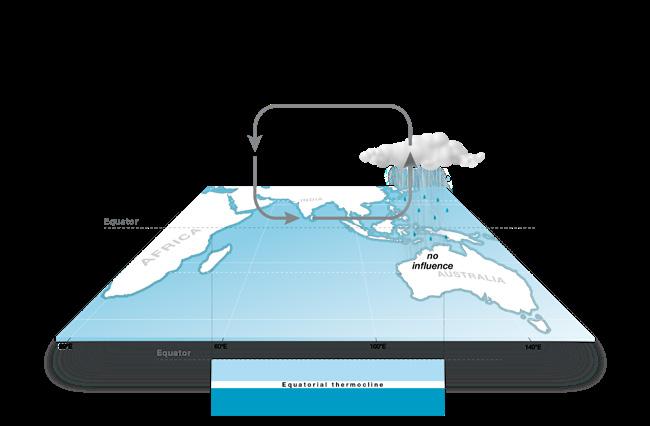
On the other side of Australia, the Indian Ocean responds in-kind to changes in the Walker Circulation, flipping back and forth in its own El Niño/La Niña-like cycle known as the Indian Ocean Dipole (IOD). Positive phases of the IOD usually correspond with El Niño events and negative IOD with La Niña events.
When the IOD is in its neutral phase (Figure 5), water from the Pacific flows between the islands of Indonesia, keeping seas to Australia's northwest warm. Air rises above this area and falls over the western half of the Indian Ocean basin, blowing westerly winds along the equator. Temperatures are close to normal across the Indian Ocean, and hence the neutral IOD results in little change to Australia's climate.

When the IOD is in its positive phase (Figure 6), westerly winds weaken along the equator allowing warm water to shift towards Africa. Changes in the winds also allow cool water to rise up from the deep ocean in the east. This sets up a temperature difference across the Indian Ocean with cooler than normal water in the east and warmer than normal water in the west. Generally, this means there is less moisture than normal in the atmosphere to the northwest of Australia. This changes the path of weather systems coming from Australia's west, often resulting in less rainfall and higher than normal temperatures over parts of Australia during winter and spring.
When the IOD is in its negative phase (Figure 7), westerly winds intensify along the equator, allowing warmer waters to concentrate near Australia. This sets up a temperature difference across the Indian Ocean, with warmer than normal water in the east and cooler than normal water in the west. This typically results in above-average winter–spring rainfall over parts of southern Australia as the warmer waters off northwest Australia provide more available moisture to weather systems crossing the country.
Figure 8 shows changes in the IOD over the last four years. The peaks seen in 2019 correspond with the hottest day on record (Australian national average temperature of 41.6ºC) on 18 December 2019 and the severe 2019 bushfires in eastern Australia. The bottom right-hand side of the chart shows where we are now, in a strong negative IOD phase with corresponding high rainfall and flooding along the east coast.
Figure 5. Air movement and ocean temperatures during an India. Ocean Dipole Neutral Phase.



Source: Australian Government Bureau of Meteorology
Figure 6. Air movement and ocean temperatures during an Indian Ocean Dipole Positive Phase
Source: Australian Government Bureau of Meteorology
Figure 7. Air movement and ocean temperatures during an Indian Ocean Dipole Negative Phase
Source: Australian Government Bureau of Meteorology
49
Cycles of air movement and resulting sea temperature changes can be seen on satellite sea surface temperature anomaly charts like the one presented in Figure 9 which was captured on 23 October. The dark blue colouration seen in the central and eastern Pacific Ocean is cold water being upwelled by the very strong trade winds blowing from the east (typical of La Niña). Warm ocean temperatures can be seen to the north of Australia, where there will be an upwelling of warm air which results in increased rainfall in eastern Australia. Cooler ocean temperatures can be seen towards Africa in the western Indian Ocean, typical of the IOD Negative Phase.


50
Figure 8. Indian Ocean Dipole (IOD) index time series. Source: Australian Government Bureau of Meteorology
BERRY AUSTRALIAN JOURNAL SUMMER 2022 EDITION 13
Figure 9. Sea surface temperature anomalies on 23 October 2022 showing strong La Niña and IOD Negative Phase patterns. Source: NOAA Coral Reef Watch
* Hottest day on record
* Severe bushfires in eastern Australia
* High rainfall & flooding on the eastern coast of Australia
What drives sub-seasonal weather patterns?
To the south of Australia, there is another wind band that influences rainfall and temperatures. These are the westerly winds that bring weather events up from the Southern Ocean. The north-south movement of this westerly wind band is called the Southern Annular Mode (SAM). Phases of SAM can last from a week up to several months and are used to predict weather conditions on a finer scale (daily up to three weeks).
Figure 10 summarises the phases of the SAM in summer and winter, how they influence rainfall and temperature patterns and how they interact with El Niño and La Niña events.

51
Figure 10. Southern Annular Mode in Australia. Source: Australian Government Bureau of Meteorology
Climate prediction models
There are many good climate prediction models used throughout the world and Australia’s own Bureau of Meteorology is considered world-class. These models predict the behaviour of the major climate drivers and provide rainfall and temperature pattern predictions. The more similar these models are to one and other, the more confidence you can have in the predicted long-range outlook.
Looking ahead at the next 12 months, international models are predicting a shift away from La Niña and movement towards a neutral pattern in early 2023 (Figure 11). This model is updated each month and can be found on the Columbia Climate School website.
The Australian Bureau of Meteorology also provides summaries of international climate model predictions (Figure 12) as well as their own predictions on their Climate Driver Update page. You can view their long-range temperature and rainfall forecasts on their Climate Outlooks page (Figure 13).

52
Figure 11. Model-based IRI ENSO probability forecast showing the likelihood of La Niña, Neutral and El Niño development. Source: Columbia Climate School
BERRY AUSTRALIAN JOURNAL SUMMER 2022 EDITION 13
Figure 12. Bureau of Meteorology presentation of international La Niña and El Niño and IOD predictions.
Source: Australian Government Bureau of Meteorology
KEEP UP TO DATE WITH THE LATEST PREDICTIONS
Eric provides fortnightly weather forecast videos that focus on what the key climate indicators are doing and how they are likely to influence weather conditions and outlooks in Australia. These updates can be accessed on the Nutrien Ag Solutions YouTube channel. www.youtube.com/channel/ UCU48qpBvX4mJAvZ1Hmi9rCw
References
International sources:
• Sea Surface Temperature Anomaly charts, United States National Environmental Satellite Data and Information Service - NOAA Coral Reef Watch Daily Global 5km Satellite https://coralreefwatch.noaa.gov/product/5km/index_5km_ssta.php
• ENSO Forecast, Columbia Climate School http://iri.columbia.edu/our-expertise/climate/forecasts/enso/current
Bureau of Meteorology sources:

• Understanding the El Niño Southern Oscillation (ENSO) http://www.bom.gov.au/watl/about-weather-and-climate australian-climate-influences.shtml?bookmark=enso
• Understanding the Indian Ocean Dipole (IOD) http://www.bom.gov.au/watl/about-weather-and-climate/australian-climateinfluences.shtml?bookmark=iod
• Understanding the Southern Annual Mode (SAM) http://www.bom.gov.au/climate/sam
• Indian Ocean Dipole (IOD) index time series http://www.bom.gov.au/climate/enso/indices.shtml?bookmark=iod

Figure 13. Bureau of Meteorology 3-month predictions (from December 2022 – February 2023) for above median rainfall and temperatures across Australia.

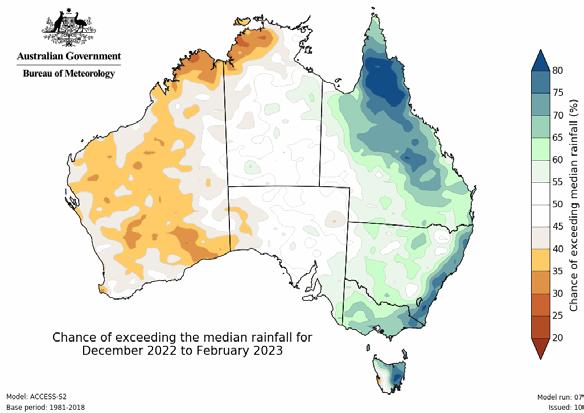
Source: Australian Government Bureau of Meteorology

• Southern Oscillation Index (SOI) since 1876 http://www.bom.gov.au/climate/enso/soi
• Climate Driver Update http://www.bom.gov.au/climate/enso
• Climate outlooks http://www.bom.gov.au/climate/outlooks/#/overview/summary
53









54
Gradients
Produce the ultimate crop with ®

Gradients

Omnia have a range of products designed to help you increase plant growth and crop yield including:

New mandatory food safety rules for Berries
Rachel Mackenzie, Berries Australia
On 12 August 2022, Food Standards Australia New Zealand (FSANZ) introduced new primary production and processing standards for berries, leafy vegetables and melons. The new requirements will take effect from 12 February 2025. The standards in the Australia New Zealand Food Standards Code are legislative instruments under the Legislation Act 2003.
You can view the full text ‘Standard 4.2.7 – Primary Production and Processing Standard for Berries’ at: www.legislation.gov.au/Details/F2022L01060
What this means is that as well as the market driven requirements –such as Freshcare and HARPS –the government has also put in place a mandatory requirement for all berry growers to meet a minimum standard with regard to food safety. We are working closely with State governments to ensure that they recognise existing schemes so that berry growers who are already certified to a compliant base scheme (Freshcare, SQF or GLOBAL G.A.P) and/or HARPS will not have to do anything extra.
Berries Australia along with AUSVEG and Melons Australia pushed back strongly on the new standard. We argued that there was no justification for singling out these crops for additional levels of regulation which are not required for other horticulture commodities. Whilst we were not successful in pushing back completely, the requirement for berries is only a ‘Notification’ and as outlined above any grower with an existing certification scheme in place should not have to do anything further in terms of compliance.
The system is a bit complicated in that FSANZ sets the rules, but it is up to each State (the relevant authority) to determine how they will assess compliance. We are pushing for a consistent system between States that places minimal additional burden on those who already have food safety compliance schemes in place, with education and support for growers who do not yet have schemes in place. These discussions are ongoing. In terms of the specific requirements, the new Code states the following:
56 INDUSTRY BERRY AUSTRALIAN JOURNAL SUMMER 2022 EDITION 13
Notification
(1) A primary horticulture producer and a primary horticulture processor must provide the specified information to the relevant authority before engaging in a relevant activity.
(2) In this section, specified information means the following information:
(a) the contact details of the primary horticulture producer or the primary horticulture processor, including the name of their business and the name and business address of the proprietor of their business; (b) a description of the activities the primary horticulture producer or the primary horticulture processor will undertake in relation to berries; and (c) the location or locations of each activity referred to in paragraph (b) that is within the jurisdiction of the relevant authority.
(3) A primary horticulture producer and a primary horticulture processor must notify the relevant authority of any proposed change to specified information provided to a relevant authority in accordance with this section before that change occurs.
4.2.7—5 Traceability
A primary horticulture producer and a primary horticulture processor must have in place a system that can identify: (a)the growing site of berries which they grew or received; and (b)from whom berries were received; and (c)to whom berries were supplied.
4.2.7—6
Inputs – soil, fertiliser and water
A primary horticulture producer and a primary horticulture processor must take all reasonable measures to ensure that any of the following inputs do not make berries unacceptable: (a) soil; (b) soil amendments (including manure, human biosolids, compost, and plant bio-waste); (c) fertiliser; and (d) water
4.2.7—7
Premises and equipment
(1) A primary horticulture producer and a primary horticulture processor must take all reasonable measures to ensure that premises and equipment are designed, constructed, maintained and operated in a way that: (a) allows for effective cleaning and sanitisation of the premises and equipment; and (b)does not make berries unacceptable.
(2) A primary horticulture producer and a primary horticulture processor must ensure that premises and equipment are kept clean, sanitised and in good repair to the extent required to ensure that berries are not made unacceptable.
4.2.7—8
Skills and knowledge
A primary horticulture producer and a primary horticulture processor must ensure that persons who engage in a relevant activity, or who supervise a person who engages in a relevant activity, have: (a)knowledge of food safety and food hygiene matters; and (b)skills in food safety and food hygiene matters commensurate with their work.
4.2.7—9
Health and hygiene of personnel and visitors
A primary horticulture producer and a primary horticulture processor must take all reasonable measures to ensure that personnel and visitors exercise personal hygiene and health practices that do not make berries unacceptable.
4.2.7—10
Sale or supply of unacceptable berries
A primary horticulture producer and a primary horticulture processor must not sell or supply berries for human consumption if they ought reasonably know, or ought reasonably suspect, that the berries are unacceptable.
57
We will keep growers advised on this matter in The
and through this industry
Please subscribe to receive The Burst – our berry industry e-newsletter
subscribe
Burst
journal.
at berries.net.au
HARPS Version 2.0
is now live
Jane Richter
• The new HARPS 2.0 launched on 17 October 2022 and retailers have started to accept the new standard from this date
• HARPS suppliers can select either Version 1.0 or 2.0 for their next audit depending on their Tier level
• Tier 1 suppliers must transition to Version 2.0 by 17 April 2023
• Tier 2 suppliers must transition to Version 2.0 by 16 October 2023
• All new suppliers must be certified to Version 2.0 from 17 October 2023
What is HARPS?
In 2012 Horticulture Australia Ltd (now Hort Innovation) initiated a project to harmonise the food safety certification requirements for the major retailers in Australia. The result of this project is the Harmonised Australian Retailer Produce Scheme (HARPS).
The initial HARPS project was funded by Hort Innovation using across-industry levies and funds from the Australian Government. The scheme is voluntary and application for certification is open to all fresh produce businesses that supply the major grocery retailers.
To determine whether your business needs to be certified to HARPS use the Decision Graphic in Figure 1.
The following major grocery retailers and foodservice providers are members of the HARPS Retailer Committee: ALDI, Coles Supermarkets, Costco, Hello Fresh, Metcash (IGA) and Woolworths.
HARPS has resulted in the alignment of major grocery retailers and foodservice providers in Australia accepting a suite of GFSI benchmarked programs so that suppliers to these businesses are able to complete a single audit that will satisfy their customers rather than multiple audits against multiple programs.
What is an approved GFSI scheme?
The Global Food Safety Initiative (GFSI) has developed a benchmark standard for food safety certification that reflects global best practice in food safety management. Businesses are not certified against this standard.
Existing food safety standards can be benchmarked against the GFSI standard. If a standard meets the GFSI benchmark it is regarded as being ‘GFSI equivalent’.
This work is accomplished through collaboration between the world’s leading food safety experts from production, retail, manufacturing, and food service companies, as well as international organisations, governments, academia and service providers to the global food industry. GFSI is facilitated by The Consumer Goods Forum (CGF), a global food industry network.
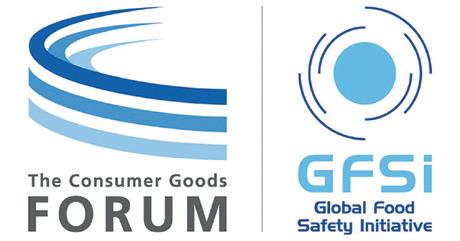
58 INDUSTRY BERRY AUSTRALIAN JOURNAL SUMMER 2022 EDITION 13
What approved GFSI schemes are available for Australian growers?
There are THREE schemes that are available for growers to choose from:
• Freshcare Food Safety & Quality FSQ4.2 www.freshcare.com.au
• GLOBALG.A.P Integrated Farm Assurance www.globalgap.org
• SQF Food Safety Code Edition 8 www.sqfi.com
What are the fees associated with HARPS?
HARPS is self-financing, owned by Hort Innovation and managed by One Direction ANZ Pty Ltd. HARPS charges a Royalty fee of $295.00 + GST for each site that is audited to HARPS, which is collected by the Certification Body on behalf of HARPS.

HARPS aims to maximise operating efficiencies to help keep the fees charged to participating businesses to a minimum.
The auditing is carried out by third party approved certification bodies (CB) who set their own audit fees. To determine which CB are approved to conduct your audit, please refer to: harpsonline.com.au/wpcontent/uploads/2022/07/Scheme-Rules-Appendix2-Version-17-June-2022.pdf
What has changed in Version 2.0?
The Version 2.0 Standard will assist suppliers in meeting retailer requirements, and relevant Australian Laws. The revised standard is accompanied by additional support tools for growers and suppliers, including guidance for each element and how to achieve compliance. The standard also incorporates guidance developed by the Fresh Produce Safety Centre.
The HARPS Retailer Committee said, “Version 2.0 of the HARPS Standard has been in development since early 2019 and reflects the foundational nature of the GFSI benchmarked standards, whilst building upon these requirements to ensure safety, quality, compliant products that customers expect when purchasing their fruit, vegetables and nuts in-shell.”
59
Figure 1. HARPS Decision: is HARPS required for my business? Photo credit: HARPS
17 OCT 2022
HARPS
Version 2.0 live
17 APR 2023
HARPS
16 OCT 2023
HARPS Version 2.0 becomes mandatory for Tier 2 Suppliers
Each element within the Standard has been reviewed, discussed and debated by the HARPS Technical Advisory Group (H-TAG), a group comprised of Tier 1 and Tier 2 suppliers, as well as a diverse group of industry representatives, including auditors, trainers and peak industry body representatives. The H-TAG have provided recommendations for improvements to the Retailer Committee. Notably, feedback received following a public consultation period closing in early 2021 and recent pilot audits to test the standard, have been important components of the development process. This has helped to ensure elements are practical and realistic and identify the most appropriate support tools to assist implementation by suppliers, and particularly Tier 2 growers.

Throughout the process, specific attention has been given to the requirements for Tier 2 growers, who are often less well-resourced than Tier 1 suppliers.
This includes detailing which elements are relevant to Tier 2s, guidance for growers currently using Freshcare as their GFSI benchmarked standard and providing a 12-month transition period (instead of the six-month timeline for Tier 1s).
Following the 17 October launch, Tier 1 suppliers will have six months to transition to Version 2.0, with a mandatory transition date of 17 April 2023. Tier 2 suppliers are permitted 12 months to transition, with a mandatory transition date of 16 October 2023.
Any new suppliers to HARPS from 18 October 2022 will require an audit against the Version 2.0 Standard. The graphic below provides an overview of the launch date and transition timelines for Tier 1 and Tier 2 businesses.
In addition, short and easy-to-follow training guides have been developed to help businesses update their existing QA processes and systems to the Version 2.0 Standard. Transition training will be available on the HARPS website.
17 OCT 2023
If you require more comprehensive training, you can visit the training page on the HARPS website to find a trainer in your state or capital city.
Tristan Kitchener, from One Direction ANZ, the entity responsible for the ongoing management of HARPS said, We’re delighted that the HARPS Retailers continue to support the process of working collaboratively to accept a single common standard, rather than their own specific standards, given the non-competitive nature of food safety and the need to meet legislative requirements. There are significant efficiencies gained by having one audit that satisfies multiple retailers’ requirements and having a business model established whereby producers and industry can engage directly with retailers as a collective group.
The Version 2.0 Standard, updated Scheme Rules and other Technical Documents, including easy-to-use templates, are available in the Document Library on the HARPS website.
For further information or to raise an enquiry, go to www.harpsonline.com.au or call the HARPS Helpline on 1300 852 219
60
Version 2.0 becomes mandatory for Tier 1 Suppliers
BERRY AUSTRALIAN JOURNAL SUMMER 2022 EDITION 13
All suppliers are audited against the HARPS Version 2.0 Standard
Be alert for Cane Toads
NSW Dept of Primary Industries Invasive Species Biosecurity Team
In October 2022, two Cane Toads were found and reported by a berry producer near Coffs Harbour. The toads were found at the premises and are believed to be associated with recent deliveries of nursery plant material that originated from Queensland.
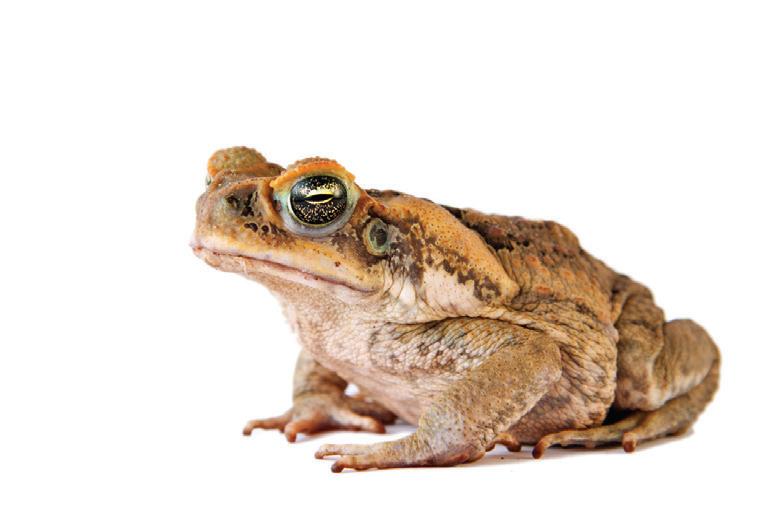
Despite Cane Toads being widespread in Queensland and areas of north-eastern NSW, Cane toads are considered a serious non-native invasive pest in NSW. A Cane Toad Biosecurity Zone exists in all areas of NSW except a portion of the north-east of the state.
The management of existing non-native invasive animal populations and preventing the introduction and establishment of new non-native animal species are key concerns for the NSW Department of Primary Industries (NSW DPI).
Cane toads have the ability to cause devastating impacts on our communities, native wildlife and ecosystems due to their ability to spread to new areas, use limited natural resources and to poison animals that try to eat them.
Cane toads can be accidentally transported to new locations via freight, including nursery products such as mulch and plants.
NSW DPI would appreciate the assistance of horticultural industry members, including berry producers, that purchase plants and other materials from Cane Toad-infested areas (such as Qld and northern NSW), to be vigilant when receiving incoming deliveries by checking pallets, plants and containers that may accidently host a Cane Toad.
The Cane Toad Biosecurity Zone (Figure 1) consists of the buffer areas and cane toad free area. The green zoned area is where cane toads are established, there is no need to report cane toads in this zoned area. The amber and red zones are where cane toads are not established and if cane toads are suspected in these areas they should be photographed, contained, and reported.

Look out, CANE TO AD S may be abou t
Protect what we love...

If you think you have seen a cane toad:
Contai n it - don’t harm it Take p hotos to assis t
Repo r t i t
KEY FEATURES OF CANE TOADS:
Figure 1. Cane Toad Biosecurity Zone
Figure 2. How to identify a Cane Toad
Photo credit: NSW DPI www.dpi.ns w.g ov.au/c an e-t oa d
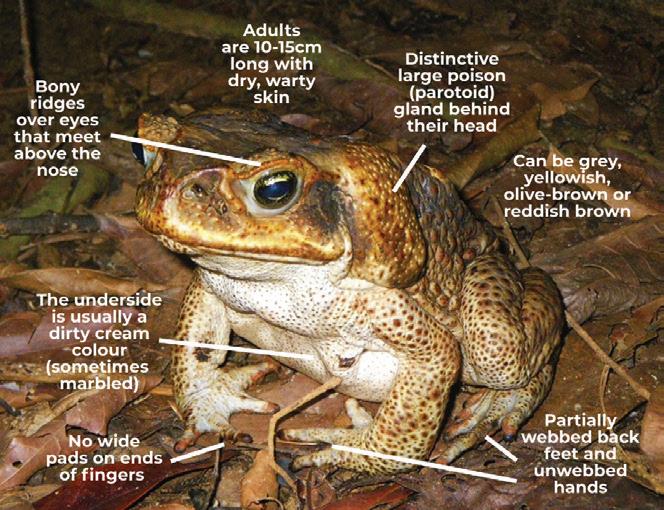
61
16864-06/21
Scan the QR code for mo re det ail s
Detecting and reporting Cane Toads
• Become familiar with the identification and key features of a Cane Toad (Figure 2).
• Quarantine your deliveries in a secure holding area until the goods can be inspected for Cane Toads and other unwanted pests (as part of your biosecurity inspection process).
• Thoroughly inspect and look through pallets, potted plants and other materials for Cane Toads.
If you suspect that you have found a Cane Toad:
• Capture the animal and place it in a container with a lid
• Take a photo of the suspect animal to assist with the identification and response
• Report the suspect animal to the NSW DPI Invasive Species Biosecurity team as soon as possible by one of the following options:
— Online: Complete the biosecurity concern reporting form: forms.bfs.dpi.nsw.gov.au/ forms/9247
— Email: invasive.species@dpi.nsw.gov.au
— Phone: NSW DPI Biosecurity helpline 1800 680 244.

• Keep the suspect animal in a cool, secure place until your report has been responded to and advice has been provided.
• Please do not harm the suspected animal/s as it may be a native frog species that looks like a cane toad (Figure 3).

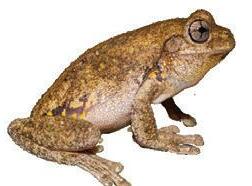

62
Figure 3. Some mistake native frogs for Cane Toads. Photo credit: NSW DPI BANJO FROG 5 Unwebbed fingers 5 Orange/yellow sides 5 Yellow gland under eye to shoulder NATIVE PERON’S TREE FROG 5 Pads on toes 5 Climbs 5 Cross-shaped pupil NATIVE CANE TOAD 5 No pads on fingers and toes 5 Poor climbers 5 Bony ridge over eye NON-NATIVE If you see an unusual non-native pest animal, report it to NSW Department of Primary Industries. Cane toads have different features to native frogs Protect what we love SEE IT. REPORT IT. 1800 680 244 dpi.nsw.gov.au/biosecurity/sighting Be alert for Cane Toads, as they are particularly active over the summer months at night. For more information regarding the Cane Toad Biosecurity Zone scan this QR code to visit www.dpi.nsw.gov.au/cane-toad Further information about other non-native animals of interest is also available at this website. BERRY AUSTRALIAN JOURNAL SUMMER 2022 EDITION 13
EMERGING LEADERS
EMERGING LEADER
Ryan Sherry Harvest the Fleurieu, South Australia
EMERGING
LEADER
Kon Piliouras Mt Barker Strawberries, South Australia
Ryan’s family have been growing strawberries for 40 years, with the family first experimenting in Blewitt Springs before expanding out to Kuitpo Forest. The family now run two separate businesses — Harvest the Fleurieu at Mt Compass, and a commercial strawberry farm Kuitpo Forest Strawberries at Kuitpo.
After working at the commercial strawberry farm for 6 or 7 years, Ryan now manages Harvest the Fleurieu, while his brother Adam runs the farm at Kuitpo. Harvest the Fleurieu is a multifaceted business, comprising a berry farm, u-pick berries and a Market Hall and café showcasing local produce. At Mt Compass, Ryan grows a range of berry crops including strawberries, raspberries, blackberries, blueberries, tayberries and cherries, and is trialling hydroponic production with raspberries and blueberries in coir, and strawberries in coir in a gutter system. Part of the business is pick-your-own berries, and while the majority of strawberries are grown in the ground, Ryan is planning to put in wheelchair accessible pick-your-own strawberries in gutters on tabletops. Berries grown on the farm at Mt Compass supply the farm shop, local markets and are also sent to the commercial farm at Kuitpo to be packed and sent to interstate markets. Ryan manages the operations of the farm at Mt Compass, while his wife Allis manages the café and Market Hall.
Ryan received one of the Emerging Leaders Bursaries to attend BerryQuest, and most of his family attended as well. A highlight of the Emerging Leaders Program for Ryan was the final day, where the young growers participated in a full day’s workshop with Cynthia Mahoney to better understand their leadership styles, and how to communicate effectively with differing personality types in the workplace. Ryan said, “you need a healthy balance of everyone to run a business”. The workshop was also an opportunity to see how the other growers work and get some different perspectives.
Ryan is now the South Australian representative on the Strawberries Australia board following this years AGM.
Kon’s family have been growing strawberries in Mt Barker since 1980, when his grandparents started Mt Barker Strawberries. Since leaving school in 2018, Kon has been working in the business with his father, George. Kon says the best thing about farming is being able to work outdoors.
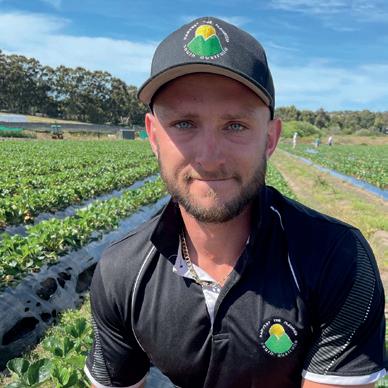

Mt Barker Strawberries grows around 1 million plants on 100 acres, in the Adelaide Hills. Most of the production is Cabrillo, with some Albion being grown as well.
Kon was the youngest of the Emerging Leader Bursary recipients, and says he learned a lot from attending BerryQuest in July, and is keen to attend the next BerryQuest in 2025. His favourite presentation at BerryQuest was the weather expert, Eric Snodgrass, and Kon was impressed with how accurate he was with his predictions of cool, wet weather on the east coast of Australia for the coming season.
If you missed BerryQuest, you can read more about Eric Snodgrass and his weather forecasts on PAGE 46 or visit: youtu.be/4MFPU3oyN80 to watch Eric’s presentation from BerryQuest.
Kon said it was great to hear presentations on new chemicals, new strawberry varieties and other new technologies.
Instead of the workshop on the final day of BerryQuest, Kon joined the farm tours, and really enjoyed visiting Taste ‘N’ See and seeing how their hydroponic system works.
63
Delegation of Australian Berry Growers get a feel for export at Asia Fruit Logistica 2022
Joint Berry Export Trade Development project (MT20004) Jen Rowling, Berries Australia
In early November, a delegation of berry growers from across the country joined Berries Australia’s export project team to visit Asia Fruit Logistica in Bangkok, Thailand. Growers who nominated to attend had travel expenses partially subsidised as part of the Hort Innovation funded Joint Berry Export Trade Development project (MT20004), and we welcomed growers from WA, Victoria, Tasmania and New South Wales.
Asia Fruit Logistica is Asia’s leading exhibition for fresh fruit and vegetable marketing, covering the entire fresh produce industry value chain, its service support companies and the latest in innovative products and ideas. Although it started in Thailand in 2007, it was then moved to Hong Kong and was held there on an annual basis until 2019. COVID-19 put the event on hold until this year, with the exhibition returning to Thailand for its 15th anniversary.
Growers from the berry industry in Australia were encouraged to attend no matter what their current level of experience with export. They may already be experienced exporters, or they may just be exportcurious, but attending Asia Fruit Logistica provided them with opportunities to do business with importers from existing markets, build a contact network with customers in potential new markets, discover innovative developments in trade and marketing from across the globe or simply gauge whether the world of fresh produce export is something that will suit their business in future.
Berries Australia was able to partner with Austrade for this event as part of the Australian Pavilion, which is designed to showcase Australian horticulture capability. A network of Austrade representatives from the key Asian markets were on hand throughout the event to link buyers from ASEAN markets with Australian growers and exporters through business matching and networking activities.
Industry Capability Reports for Australian blueberries and strawberries were produced to distribute to interested buyers, and cooking demonstrations helped highlight the nutritional value, versatility, and deliciousness of our wonderful berries. A series of Recipe Postcards were also available to support the the berry tastings. It was fantastic to see Australia with such a prominent presence, including not only the Australian Pavilion and surrounding Aussie “precinct” but also individual exhibits from berry producing companies such as Costa Group, Perfection Fresh, Driscoll’s and Fresh Produce Group.
The atmosphere at the exhibition, which was held in the beautiful Queen Sirikit National Convention Centre, was humming – literally! There is a constant hum throughout the three days from the thousands of business meetings being held in over 18 national and group pavilions, and exhibitor stands from 42 different countries and regions. This highlighted the level of importance that Asian importers and buyers place on building and maintaining face-to-face business relationships with international trade partners and is obviously a key factor in successful trade partnerships.
Speaker sessions were held concurrently throughout the event as part of the Asia Fruit Congress and it was interesting to learn about the effect that global events are having on trade, and the ever-increasing potential in the Asian region.
64 INDUSTRY
BERRY AUSTRALIAN JOURNAL SUMMER 2022 EDITION 13
Numerous countries who had previously exported to Russia are seeking alternative options in Asia, and a reduced presence from China due to continuing COVID-19 restrictions allowed delegates to get to know the region and see the potential of Southeast Asia.


The berry delegation from Australia also participated in retail and wholesale market tours around Bangkok, and further information about the trip from the grower’s perspective will be featured in the next edition of the Australian Berry Journal.
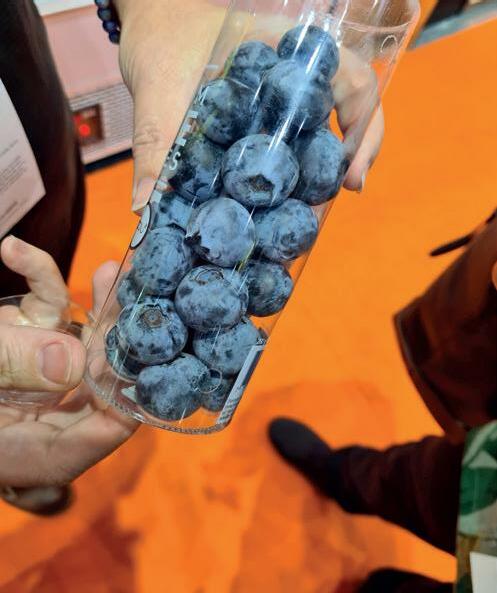
The trip was very capably organised by Berries Australia Export Manager Jenny Van de Meeberg. Executive Director Rachel Mackenzie and Projects Manager Jen Rowling also attended. Rachel had the opportunity along with other peak industry bodies to dine with the Australian Ambassador to Thailand and engage with senior Austrade staff to cement our commitment to increasing the export footprint of Australian berries.
All photos supplied by Berries Australia.
65
The Austrade stand in the Australian Pavilion
Asia Fruit Logistica is a great venue to showcase innovation to potential new customers like these giant blueberries
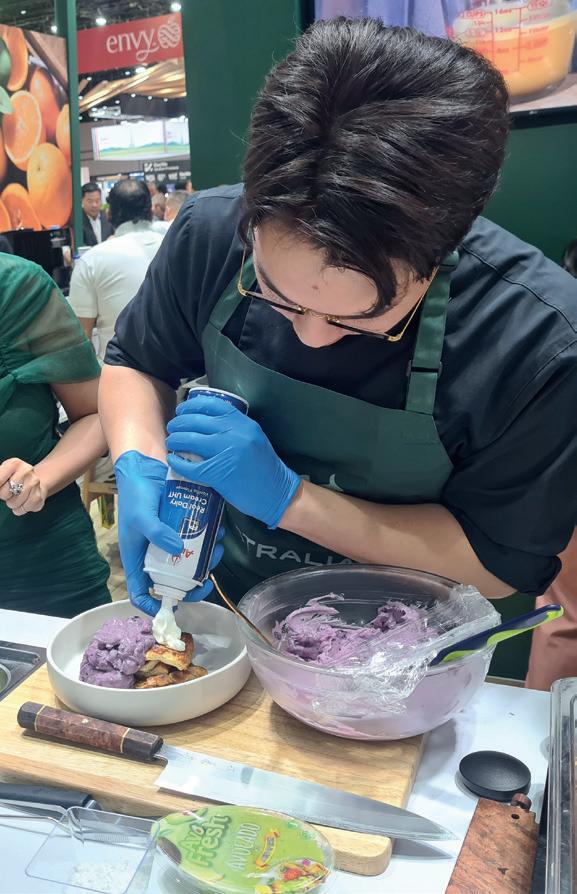

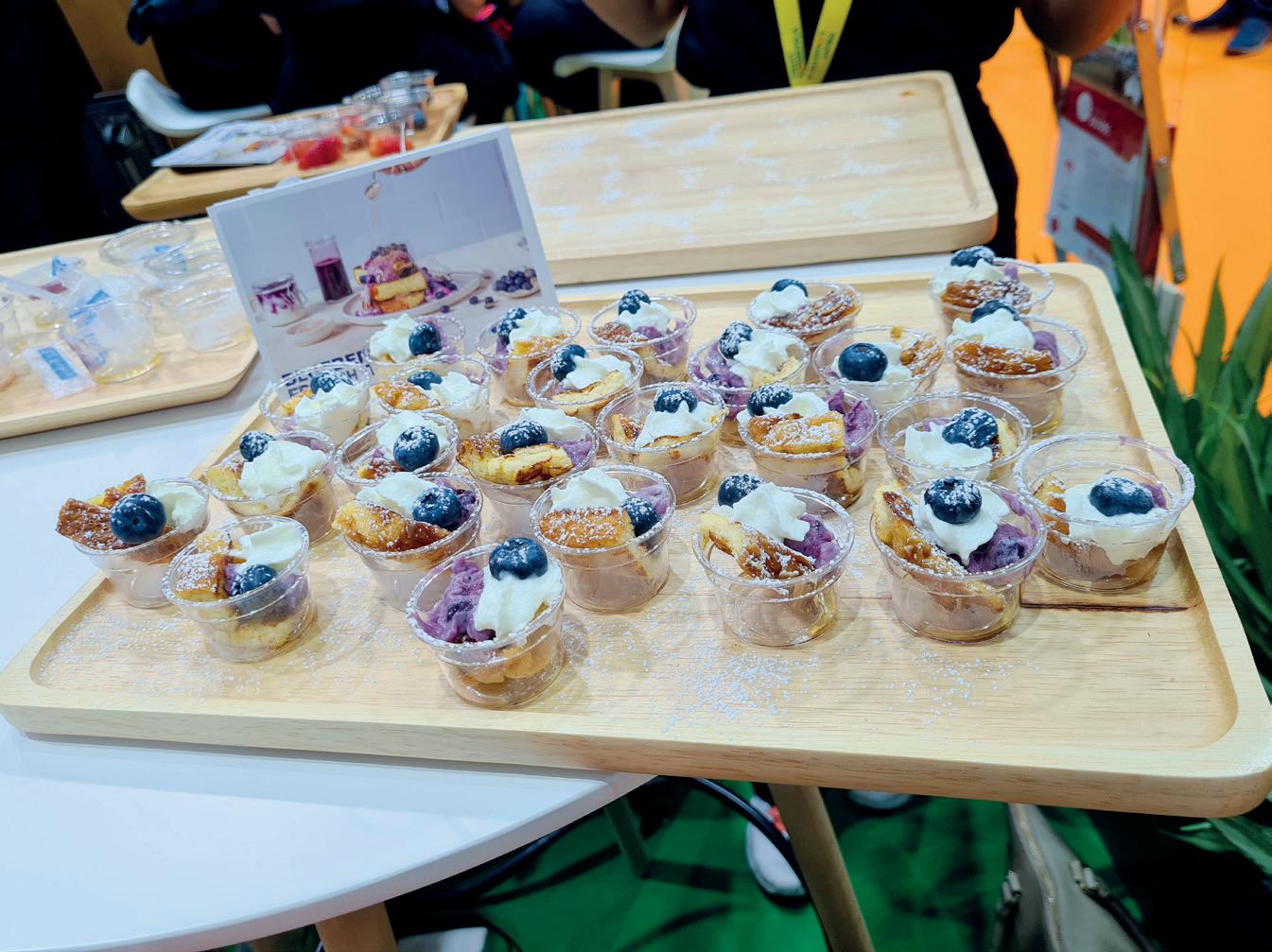
66
BERRY AUSTRALIAN JOURNAL SUMMER 2022 EDITION 13
Recipe demonstrations showcasing Australian blueberries

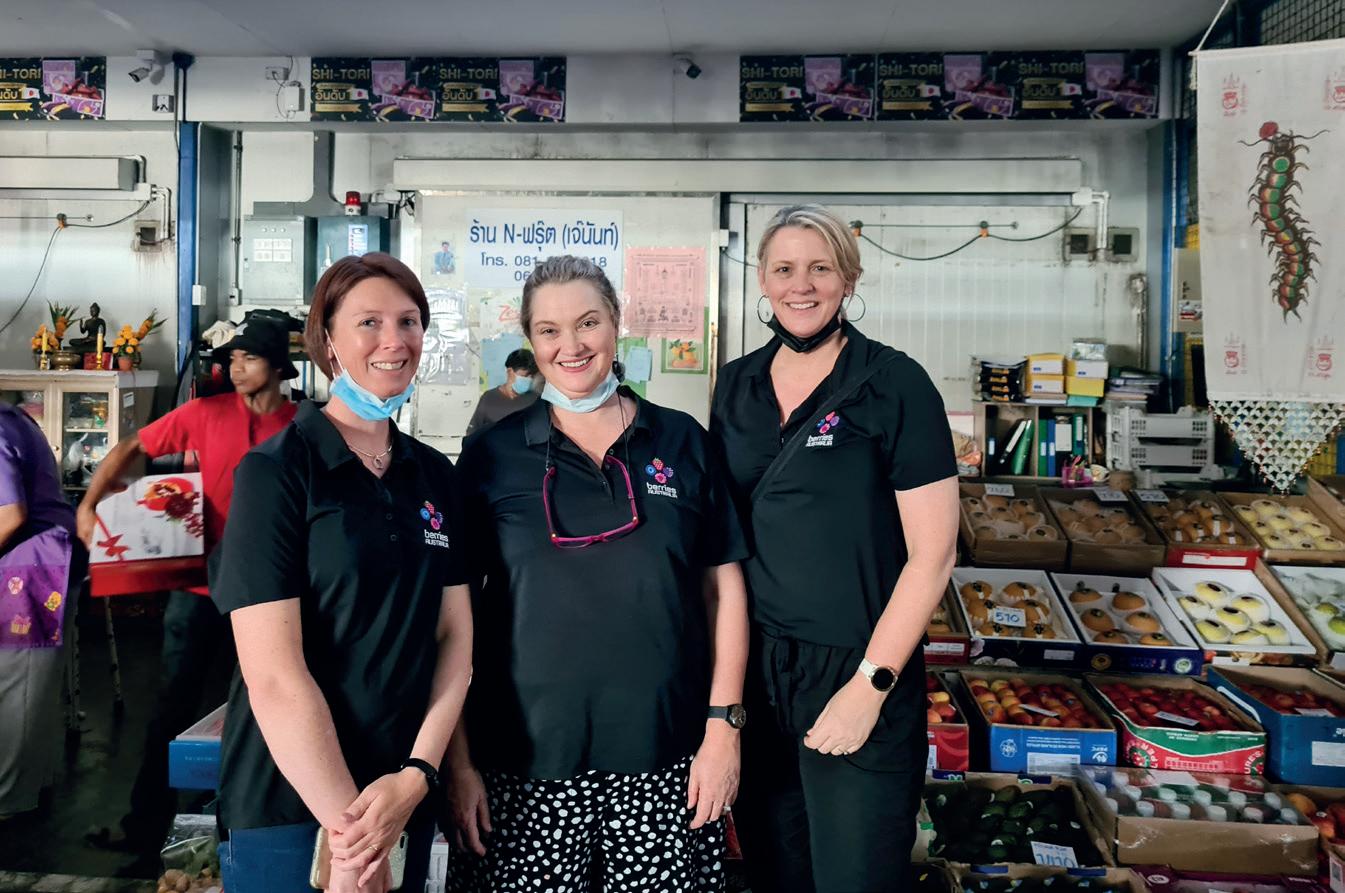

67
L-R Jenny Van de Meeberg, Rachel Mackenzie & Jen Rowling, Berries Australia
Australian strawberries on sale in a Bangkok supermarket


68 BERRY AUSTRALIAN JOURNAL SUMMER 2022 EDITION 13
The Australian delegation taking part in a tour of the wholesale markets




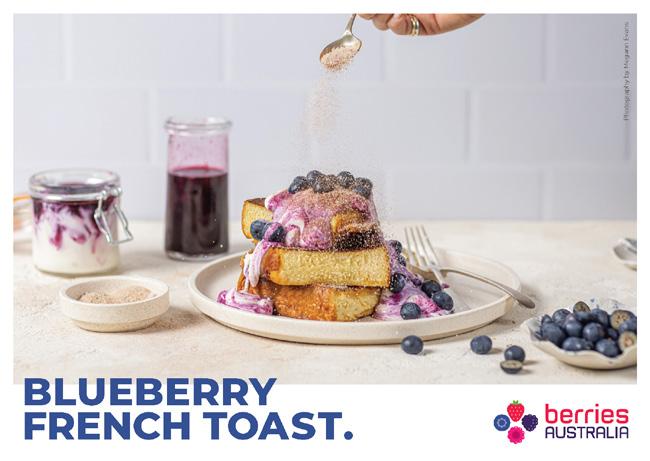

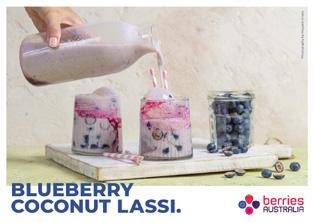
69
This project has been funded by Hort Innovation using research and development levies from the Blueberry Fund, Raspberry and Blackberry Fund and Strawberry Fund and funds from the Australian Government. For more information on the funds and strategic levy investment visit horticulture.com.au
Australian strawberries being sampled at the Austrade stand in a simple drink recipe
Recipe postcards produced to support the tastings of strawberries & blueberries at the Austrade stand.
VOLUNTARY LEVIES SUPPORT YOUR INDUSTRY TO SUPPORT YOUR BUSINESS!
Blueberries
The ABGA is funding a major marketing & export program – please contribute your share
Why should I pay the voluntary levy?
The voluntary levies fund all of the essential activities that contribute to the growth of our blueberry industry.
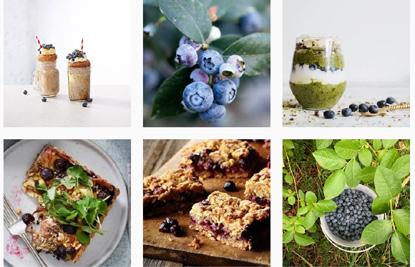
Activities include, but are not limited to:
• Maintaining a a dedicated marketing campaign
• Research & development into registered chemicals + IPM + Integrated Disease Management programs
• Funding legal advice to support appropriate planning conditions
• Progressing applications for market access to key markets such as New Zealand, South Korea, Taiwan and Vietnam
• Developing export protocols into Japan
• Funding our Industry Development Officer
• Funding our Executive Director and support staff
• Communication and engagement with members –industry journal, e-news, website, conference
• Promoting positive industry stories and addressing negative media
• Providing our contribution to Hort Innovation under the Collective Industry Fund which is matched with equal funding used for various industry projects as determined by the Blueberry Strategic Industry Advisory Panel
How much levy do I have to pay?
For this year standard levies are $0.07/kg fruit sold. This will cover both R&D and Marketing investments.
When do I pay the voluntary levy?
How do I pay the levy?
Follow the steps below:
1.Prepare a statement with the following information
•Grower Name
•Quarter + Dates (e.g. Q2 1st Oct - 31st Dec)
•Number of kg fruit sold in that quarter
•Amount of levy being paid
• Indicate if your agent deducts your levies (if so, include agent name)
2.Email the statement to the Membership Officer
Email statement to: admin@berries.net.au
The Membership Officer will send you an Invoice for payment
3.Pay your levy to the ABGA account
Account name: Bank: BSB: Account: Reference:
Australian Blueberry Growers’ Association Westpac 033 107 181 471
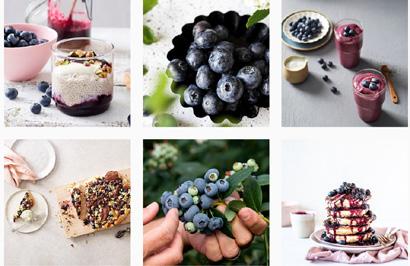
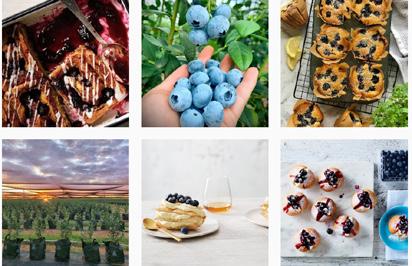
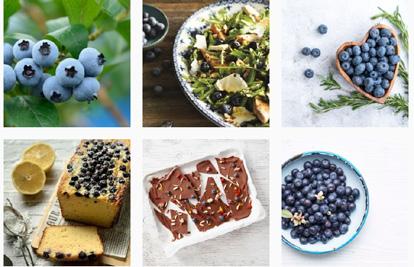
GROWER NAME + Financial Quarter (e.g. “Joe Bloggs Q2 levy”)
My agent deducts levies — what do I
need to do?
Send the Membership Officer a statement as per Step 1 above. She will then check that the agent has paid the levy. Email the statement to admin@berries.net.au
What about confidentiality of the information provided?
Any information provided will be kept confidential.
I need help, who do I contact?
Wendy Morris
Email: admin@berries.net.au | Phone: 0491 751 123
once every
quarter: Quarter Period Covered Payable by Q1 1 July – 30 September 31 October Q2 1 October – 31 December 31 January Q3 1 January – 31 March 30 April Q4 1 April – 30 June 31 July
�Levies are payable
financial
AUSTRALIAN
Elephant weevil management in blueberries
 Melinda Simpson, Berry Industry Development Officer, NSW Department of Primary Industries
Melinda Simpson, Berry Industry Development Officer, NSW Department of Primary Industries
Risk period
The optimum time for elephant weevil Orthorhinus cylindrirostris control is from September through to February when the adults emerge and climb onto the upper branch of the blueberry plants to mate. Egg laying lasts from September to February and peaks in October. The timing of the elephant weevil life cycle in blueberries can be seen in Figure 1.
Pest identification and damage
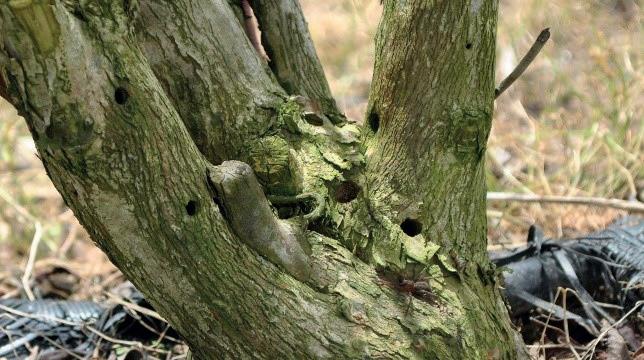
The adult elephant weevil is brown grey with a long slender snout and long forelegs, they are approximately 20mm long. The body has thick black or brown scales, and the antennae are clubbed and form an L shape with a distinct elbow (Figure 2).

The larvae grow to about 16mm in length and are creamy in colour with no legs and have a brown head. The damage to blueberry plants is caused by the larvae. The larvae hatch and feed by boring tunnels through the stem, crown, and roots of the plant. As the larvae exit the plant to mature, they leave large holes around the base of the plant (Figure 3).
Management
Cultural and physical
Monitor for damage signs which appear as bore holes in the wood. Remove and thoroughly destroy all infested bushes and material to prevent emergence of any weevils from the infested bushes. Removing and destroying adults will help break population cycles. Practices that reduce stress (such as fertilisation and irrigation) are essential during periods of drought to reduce the susceptibility of bushes.
Biological
A braconid wasp has been identified at elephant weevil infested vineyards, but confirmation of a parasitoid host relationship was not made from actual rearing. Further work in this area needs is required.
BLUEBERRIES
Figure 1. Elephant weevil lifecycle in southern highbush blueberries
Figure 2 & 3. Adult elephant weevil with damage which appears as exit holes in the crown and stem of plants
71
Photo credit: Weevil - © tjeales, some rights reserved (CC BY-SA) & Damage - Maurizio Rochetti, Costa
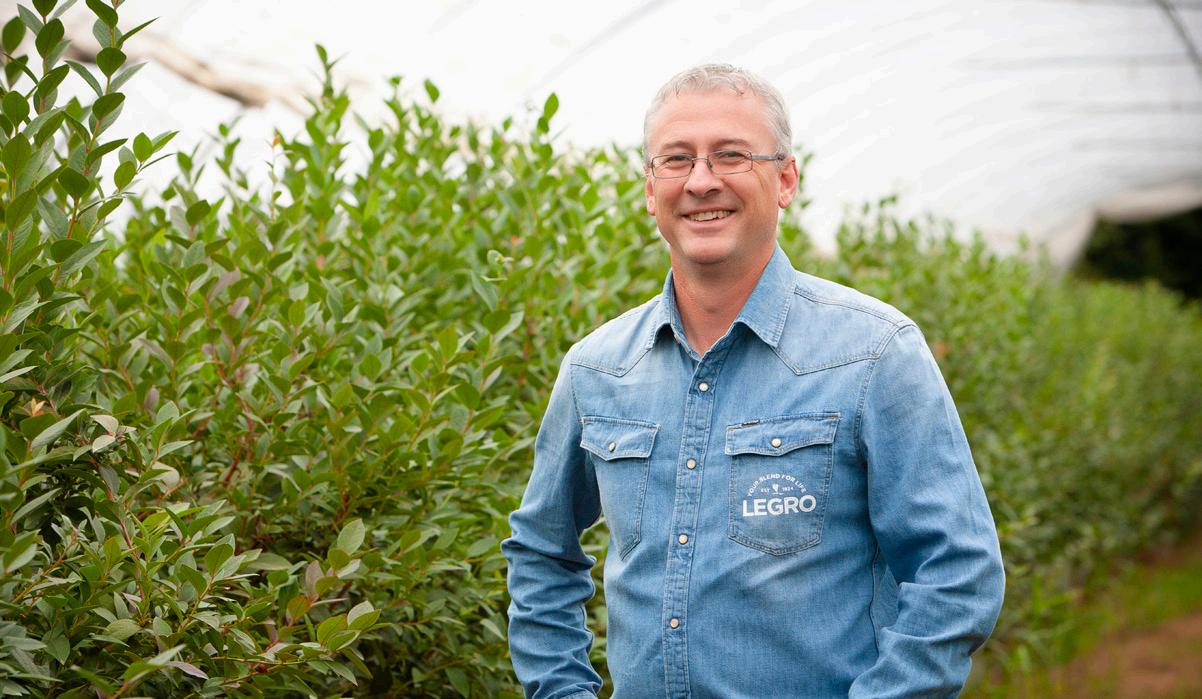


www.legrogroup.com ‘‘Our customers have to deal with all kinds of challenges, so they need to know they can rely on a stable substrate. At Legro we invest in our own production facilities, so we can always ensure raw materials of the same quality. And that means we can guarantee high quality substrates, year after year. Contact me or one of my colleagues and let us know what you expect from your ideal substrate.’’ Phil
Sales Manager Australia & New Zealand +61 (0) 3 95555267 info.aus@legrogroup.com your blend for life Chemical The chemical options for controlling elephant weevil are outlined in Table 1. Chemical treatment is most effective when the adults emerge and climb onto the upper branches or recently pruned plants. Table 1. Current approved chemical options Active constituent Insecticide group Activity WHP (days) Effect on beneficials Bifenthrin PER84972 3A Contact 1 High Indoxacarb PER13289 22A Ingestion 3 High* * Dangerous to bees. DO NOT apply when bees are actively foraging. Refer to the permit for application rates. These permits are current at November 2022. Always refer to the APVMA website to check the current status as this may have changed since publication of this journal. Visit portal.apvma.gov.au/permits
Badgery
BLUEBERRY SUBSTRATES
VIGOROUS GROWTH FIT FOR LONG-TERM GROWING
Tailored
Global Axis Import Solutions is a family owned Australian business ‘making it happen’ since 1988. We offer a comprehensive range of high quality products and services, predominantly the distribution of growing substrates for the mushroom, berry, and horticultural industries.

Global Axis are the exclusive Kekkilä-BVB Distributors for Australia and New Zealand. Place an order by calling (08) 8277 1040 or emailing admin@globalaxis.com.au



OUR
STRONG ROOT DEVELOPMENT AND STRUCTURAL STABILITY WITH
blueberry substrates by BVB Substrates offer your plants root systems the best environment, enabling elaborate and reliable growth.
TO TAKE YOUR BLUEBERRY
THE NEXT LEVEL?
The excellent structural stability our products offer means that the mixture doesn’t compact, even over a long cultivation period. READY
CULTIVATION TO
SUBSTRATES
A&D today
to reduce giveaway
product quality.
Inspection Systems | Metal Detectors | Checkweighers | Data Capture PREVENT PRODUCT RECALL REDUCE PRODUCT GIVEAWAY or visit: www.andinspection.com.au 1800 241 434
Talk to
about how
and improve
Locally Stocked and Supported in Australia.
Marketing Update — ABGA & Wavemaker 2022 Campaign
Delaney Lang-Lemckert – Client & Performance Associate Manager, Wavemaker
Wavemaker Brisbane has continued to work with Australian Blueberries to shift Blueberries from being an impulse purchase, to a grocery basket staple. The campaign has driven strong results so far, resulting in increased household penetration.
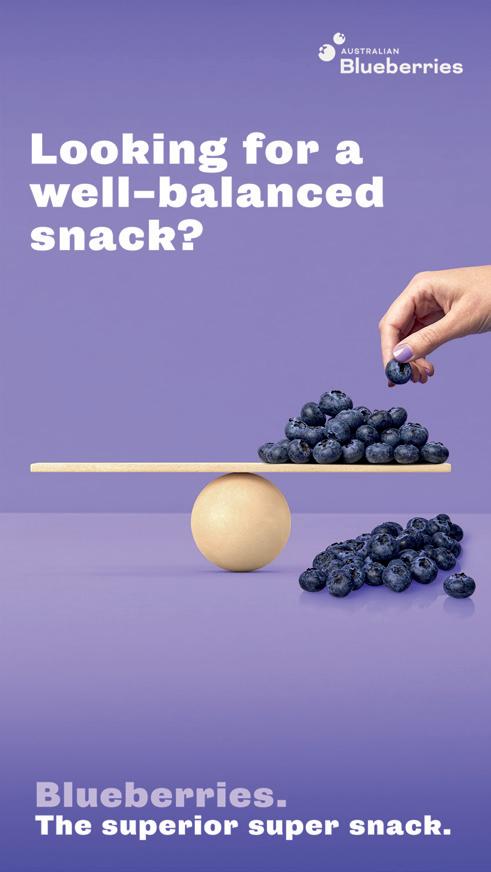

Out of Home (OOH) advertising
The digital Out of Home campaign (DOOH) places digital adverts in locations close to grocery retailers and shows them at key times of the day to effectively reach the main household grocery buyers when they are just about to do their shopping to bring blueberries to the front of their minds.
The OOH advertising has incorporated a mix of digital creative formats in small and large sizes as well as bus shelters and billboards. This activity launched on 9 October to align with October’s high supply season.
BLUEBERRIES
BERRY AUSTRALIAN JOURNAL SUMMER 2022 EDITION 13 74 74
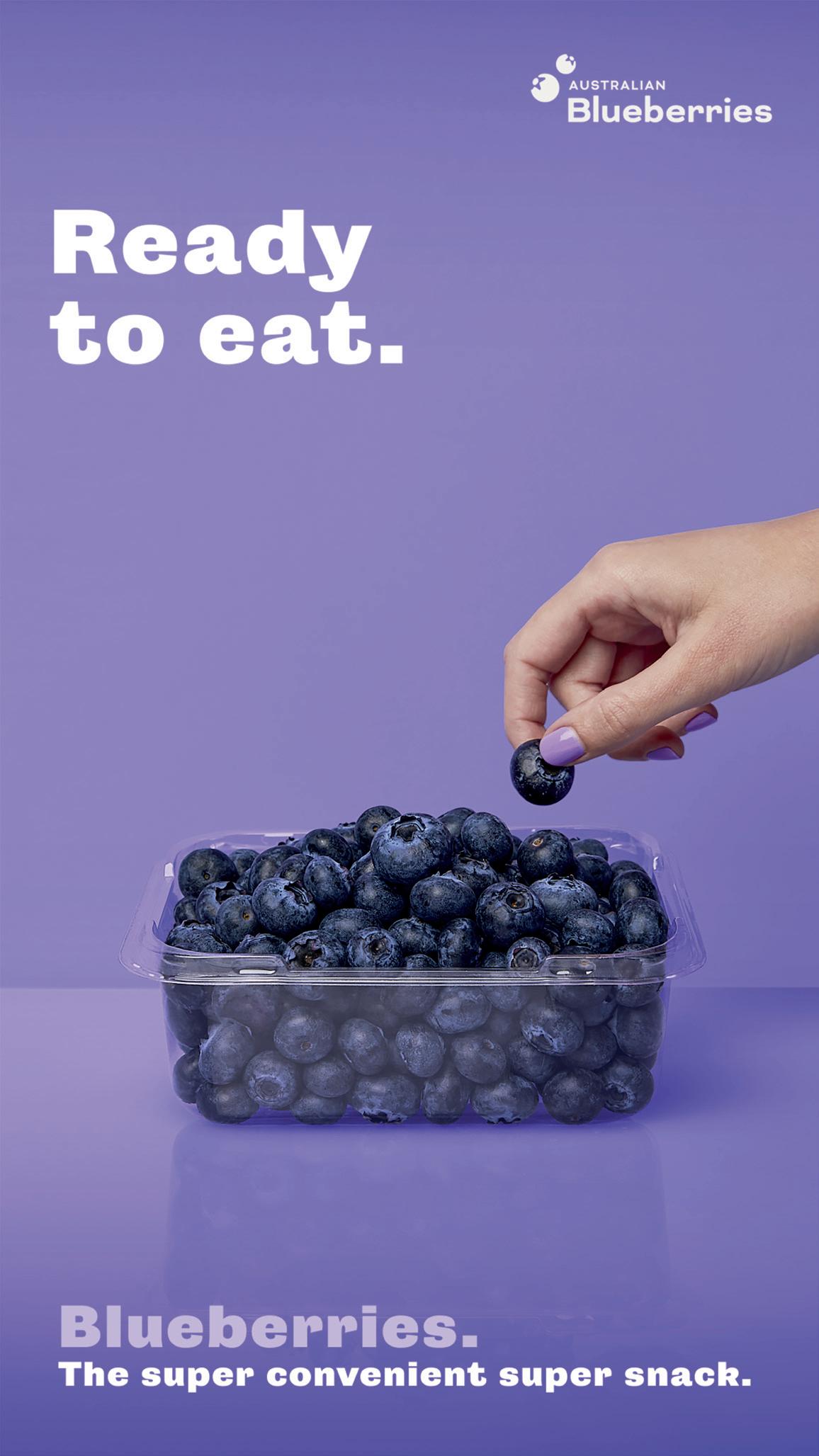
75
Creators
Third-party content creators were sourced through the influencer marketing platform ‘Vamp’ which has helped to increase awareness of blueberries and inspire usage occasions.
Creators for this campaign have been picked to align with the overall campaign goals and strategy. The content created showcases how blueberries can be incorporated into recipes and everyday meals.

Material created has then been shared with consumers using digital social media platforms.
Instagram reached 1,164,681 unique Australians through the 11 creators, all of which produced eye catching and recipe inspiring content.

This unique reach was predominantly driven through Instagram Reels which pulled through 99% (1,164,150) of the total unique reach across Reels and carousel posts.
What are Instagram Reels?
Instagram Reels are short-form, vertical videos that can be up to 60 seconds long. Since their inception, Instagram Reels have been an amazing way for brands and businesses to add a visual experience beyond a static grid post.
What are Instagram Carousels?
An Instagram Carousel is a post containing more than one photo or video, which users can view by swiping left on a post through the phone app or desktop users can view by clicking on the arrow button on the right of a post. Think of it as a slideshow of posts that users can control manually.
Top-performing Creators
The campaigns’ top performing creators from this first burst were @chloeevegan from Instagram and @butt.erhand from TikTok. Both creators supplied raw and honest video assets of how blueberries can be easily used for the perfect, healthy, pick-me-up snack.
@chloeevegan was able to generate 34% of Instagram’s total unique reach and her reel generated 19,427 saves.
@butt.erhand post views accounted for 98% of overall views driving 61,483 content likes.
These creators inspired usage occasions of a fresh snack, blueberries, and illustrated how to incorporate this nutritious ingredient into meals.
Instagram Reels elicited a great response from our audience, with 1,236,952 plays converting into 34,237 likes, 33,758 saves and 5,165 shares. These results offer great insight into how the 18-54 Grocery Buyer audience interacts with the content.
The TikTok component of this campaign had 3 content pieces produced from 3 creators. Their overall performance converted into a 3.5% engagement rate.
The TikTok pieces delivered an impressive 1,813,289 views, 62,263 likes, 160 comments and 1,049 shares.
76 BERRY AUSTRALIAN JOURNAL SUMMER 2022 EDITION 13
76
E-commerce
Retail budget has been split between Woolworths and Coles to effectively target grocery buyers shopping online. Both campaigns have activity running from August through to December 2022.
Social Media Channels
While managing the organic social media content and community engagement we have seen an increase in Facebook reach +50% up in September and up +12.3% across Instagram.
Content remains an assortment of recipes industry insights and blueberry facts. Recipes have always been very popular with our audience but they have really engaged with the industry insights and broader blueberry facts this season.

Woolworths
The Woolworths campaign has driven over $31.1k in revenue from 7,289 sales of Blueberries. Overall, the campaign has delivered strong levels of awareness with a total of 47,684 impressions and healthy volume of consideration at 7,656 clicks to product.
Coles
The Coles campaign’s budget split is the same as Woolworths with both Search and A&C campaigns being built into the platform. Coles is the strongest performing retail campaign delivering over $43.9k in revenue and an impressive 10,948 product sales.
What are ‘impressions’?
An impression is a measurement used to quantify the number of digital views of a piece of content, usually an advertisement, digital post, or a web page.
Radio
Consumers have shown really positive responses to this broader type of content, with healthy levels of sharing, saving, and story engagement in return. In addition, we have been re-sharing growers content to help build more awareness of the blueberry brands across the market. From a content creator perspective, the material generated has been beautiful quality reels and posts to re-share which have achieved high engagement and awareness on the creators own platforms about Australian blueberries.
What is organic social media?
Organic social media refers to the free content (posts, photos, video, Stories, etc.) that all users, including businesses and brands, share with each other on their social media feeds. It is the content that does not have any paid advertising or post boosting spend behind it and is only shown in the feeds of its owned established followers.
Radio across Brisbane, Sydney and Melbourne has so far reached 797K people. Radio was included to generate broad reach and drive brand awareness, at an efficient cost. Activity was planned to align with the 3pm school pick-up to reach parents as they hit their afternoon slump, prompting them to purchase blueberries as the ultimate pick-me-up.
77
The changing face of Media in Australia
The Australian Blueberries campaign has used a mix of digital and traditional offline channels to effectively advertise to the key grocery buying audiences. COVID-19 has driven some significant changes in buyer behaviour and the way in which we communicate with consumers has had to move in step.
Digital Out of Home
In the media landscape, Out of Home (OOH) is regarded as a resilient channel that is gaining momentum due to the accurate detail available around reach and frequency of digital sites.
The future of OOH is technology-focused with (Digital) DOOH increasing its percentage of total OOH advertising revenue to 59% in 2021 (Source: Outdoor Media Association).
Based on this insight we chose to place a large portion of media investment into Sightline, Wavemaker’s chosen DOOH partner. This programmatic DOOH channel enables us to buy advertising with greater agility, measurement and targeting.
Sightline enables us to successfully reach audiences through access to their outdoor media partners’ extensive range of advertising placement sites. Sightline has also provided us with detailed data that we can use to continually enhance our targeting abilities and deliver engaging content to the right consumers at the right time to influence their purchasing of blueberries.
Social Media
The social media world is ever-evolving with the landscape in Australia being dominated by Meta (Facebook & Instagram). Whilst these platforms have the largest audience, TikTok has seen major improvements in its products, placements and audiences with 7.4m Australians now using the platform.
The massive volume of users on these platforms offers opportunities to drive blueberry awareness and grow blueberry sales. Harnessing the power of foodie-oriented content creators, we have capitalised on this large, rapidly growing awareness opportunity and inspired people to actively consider buying and eating blueberries.
E-Commerce
Recent studies find that more Australians (84%) shop online than many other countries, and e-commerce continues to grow significantly in value with 24% growth year-on-year. This growth was strengthened through COVID, and although we saw a slight decline in online sales as we returned to a ‘new normal’, the habit of online shopping is now here to stay.
With the healthy rise of online retail food shopping, our investment has been strategically allocated to the Coles and Woolworths advertising platforms. This has allowed us to effectively reach and drive purchases through these online grocery buyer environments.
Audio Platforms

The dominate platform within the audio category is still traditional broadcast radio. It dominates in terms of the number of people listening and in advertising revenue as it still reaches 85% of Australians.
The most highly regarded network is ARN which is also the most listened to for all people nationwide (Source: Marketplace). The ARN network includes Sydney’s KIIS 1065 with Kyle & Jackie O, Melbourne’s KIIS 101.1 with Jase & Lauren, Adelaide’s Mix102.3 with The Ali Clarke Show, Brisbane’s KIIS 97.3FM with Robin, Terry & Kip and Perth’s 96FM with The Bunch with Clairsy & Lisa. With broadcast audiences returning to normal post COVID, forecasts for traditional linear radio are back and strong. This insight is valuable and means our radio advertising activity is reaching our audience and gaining mass awareness from ARN listeners.
If you have any questions about the current season or if you’d like to be a part of the grower content, please contact: berriesaustralia@wmglobal.com | www.australianblueberries.com.au | FACEBOOK-SQUARE instagram australianblueberries BERRY AUSTRALIAN JOURNAL SUMMER 2022 EDITION 13 78
Using native bees as pollinators in Berries
 Steve Maginnity, The Australian Native Bee Company
Steve Maginnity, The Australian Native Bee Company
• The focus of this article is on the use of native bees in berry crops on the Mid North Coast of NSW
• The article highlights the key things to consider when using native bees
My name is Steve Maginnity and I am the owner of The Australian Native Bee Company. We have been operating a pollination service utilising the native bee species Tetragonula carbonaria for several years. The crops of focus for pollination with our bees are Macadamia, Blueberry, Blackberries and Raspberries.
Hive placement
When positioning hives it is important to face them in a North East direction to take advantage of the morning sun. The sooner the ambient temperature gets above 18 degrees Celsius the sooner the bees will begin foraging.
Stocking density
Stocking density is critical to the efficacy of pollination. Where native bees are being used in conjunction with honeybees, growers have been using approximately 20 native bee hives to the hectare. This number will increase if only native bees are being used in the crop.
Tunnels
Tunnel length can impact pollination results. Native bees have a preference to work the ends of the tunnels and are found in smaller numbers in the centre of tunnels.
The proximity to the tunnels is another factor to consider. Hives should be placed close to the tunnels but at far enough of a distance to avoid chemical spray drift where possible.
Chemical usage and application
BLUEBERRIES
Non-specific insecticides should not be used while native bees are foraging on the crop.
Native bee species Tetragonula carbonaria
79
Photo credit: The Australian Native Bee Company
Timing and type of chemicals used in the crop is crucial for the health of native bees. Not all fungicides are safe to use whilst bees are present, and it is important to read the safety data sheet for the chemical to determine if it is safe to use whilst bees are present.
Night time spraying AFTER the bees have finished foraging for the day is best practice. Morning spraying can mean that the chemical can still be wet on the plant when bees start foraging, hence is not ideal.
Native bees do not like to forage on the crop when they can sense some chemicals and may avoid the crop for a period of time after application. Agronomists and beekeepers should also be consulted to work out the best chemicals to use whilst bees are present.
Monitoring bee activity
Native bees have different flight patterns to European honey bees. Native bees like to fly through the crop rather than above it. Native bees - on average - forage on individual flowers for significantly longer than European honeybees.
Contracts
Contracts between beekeepers and growers help ensure the best result for both parties. Better pollination is the goal for both the grower and the beekeeper so it is important that they work together to achieve the best results.

80 BERRY AUSTRALIAN JOURNAL SUMMER 2022 EDITION 13
Figure 1. Blueberry tunnels showing placement of native bee hives. Photo credit: The Australian Native Bee Company
Impact of global warming on the yields of strawberry in southern Queensland
Christopher Menzel, Principal Horticulturist, Queensland Department of Agriculture and Fisheries
• Climate plays a key role on the productivity of strawberry
• The average daily mean temperature has increased by 2°C over the season on the Sunshine Coast since 1967
• The impact of global warming has been less severe on the Granite Belt, with a 1°C increase in the mean temperature
• These increases in temperature are associated with a decrease in potential yield of 6 to 12% in the two areas
• Further decreases in yield are expected in the next few decades, in the absence of heat-tolerant cultivars or other strategies
Introduction
Environmental conditions have a strong effect on the productivity of strawberry plants. The main scenarios for global climate change include an increase in the concentration of carbon dioxide (CO2) and an increase in average temperatures.
In most crops, there is an initial increase in productivity with climate change and then a decrease. Research in California indicated that yields under open-field conditions will decline by 10% by the middle of this century and by 43% by the end of this century, mainly because of temperature extremes and droughts. Global warming will alter plant, flower and fruit development with smaller and less-sweet berries under higher temperatures.
This article reports on the effect of global warming on the yields of strawberry in southern Queensland.
The strawberry industry in Queensland
According to the 2020/21 Australian Horticulture Statistics Handbook, strawberry growers in Australia produced 77,751 tonnes of fruit worth AU$417 million. The main production centres are in Queensland (42%), Victoria (36%) and Western Australia (11%). There are smaller industries in South Australia (7%), Tasmania (4%) and New South Wales (1%).
There are two principal areas in Queensland. The bulk of the winter crop is produced from May to October on the Sunshine Coast. The bulk of the summer crop is produced from October to May at elevation on the Granite Belt.
81 STRAWBERRIES
Temperature conditions in southern Queensland
Temperatures across the globe have increased over the past fifty years. The rate of warming varies from one region to the next and that there are differences between winter and summer and between days and nights. The effect of climate change on productivity depends on the degree of warming, and whether the increase in temperature is mainly during winter or summer or during the day or the night.
The average daily mean temperature over the season at Nambour (Sunshine Coast) has increased since 1967 (Figure 1). The mean temperature from May to October has increased from 16.0°C in 1967 to 18.0°C in 2021, equivalent to a rise of 0.45°C per decade. The minimum (0.73°C per decade) has increased more than the maximum (0.17°C per decade).
The average daily mean temperature over the season at Applethorpe (Granite Belt) has increased, but not as much as in Nambour (Figure 2). The mean temperature from October to May has increased from 16.8°C in 1967 to 17.8°C in 2021, equivalent to a rise of 0.02°C per decade. The maximum (0.38°C per decade) has increased more than the minimum (0.09°C per decade). These changes in temperature will affect the yields of strawberry fields, especially those on the Sunshine Coast.
Relationship between yield and temperature
Le Mière et al. (1998) examined the effect of temperature on the performance of strawberry in temperature-controlled glasshouses in the United Kingdom set at temperatures from 12° to 28°C. There was a strong relationship between yield and temperature (Figure 3). Average yield decreased from 200g per plant at 12°C to 50g per plant at 28°C. Yield decreased by 11.9 ± 0.9g per plant for each one degree increase in temperature, equivalent to a decrease of 6% from the maximum yield.
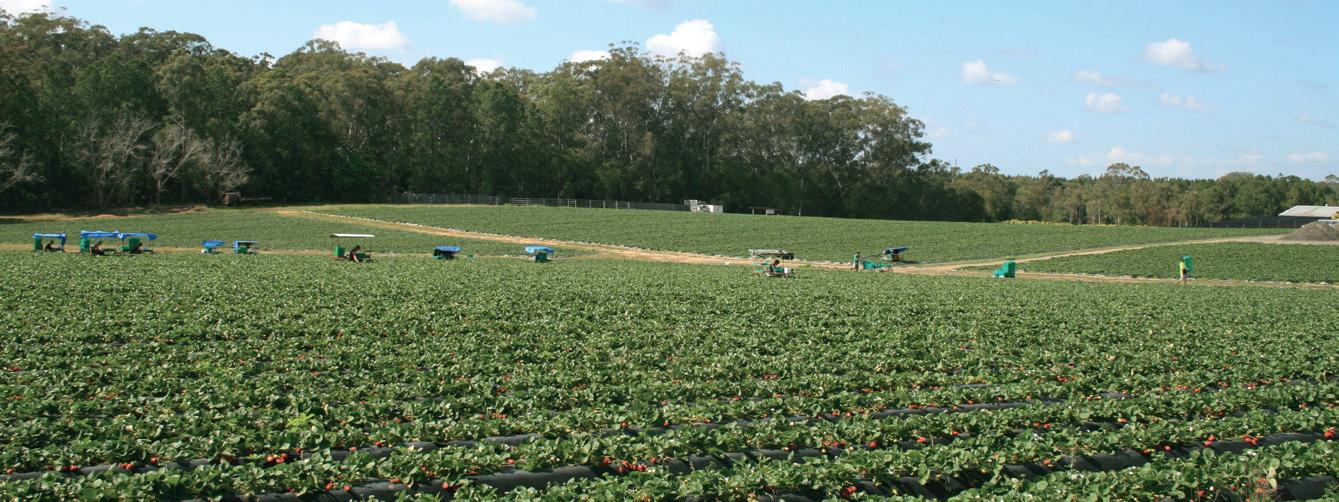
There is no information on the relationship between yield and temperature in Queensland. However, the data collected in the United Kingdom can be used as a guide. There are different cultivars between the two growing areas and different environmental conditions. Light levels are usually lower in glasshouses than in the open field. Maximum yields in the study in the United Kingdom were low compared with crops in Queensland.
Impact of global warming on yields in southern Queensland
The daily mean temperature has increased by 2°C at Nambour over the past five decades. There has been a smaller change in the temperature in the Granite Belt, with the daily mean increasing by 1°C. This analysis suggests a decrease in potential yield of 12% on the Sunshine Coast over this period, and a decrease of 6% on the Granite Belt. Further decreases in yield are expected with the mean temperature predicted to increase by 1° to 2°C over the coming decades.
82 BERRY AUSTRALIAN JOURNAL SUMMER 2022 EDITION 13
Climate plays a key role on the productivity of strawberry. Increases in temperature over the past five decades in southern Queensland are associated with a decrease in potential yield of 6 to 12%. Photo credit: Chris Menzel, QDAF
Figure 1. Changes in average daily mean temperature from May to October at Nambour from 1967 to 2021.

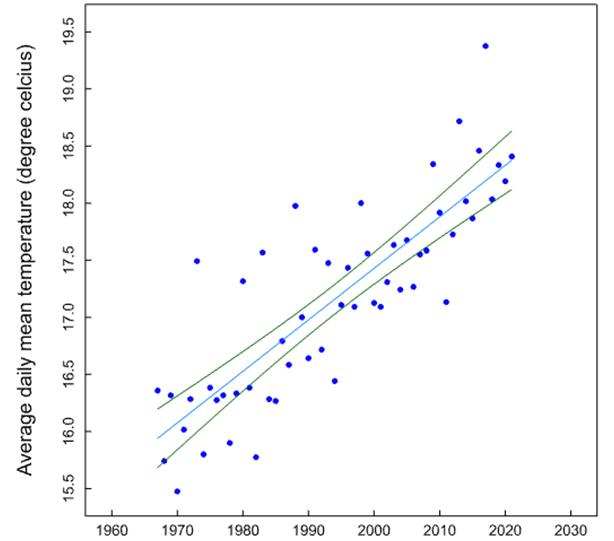
Temperature = Intercept + 0.0451 × Year (P < 0.001, R2 = 0.69). Data are from www.bom.gov.au
Figure 2. Changes in average daily mean temperature from October to May at Applethorpe from 1967 to 2021.
Temperature = Intercept + 0.0236 × Year (P < 0.001, R2 = 0.37). Data are from www.bom.gov.au
83
Conclusions
• The main scenarios for global climate change include an increase in the concentration of carbon dioxide (CO2) and an increase in average temperatures.
• The daily mean temperature has increased by 2°C on the Sunshine Coast over the past five decades.
• The impact of global warming has been less severe on the Granite Belt, with a 1°C increase in the mean temperature.
• These increases in temperature are associated with a decrease in potential yield of 6 to12% in the two areas.
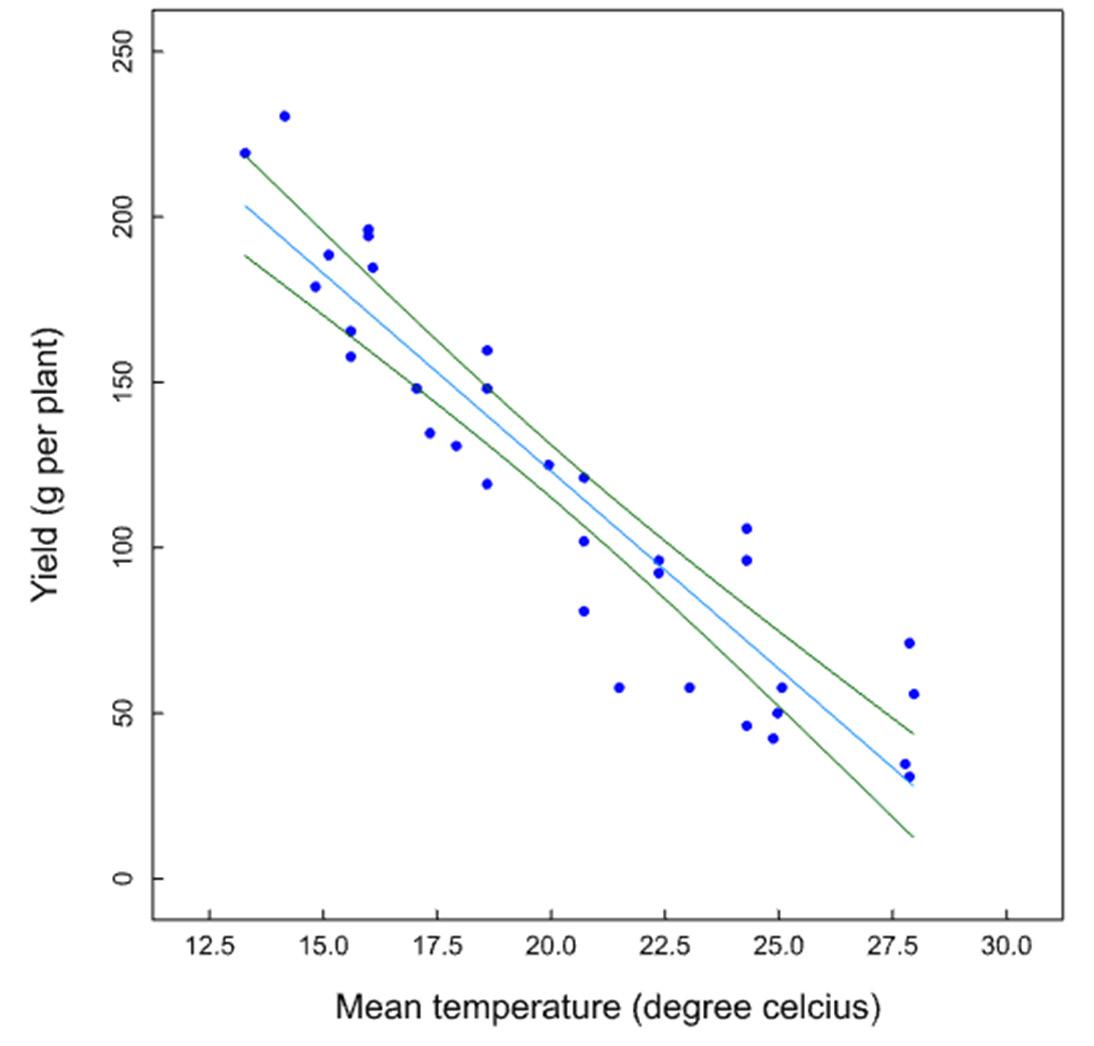
• Further decreases in yield are expected in the next few decades, in the absence of heat-tolerant cultivars and other strategies.
Acknowledgements
The Queensland Government has funded the research through the Department of Agriculture and Fisheries. Many thanks to the Florida Strawberry Growers’ Association (FSGA) for financial support, and Dr Penny Measham (DAF) for reading an earlier version of this article.
Figure 3. Relationship between yield and temperature in strawberry plants in temperature-controlled glasshouses in the United Kingdom. Yield (g per plant) = Intercept – 11.9 × Mean temperature (oC) (P < 0.001, R2 = 0.85). Data are from Le Mière et al. (1998).
BERRY AUSTRALIAN JOURNAL SUMMER 2022 EDITION 13 84
WHY SWITCH ® ?
As market leader for over twenty years, SWITCH ® fungicide remains the trusted choice among growers who value reliability. So why has SWITCH ® been popular for so long?
• SWITCH ® can be used in grapes, strawberries, leafy vegetables, onions, cucumbers, beans, peas and capsicums
• SWITCH ® controls some diseases caused by botrytis, sclerotinia, anthracnose, aspergillus and phoma spp.
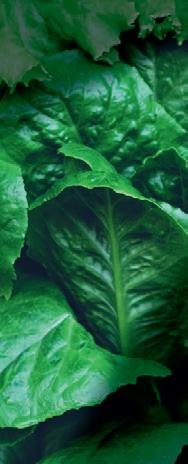





• SWITCH ® is the gold standard botrytis fungicide used for decades in grapes

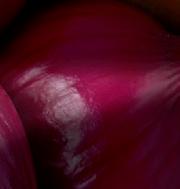

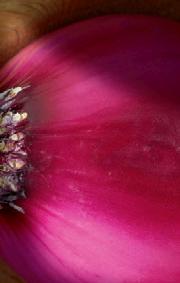













• SWITCH ® is great value for money
• SWITCH ® is backed by Syngenta’s technical team and strong supply chains For

® Registered trademark of a Syngenta Group Company. AD 22-048.

IS YOUR CROP PROTECTED? SCAN
HERE
representative or
further information talk to your local Syngenta
visit www.syngenta.com.au/switch
EZVENT
Mechanised venting at field scale simplicity
Open and close EZvent tunnels whenever necessary for optimum performance, whilst minimising labour bills.
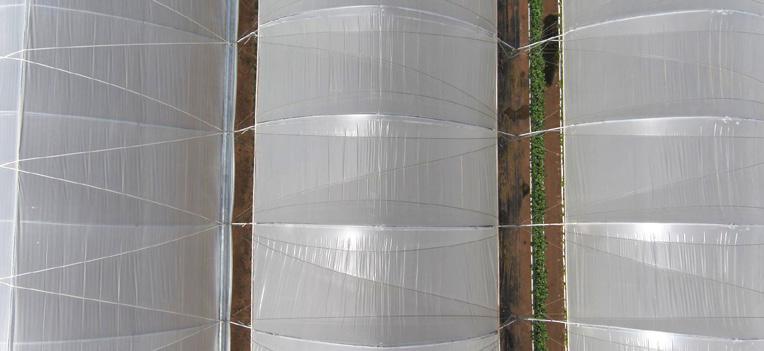
By venting strategically, you can control the effects of temperature and relative humidity on crop growth and development, and use extra air volume to counter the impact of diminishing light moving out of season.
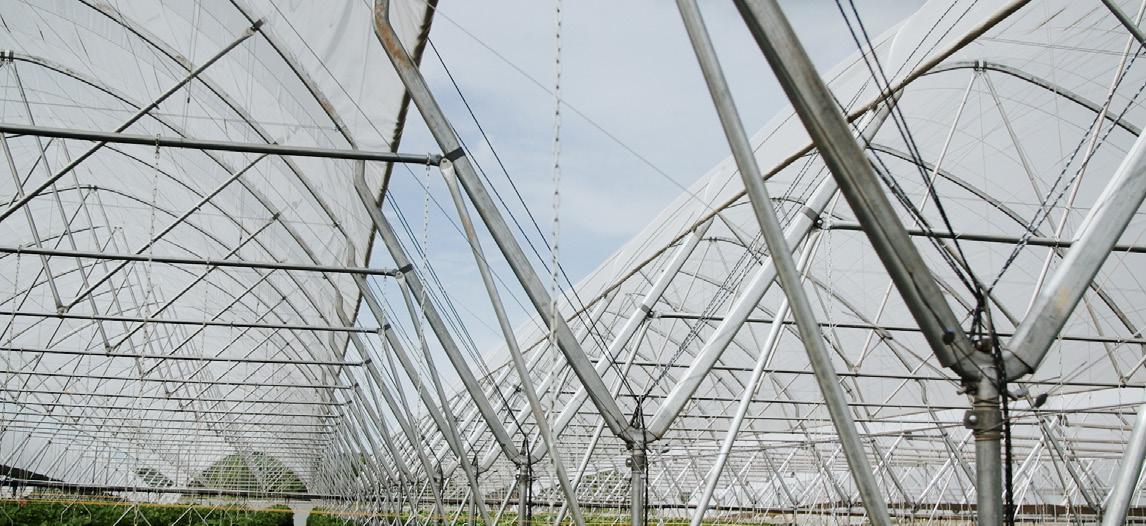

The EZvent is our simplest solution to mechanised venting, with reduced installation time, lower material costs compared to traditional roller venting systems, and straightforward automated operation.
PAYBACK SCENARIO
A
An average berry weight change from 20g to just 21g represents a 5% yield increase.
An additional 3t/ha would give the grower roughly a 3–4-year payback on a Haygrove venting system investment.

5% increase in yield on a 60t/ha strawberry crop equals an additional 3t/ha.
WWW.HAYGROVE.COM
Cold-plasma mediated control of postharvest strawberry pathogens
Ms Farhana Momtaz, PhD student; Professor Giles Hardy, Emeritus Professor Forest Pathology, Harry Butler Institute; Associate Professor Kirsty Bayliss, Centre for Crop and Food Innovation, Food Futures Institute; Murdoch University, WA
• Strawberries are highly perishable fruits due to their high moisture content
• Maintaining their quality to maximise postharvest shelf life is one of the major challenges for farmers and wholesalers
The rapid growth of fungi on strawberries is estimated to cause up to 50% of postharvest losses1,5 An effective control measure that does not affect fruit quality is required to prevent these losses. Cold plasma is an ionised gas with anti-microbial activities that has proven effective in controlling postharvest pathogens associated with strawberry fruit2.
In this research, strawberries were treated with cold plasma (CP) or plasma activated water (PAW) by immersion and stored at 4°C. Fruit quality parameters such as firmness, spoilage, colour, and weight were measured on the day of treatment and again six days later.
Fruit treated with CP or PAW had significantly less spoilage than untreated controls when assessed six days after treatment (Figure 1). Treatment did not alter firmness, colour or weight.

The baseline abundance of fungi associated with strawberries in WA before cold plasma treatment was measured using traditional isolation techniques and more detailed molecular analysis (Figure 2). Molecular analyses were also conducted after the cold plasma treatments to measure the inactivation of fungal communities (Figure 3). This method assessed the abundance of fungi that remained alive following treatment.
Figure 1. Spoilage of strawberries at day 6 following cold-plasma treatments. Zero (0) spoilage means none of the fruit in the sample had fungal contamination; five (5) spoilage means that all pieces of fruit in the sample had fungal contamination.
In addition to reduced spoilage, the relative abundance of fungi was also reduced on treated fruit. Two fungi appear to have survived plasma treatment, Cladosporium and Rhodoturula, but none of the remaining fungi were able to be detected.
These results demonstrate the potential of cold plasma to inactivate or kill postharvest strawberry pathogens. Further research is recommended to implement laboratory findings to large-scale industrial application.
STRAWBERRIES
87
Figure 2. Relative abundance of fungal communities in Fronteras variety before cold plasma treatment (A) traditional isolation and (B) molecular approach. Top 1% fungal genera were considered for molecular analysis.
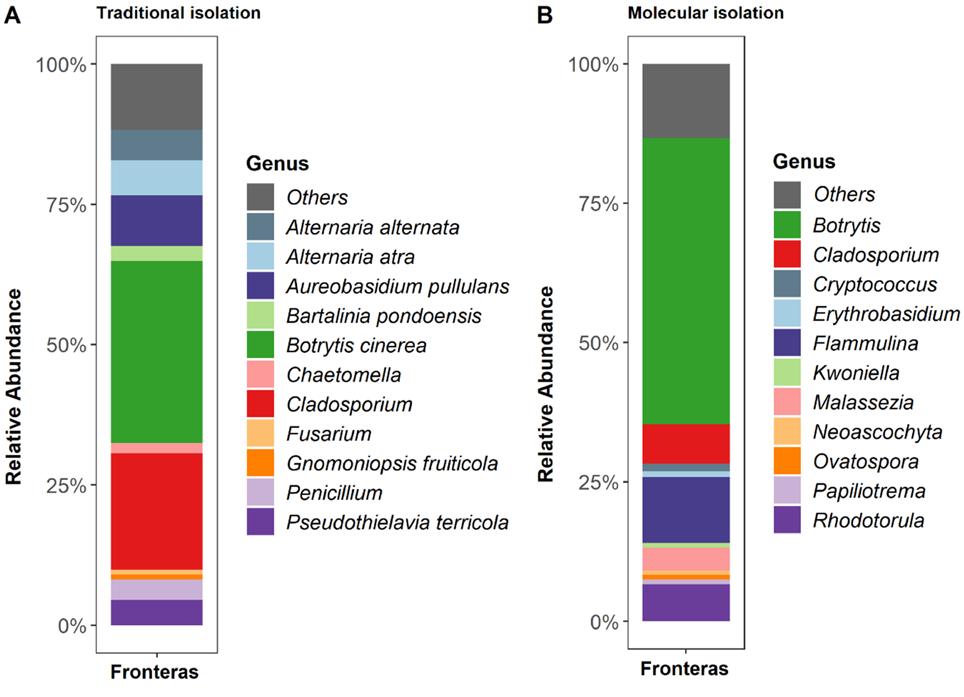

Figure 3. Live-fungal communities in a WA postharvest strawberry variety following CP and PAW treatments. C_D0 = Control Day 0, C_D6 = Control Day 6, T_D0 = Treated Day 0, T_D6 = Treated Day 6.
For further information, please contact Dr Kirsty Bayliss E: K.Bayliss@murdoch.edu.au
Acknowledgements
We would like to thank the Strawberry Growers Association of Western Australia for their financial support of this project. The PhD student, Ms Farhana Momtaz is supported by a Commonwealth Government Research Training Program (RTP).

References
1. Azam, M., Ejaz, S., Rehman, R. N. U., Khan, M. and Qadri, R. (2019) Postharvest quality management of strawberries. Strawberry-Pre-and Post-Harvest Management Techniques for Higher Fruit Quality.
2. Misra, N., Moiseev, T., Patil, S., Pankaj, S., Bourke, P., Mosnier, J., et al. (2014) Cold plasma in modified atmospheres for post-harvest treatment of strawberries. Food and bioprocess technology, 7, 3045-3054.
3. Momtaz, F., Bayliss, K. and Hardy, G. (2020) Fungi associated with postharvest strawberries. Strawberries, 5, 86-87.
4. Rana, S., Mehta, D., Bansal, V., Shivhare, U. and Yadav, S. K. (2020) Atmospheric cold plasma (ACP) treatment improved in-package shelf-life of strawberry fruit. Journal of food science and technology, 57, 102-112.
5. Trinetta, V., McDaniel, A., G. Batziakas, K., Yucel, U., Nwadike, L. and Pliakoni, E. (2020) Antifungal packaging film to maintain quality and control postharvest diseases in strawberries. Antibiotics, 9, 618.
88 BERRY AUSTRALIAN JOURNAL SUMMER 2022 EDITION 13


Brinkman Australia Pty Ltd | 18-20 Jarrah Drive, Braeside | Victoria 3195 T 03 9587 2566 | info@royalbrinkman.com.au • Quality • Reliability • Performance • Custom blending Royal Brinkman Premium Coco Substrates by BioGrow royalbrinkman.com/australia bio-grow.com/en/biogrow
When a plant is unfumigated they have a smaller root system which means that water and nutrient uptake is poor. As a result, more water and fertiliser have to be applied to the soil for the stunted root systems to extract both. This increases wastage and input costs.

Soil fumigation provides the strawberry plant with the ability to grow a larger healthier root system that allows more leaves to be produced at a faster rate which in turn allows the plant to flower earlier with a larger fruit set. The fruit set is also more pronounced meaning that the labor used to pick the fruit is more efficiently used and cost effective per unit of fruit picked.
Healthy plants also allow the strawberry plant to avoid major side effects from environmental shocks such as temperature extremes and charcoal rot. In addition, healthier plants allow the fruit to be more robust and to have an improved shelf life.
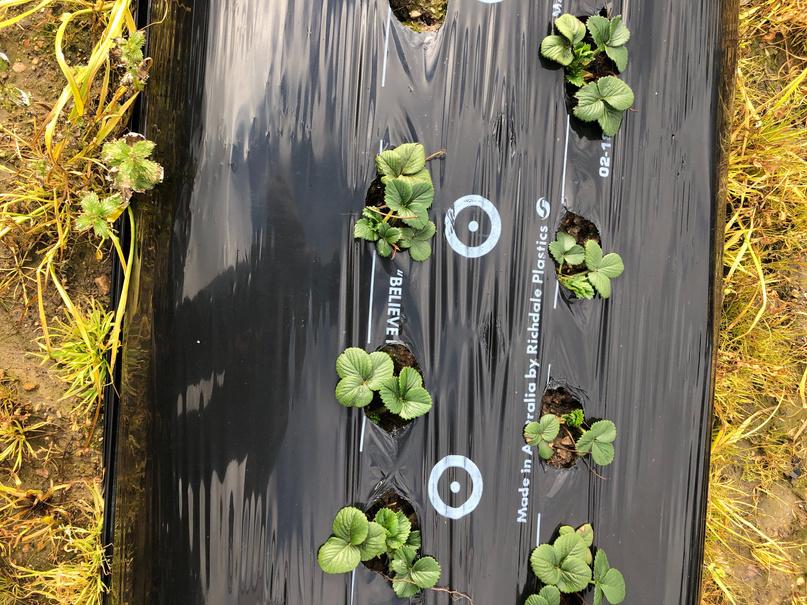
With improved soil health, faster crop establishment provides a solid foundation for more efficient plant production.


HEALTHY FIELDS. HEALTHY YIELDS.
trical.com.au 08 8347 3838 Our customers consistently achieve increased crop value and reduced pest and disease issues with .
Treated Untreated
WHEN SIZE MATTERS
SHORT WITHHOLDING A WINNER IN BERRY CROPS
Farm Manager Brett O’Neill said they trialled MIRAVIS® Prime fungicide for Botrytis last year and after seeing good results have incorporated it into their disease management program this season.
“We trialled MIRAVIS® Prime last year in our strawberry nursery where we can get a lot of Botrytis. Some tunnels were sprayed with MIRAVIS® Prime, some with Switch® and some were unsprayed” said Mr O’Neill.

“We saw good enough results in our trial to start using MIRAVIS® Prime in our raspberry crops this season.”
MIRAVIS® Prime fungicide inhibits Botrytis infection at four stages of development – spore germination, formation of germ tubes, appressorium development and mycelium growth. Fungi cannot grow on the surface or penetrate the plant. This effectively breaks the disease cycle, while managing the onset of resistance. MIRAVIS® Prime fungicide contains two actives, incorporating the proven performance of fludioxonil with the powerful active pydiflumetofen. Pydiflumetofen is a new active ingredient developed by Syngenta that belongs to the carboxamide chemical group (Group 7), being one of two actives in MIRAVIS® Prime fungicide. It diffuses rapidly into the waxy layer of plants, where it accumulates, then moves slowly into the leaf tissue via translaminar movement. The other active ingredient is fludioxonil (Group 12), a contact fungicide that adheres to the outer cuticle of the plant to form a protective barrier.
MIRAVIS® Prime fungicide can be applied at any stage of berry production, from flowering through to just prior to harvest.
“The 1 day withholding period of MIRAVIS® Prime is a major advantage when we have flowering and fruiting going on at the same time and we’re picking at all stages of the year,” said Mr O’Neill.
MIRAVIS® Prime fungicide should be applied preventatively as part of a protectant program with applications beginning when conditions favour disease development and before symptoms develop. With a maximum of two applications per crop, MIRAVIS® Prime fungicide offers excellent protection when used in rotation with fungicides from alternate modes of action.
“With its short withholding period, we will choose MIRAVIS® Prime rather than our traditional fungicides,” said Mr O’Neill.
Although Botrytis is always present, it generally only becomes a problem in cool and wet weather when the fungus is able to infect plant tissue. Botrytis infection during flowering (blossom blight) can prevent fruit from forming and reduce yields. Botrytis can also cause post-harvest fruit rot later in the season. Therefore, preventing infection from occurring in the first place is critical and flowering is the most vulnerable stage of the crop.
At Paradise Fruits, the raspberry growing season runs for 12 months of the year, using a prima cane and floricane production system in coir bags.
“We’ve already applied MIRAVIS® Prime once this year during flowering when rain was forecast, and conditions were favourable for Botrytis,” said Mr O’Neill.
MIRAVIS® Prime fungicide is registered for Botrytis in all berries, including raspberries, blackberries, blueberries, dewberries and currants in both field and protected cropping. It is rainfast within one-hour and the suspension concentrate formulation offers good compatibility with other crop protection products.
“It’s good to have something up your sleeve for later in the season. We can save MIRAVIS® Prime for high humidity warmer periods during harvest, especially towards Christmas.”
When applied in strawberries for Botrytis, MIRAVIS® Prime fungicide also has activity on powdery mildew.
“I know of strawberry growers in the area who are using MIRAVIS® Prime and raspberry growers as well,” said Mr O’Neill.
“MIRAVIS® Prime is definitely going to be part of our disease management program in the future.”
Syngenta is a leading agriculture company helping to improve global food security by enabling millions of farmers to make better use of available resources. Through world class science and innovative crop solutions, our 28,000 people in over 90 countries are working to transform how crops are grown. We are committed to rescuing land from degradation, enhancing biodiversity and revitalizing rural communities. To learn more visit www.syngenta.com.au and www.goodgrowthplan.com. Follow us on Twitter® at www.twitter.com/SyngentaANZ. ® Registered trademark of a Syngenta Group company.
FOR MORE INFORMATION ABOUT MIRAVIS® PRIME FUNGICIDE Speak to your local Syngenta representative or visit www.syngenta.com/miravis-prime
ADVERTORIAL CONTENT
Like most berry growers, Paradise Fruits battle Botrytis grey mould in their crops every season.
Located at Elimbah on Queensland’s Sunshine Coast, Paradise Fruits have 12 hectares of raspberries under tunnels as well as a nursery for growing plug plants for strawberry growers.
Latest update from the Australian Strawberry Breeding Program
BS17000: National Strawberry Varietal Improvement Program (2017-2022)
The Australian Strawberry Breeding Program (ASBP) aims to breed new varieties that are specifically adapted to Australia’s three major production climates: temperate, subtropical, and Mediterranean. These varieties must be highly profitable for growers and have excellent quality to satisfy consumer preferences. This article provides an update on the 2022 subtropical and Mediterranean trial seasons which have recently wrapped up, and an overview of the start of the 2022-23 temperate summer season.
The breeding program consist of four stages of trials that run concurrently every year in the three production regions. Firstly, parent plants are specifically chosen with high value traits and cross-pollinated in complementary combinations. The seeds are then germinated, with each seed producing a genetically distinct individual. These seedling plants are visually assessed for key traits at monthly intervals throughout the season. Seedlings that perform poorly throughout the season are discarded, and those that show promise are clonally propagated via runners for trialling in early-stage clonal trials the following year. Plants in the clonal trials are harvested and assessed weekly for a large number of production and consumer traits.
At the end of the season, the ASBP breeding team select the best performing plants based on quantitative genetic analyses and trial these for a second year in advancedstage clonal trials. After advanced clonal testing, the best plants are yet again selected for trialling in an ‘on-farm’ environment by a small number of growers across the production region.
Feedback and data from the growers over two years and input from the region’s reference group panel are used to decide whether any varieties will be commercially released to industry.
Subtropical breeding trials
The ASBP subtropical breeding trials are located at the Maroochy Research Facility in Nambour and Bundaberg Research Facility. This year, 16,500 seedlings were planted at Nambour and around 2,700 at Bundaberg (Figure 1).
Based on visual assessments, 201 seedlings were selected for clonal trialling next year, with 78 coming from Bundaberg and six originating from a seed exchange with the University of Florida. Also evaluated at Nambour were 136 early-stage and 42 advancedstage accessions (Figure 2), with 28 and 10 being selected for trialling again in 2023, respectively.
Two farms in Bundaberg and three in south-east Queensland trialled 11 advanced-stage accessions. One selection, 2017-040, has been progressed for protection under Plant Breeder’s Rights and is now available for trial in small numbers from some plant propagators.
92 STRAWBERRIES BERRY AUSTRALIAN JOURNAL SUMMER 2022 EDITION 13
Jodi Neal – Principal Plant Breeder, Katie O’Connor – Plant Breeder, Australian Strawberry Breeding Program Team, Queensland Department of Agriculture and Fisheries

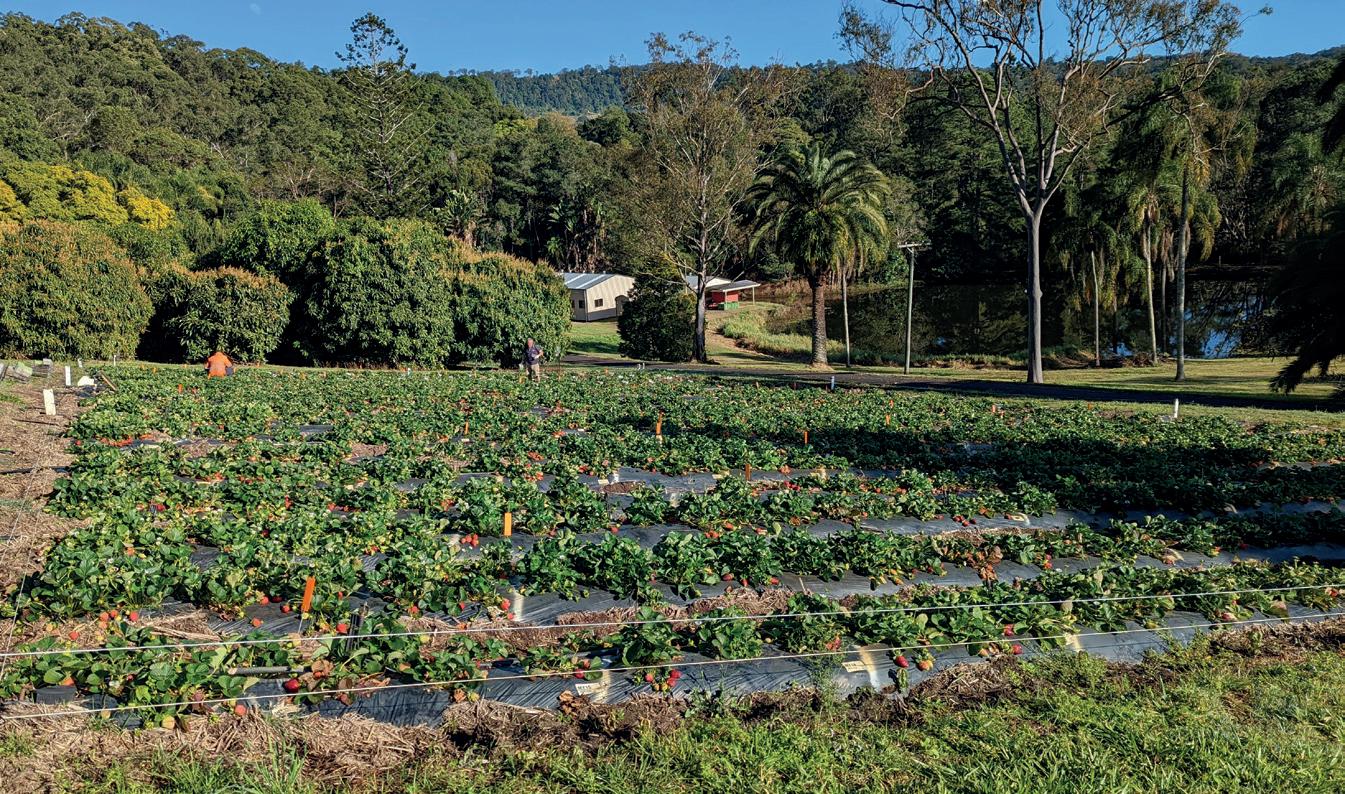 Figure 1. Seedlings at Bundaberg, with coloured flags indicating good performance at different time points throughout the 2022 subtropical season. Photo credit: Katie O’Connor
Figure 2. Harvesting of the 2022 subtropical clonal trial at Nambour.
Figure 1. Seedlings at Bundaberg, with coloured flags indicating good performance at different time points throughout the 2022 subtropical season. Photo credit: Katie O’Connor
Figure 2. Harvesting of the 2022 subtropical clonal trial at Nambour.
93
Photo credit: Katie O’Connor
Mediterranean breeding trials
The Australian Mediterranean production region is focussed around Perth, WA. Thankfully, inter-state travel was permitted again in 2022 and Jodi Neal was able to travel to WA to visit the trials throughout the season.
Around 1,300 seedlings were planted and evaluated at a grower’s farm in Bullsbrook (Figure 3). These seedlings all had a clonal copy stored in tissue culture at Maroochy Research Facility, to circumvent the issues and risks involved in transporting selected plants back to Queensland for propagation. Additionally, 71 Mediterranean seedlings were assessed in the powdery mildew resistance trial at Nambour, and 380 seedlings that were not established enough for cloning were instead planted at Nambour. A total of 45 Mediterranean selections were selected from the seedling trials for evaluation in early-stage trials in 2023.
Ten advanced-stage clones and 23 early-stage clones were evaluated at the same grower’s property, and five of the advanced accessions were also assessed across two on-farm trials in Bullsbrook. Two advanced and eight early-stage clones were selected to trial again in 2023, incorporating feedback from local growers who visited the trial in August and October 2022.
Temperate breeding trials
The ASBP temperate breeding trials are conducted at Wandin North, Victoria and Applethorpe Research Facility, Queensland. Around 1,300 seedlings were planted at Applethorpe, and 13,900 at Wandin in April.
The clonal trial is located at Wandin, and is comprised of 51 early-stage and 39 advanced-stage accessions (Figure 4). Evaluation of fruit and plants in the clonal trial commenced in late October, and visual seedling assessments for the summer season will begin in mid-November.
Fifteen accessions are being trialled across ten temperate on-farm trials over the 2022/23 summer season. Plants of two newly-released temperate varieties Tahli-ASBP and Tamara-ASBP are being grown commercially on multiple farms this season, with early reports of performance sounding positive. Detailed information on these new varieties can be found on PAGE 75 in the Spring 2021 issue of the Australian Berry Journal.
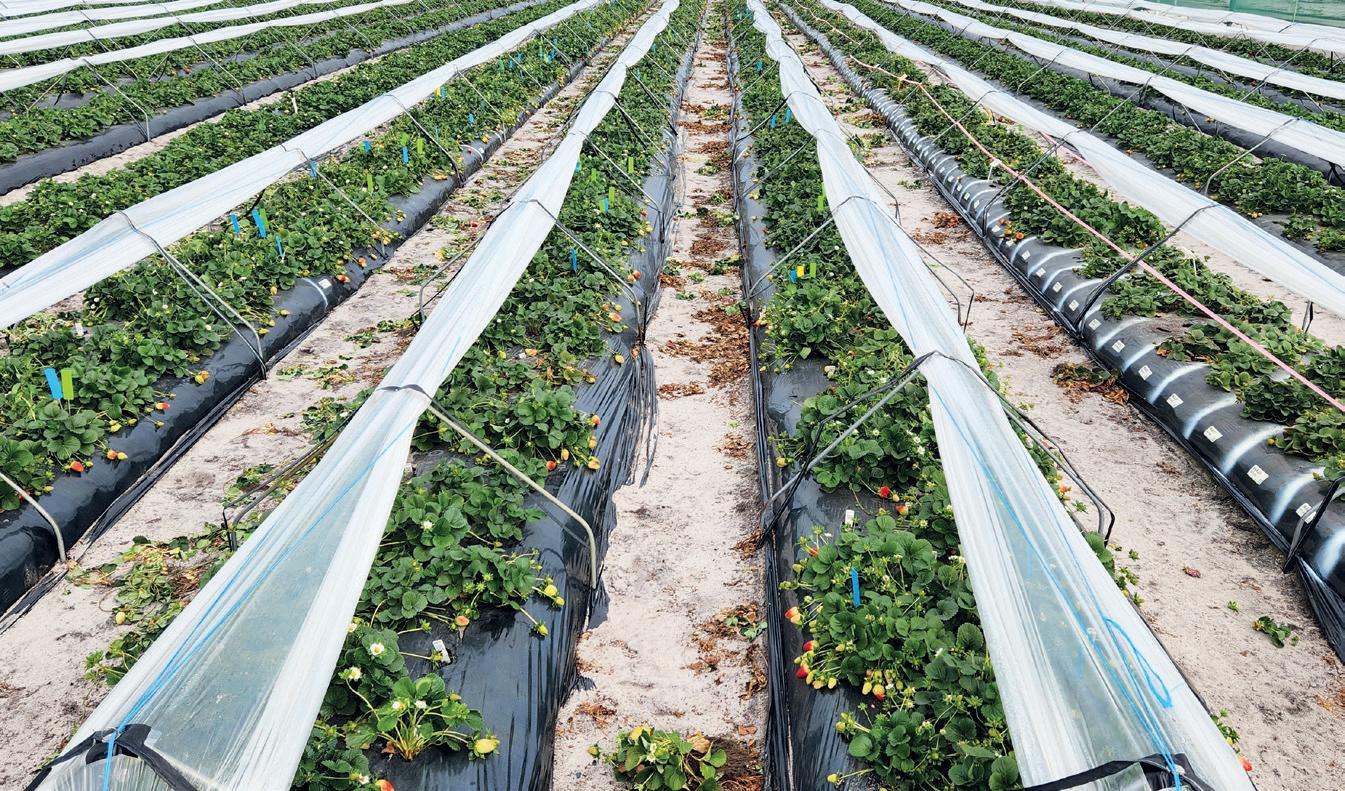 Figure 3. 2022 Mediterranean seedling and clonal trial at a grower’s property in Bullsbrook, WA.
Figure 3. 2022 Mediterranean seedling and clonal trial at a grower’s property in Bullsbrook, WA.
BERRY AUSTRALIAN JOURNAL SUMMER 2022 EDITION 13 94
Photo credit: Jodi Neal

 Figure 4. 2022-23 temperate clonal and seedling trial at Wandin, Victoria. Photo credit: Karen Spencer
Figure 4. 2022-23 temperate clonal and seedling trial at Wandin, Victoria. Photo credit: Karen Spencer
95
Figure 5. Strawberry breeders (L-R) Twan Couwenberg, Dr Jodi Neal, Albert Konings and Dr Katie O'Connor at Konings Plant Netherlands. Photo credit: Martine Somers
International Strawberry Congress
Breeders Jodi Neal and Katie O’Connor attended the International Strawberry Congress in Antwerp, Belgium in September.
The congress was a fantastic opportunity to meet with peers face-to-face for the first time in many years. One notable highlight was the discussion of emerging technology.
More than many other international breeding groups, the Australian program is working towards, or has already achieved some of the requirements needed by robotic harvesters and yield prediction AI that will form a critical part of future strawberry production systems.
Jodi and Katie met with breeders and other staff from Vissers Plant Innovators (Netherlands), with whom ASBP has established a seed exchange of temperate material.
They also had a tour of the extensive breeding efforts being conducted at the NIAB East Malling Research Institute and Driscoll’s in Kent, UK, as well as surrounding farms including one using 50 robotic strawberry harvesters.
The trip resulted in a much deeper understanding of temperate strawberry breeding efforts around the world and contextualised the position of the ASBP in terms of the global strawberry breeding network.
Acknowledgements
The Australian Strawberry Breeding Program has been funded by Hort Innovation using the strawberry research and development levy, with co-contributions from the Queensland Government through its Department of Agriculture and Fisheries and funds from the Australian Government.

We thank the contributions by the Temperate and Subtropical Reference Groups and Mediterranean industry members who have helped guide the program, the Industry Development Officers, and all other industry members who provide feedback, advice, and support.
We are also extremely grateful to all the fruit producers in all states who have trialled, collected data on, and given feedback on our on-farm accessions. This has helped us make more informed and better commercial judgments.
The Australian Strawberry Breeding Program team members include Jodi Neal (project lead), Junrey Amas (WA technical officer), Maddy Betts (laboratory technical assistant), Mitchell Gates (Nambour field assistant), Apollo Gomez (pathologist), Joanna Kristoffersen (genetics and virus indexing), Joy Lai (WA technical officer), Dale McKenna (Nambour field technical officer and hydroponics), Pierick Martin (Nambour field assistant), Alan McWaters (Applethorpe technical officer), Alan Noon (Wandin field assistant), Katie O’Connor (breeding and genomics), Michelle Paynter (virus indexing, tissue culture, and pathology), Sandy Shaw (Wandin field assistant), Karen Spencer (Wandin operations manager), and Louella Woolcock (Nambour field and glasshouse operations manager).
96 BERRY AUSTRALIAN JOURNAL SUMMER 2022 EDITION 13
•
•
•
•
•
•






Innovation. Quality. Solutions. ® Flute is a registered trademark of Nippon Soda Co., Ltd. ® Kenja is a registered trademark of Ishihara Sangyo Kaisha, Ltd. 220727
Effective control of grey mould in berries
Flexible use pattern
Strong protectant action
Highly effective on powdery mildew in strawberries
Nil withholding period
Translaminar & vapour action FUNGICIDE ® 50 EW FOR THE B EST BERRIES
UVC as a non-chemical alternative for managing strawberry diseases
Helen Newman, Berry Industry Development Officer, Agricultural Produce Commission (WA)
• The number of fungicides available to plant propagators and strawberry growers is limited and has seen the emergence of fungicide resistance* in multiple pathogens across multiple fungicides around the world.
• Fungicide resistance must be avoided as it puts pressure on other fungicide groups, potentially leading to significant yield losses.
To help solve this problem, researchers from the University of Florida joined with five other collaborators on a USDA-funded project that aims to integrate disease management across the nursery and fruit production systems, to break pathogen cycles and reduce the number of single-site fungicide applications.
Project collaborators:
• Lighting Research Center RPI, USA
• Cornell University, USA
• Norwegian University of Life Sciences
• Saga Robotics in Norway
• Norwegian Institute of Bioeconomy Research
One of the objectives of this project was to develop non-chemical alternatives for nurseries and field production.
Dr Natalia Peres, Professor of Plant Pathology, University of Florida, Golf Coast Research and Education Centre, gave a presentation at BerryQuest 2022 on the non-chemical alternative UVC which she and her colleagues have been working on. This article summarises Natalia’s presentation. You can also view Natalia’s presentation from BerryQuest 2022 at youtu.be/h3UkCM4YzZM
How UVC works
Lamps producing UV light have been commonly available for over 75 years, used in hospital settings, water filtration systems and, in more recent times, to disinfect hand-held devices like cell phones and toothbrushes. Ultraviolet light in the UVB and UVC ranges has germicidal effects, with wavelengths from 250 to 280nm (the UVC range) being the most effective against pathogens.
UVC damages the DNA of pathogens. Many pathogens can repair DNA damage caused by UV during the day with mechanisms that are activated by the blue light and UVA available from the sun. This repair mechanism is not active during darkness, so UVC can be applied at night with deadly force.
UV is not effective against all pathogens and pests; it’s a contact treatment, so is most effective against those that are exposed on the surface of the plant. Among the potential diseases, powdery mildew is a good target because it is wholly external to the host (the strawberry plant), being on the surface of the leaves or the fruit. Powdery mildew is also more persistent in protected cropping environments where UV light is disrupted. More intensive chemical control of powdery mildew in these environments can exacerbate resistance development in other pathogens like Botrytis which are controlled using the same chemical groups.
* For an Australian perspective on fungicide resistance, refer to PAGE 83 of the Autumn 2021 edition of the Australian Berry Journal.
STRAWBERRIES
98 BERRY AUSTRALIAN JOURNAL SUMMER 2022 EDITION 13
UV has been used in European greenhouse facilities for powdery mildew control for some years. In these environments, lamp arrays are suspended above the plants and turned on for several minutes, sometimes hours, during the night when there are no staff present (Figure 1). The challenge of this project was to build a system that works outdoors in the field.
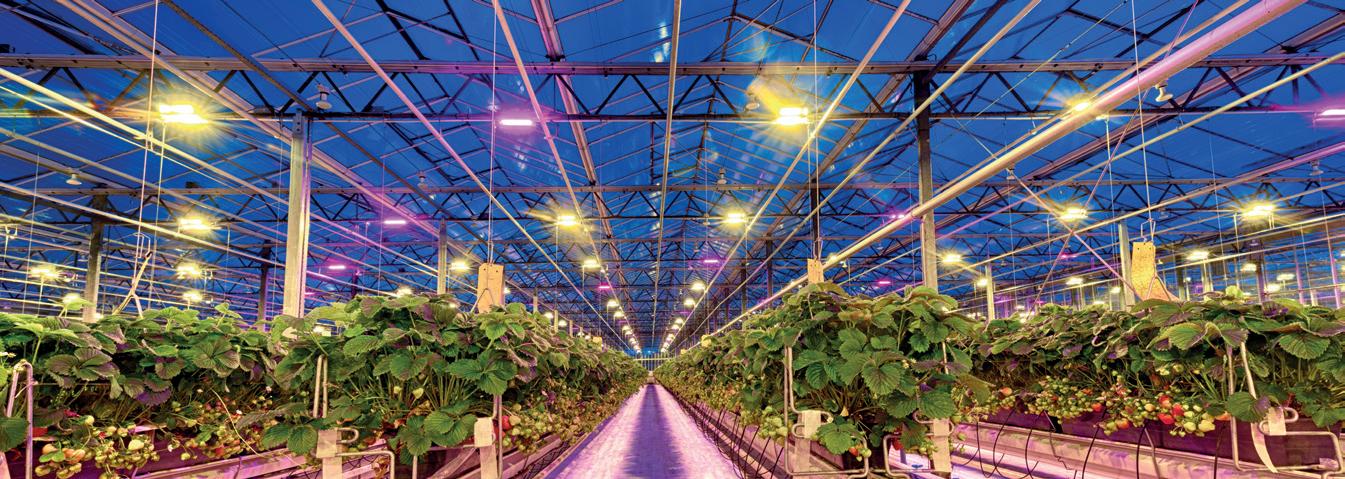
Field application of UVC
As UVC is basically a contact treatment, the lamp array and reflectors must be designed to ensure the light reaches the inner canopy and underside of leaves. Lamps must also be close enough to the canopy to achieve the target J/m2 within practical application times (tractor speeds). The prototype built as part of this project used 20 UVC germicidal lamps (254nm) in a hemicylindrical array (Figure 2).
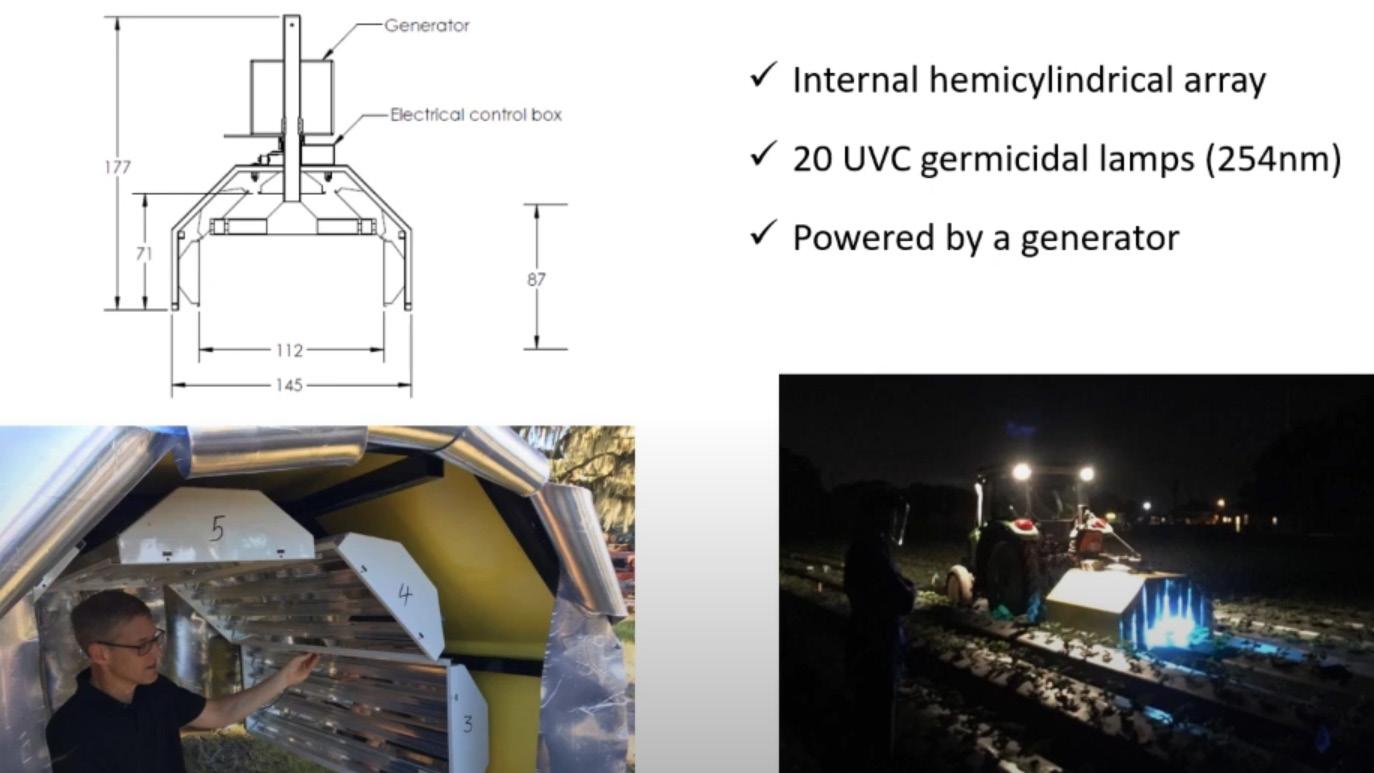
BERRY AUSTRALIAN JOURNAL SUMMER 2022 EDITION 13
Figure 1. Commercial usage of UV in greenhouses in Europe. Photo credit: ww.oreon-led.com
Figure 2. Prototype UVC applicator designed to suit the dimensions of strawberry beds in Florida.
Photo credit: Natalia Peres
99
J/m2 : Joules per square metre is the standard unit of measurement defined by the International System of Units (SI) of radiant exposure.
Measuring dosage rates
It is important to calibrate UVC dosage rates throughout the season. This is done using UV meters located throughout the field to check that the tractor (or if you’re lucky, robot) is travelling at the correct speed to achieve the target number of J/m2 per application (Figure 3).
UVC treatment results
Field trials in 2016/17, 2017/18 and 2018/19 showed that UV treatments were similar or more effective than standard fungicide sprays for the control of Powdery mildew (Figure 4 and Table 1).
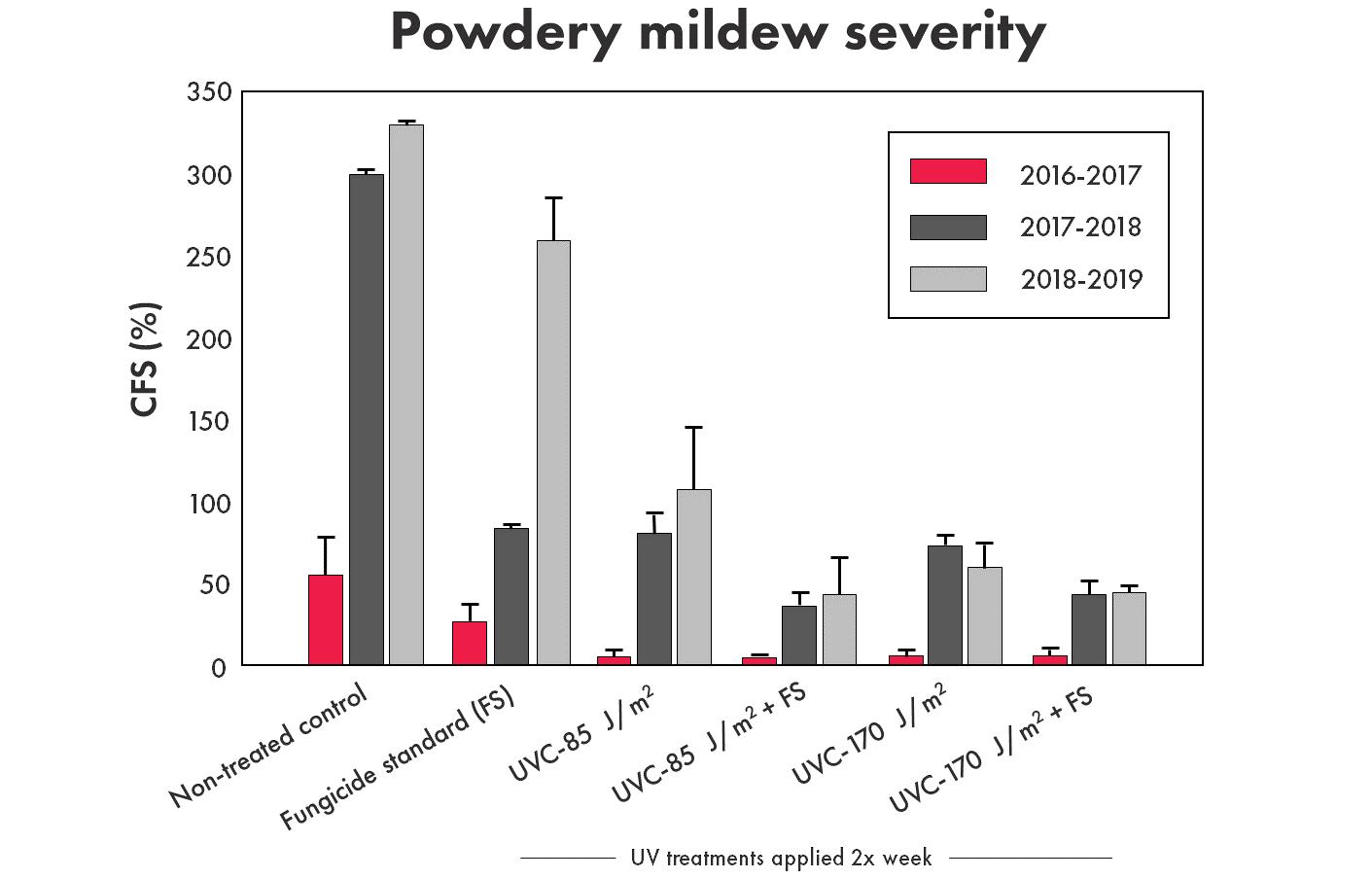
Twice weekly applications of UVC at 85 J/m2 (equivalent to a tractor speed of 4.5 km/hr with the prototype shown in Figure 2) showed similar efficacy to standard fungicide treatments; the 85 J/m2 UVC treatment significantly outperformed the standard fungicide treatment in 2018/19 due to suspected fungicide resistance.
Treatments of 170 J/m2 UVC and UVC treatments in addition to standard fungicide treatments showed even better control of powdery mildew on leaves and fruit.
Figure 3. Light meters used to calibrate and check UVC dosage rates (Joules/m2).

Photo credit: Stock image
Once weekly applications of UVC were also found to be as effective as standard fungicide sprays (Figure 5). The effectiveness of weekly UVC applications will depend on the susceptibility of the strawberry cultivar to powdery mildew and the prevalent disease pressure.
100 100 BERRY AUSTRALIAN JOURNAL SUMMER 2022 EDITION 13
Figure 4. Severity powdery mildew symptoms on foliage comparing standard fungicide treatments to twice weekly UVC treatments and twice weekly UVC treatments plus standard fungicide treatments.
Figure 5. Once weekly UVC applications compared to twice weekly UVC applications.
Table 1. Incidence of powdery mildew on fruit comparing standard fungicide treatments to twice weekly UVC treatments and twice weekly UVC treatments plus standard fungicide treatments.
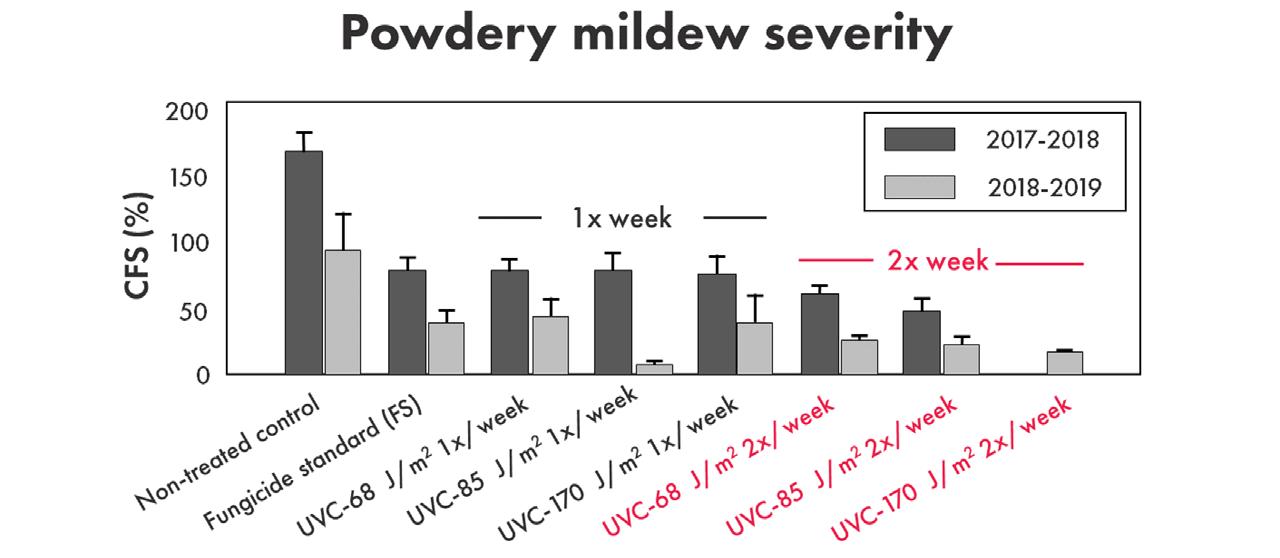
Treatments (UV treatments applied 2 x week)
Fruit Powdery Mildew incidence (%) 2017/-2018 Season 2018/-2019 Season
Non-treated control 67.1 a 41.9 a
Fungicide standard (FS) 36.1 b 30.1 a
UVC-85 J/m 2 37.9 b 4.7 b
UVC-85 J/m 2 + FS 20.2 cd 1.0 b
UVC-170 J/m 2 31.2 bc 4.2 b
UVC-170 J/m 2 + FS 14.0 d 1.7 b
P value 0.0003 0.0018
101 101
Tractor pulled and autonomous robots
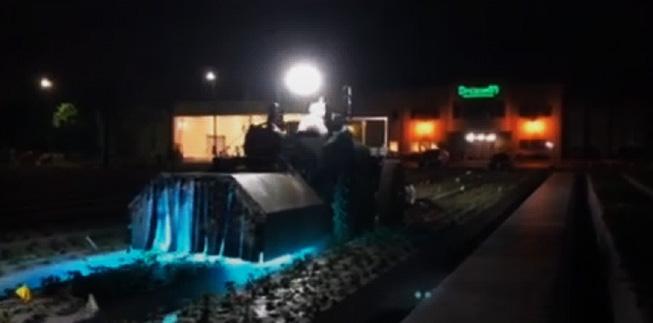
There are many UVC units being built and tested in Florida and in other parts of the world for use in nurseries and in fruit production fields. Figure 6 shows some of the different tractor pulled units that are currently in use.

d c
Figure 6. A) system used in a nursery production field; B) system used in a nursery production field; C) unit built for a Californian fruit production bed configuration; D) unit built for use in grapes in New York.



Photo credit: Supplied, Natalia Peres
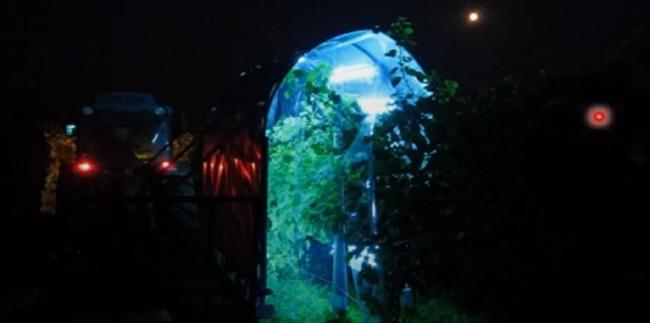
a a
b b
The project team has also been colaborating with Saga Robotics to evaluate an autonomus robot they have developed called Thorvald (Figure 7).
Figure 7. Saga Robotics ‘Thorvald’ autonomous robot that can apply UVC without the need for a tractor.
BERRY AUSTRALIAN JOURNAL SUMMER 2022 EDITION 13 102 102
Photo credit: Kristoffer Skarsgård, Saga Robotics
KEY MESSAGES
• UVC is an alternative to reduce the use of single site fungicides for the control of powdery mildew in nurseries and fruit production fields.
• This potential reduction in fungicide use is economically sound, good for the environment and may extend the life of fungicides by reducing the selection pressure for resistance for powdery mildew and other pathogens that co-exist in the open fields.
• In addition to powdery mildew, UVC has also been found to be effective against two spotted spider mite eggs. Adult mites appear to be tolerant of the treatment.
• Tractor pulled UVC units and autonomous robot applications are equally effective.
UVC testing in Australia
Powdery mildew is also an important disease for runner growers and fruit producers in Australia. Management currently relies heavily on fungicide intervention with a limited number of fungicide groups that must be rotated regularly to avoid the risk of resistance. Evaluation of non-chemical options is warranted to prolong the effectiveness of the current fungicides registered, reduce reliance on chemicals and improve long-term sustainability.
Apollo Gomez, Senior Plant Pathologist at the Department of Agriculture and Fisheries (DAF) in Queensland, has received funding from the ‘Driving ag-tech adoption across Australia (AS20007)’ project to investigate the efficacy of locally sourced UVC lamps against powdery mildew in strawberry. A small glasshouse pot trial study is currently underway at the DAF Nambour facility to gather efficacy and/ or severity data. Trial results will be presented in future editions of the Australian Berry Journal when available.
Driving ag-tech adoption across Australia (AS20007) is funded by the Hort Frontiers Advanced Production Systems Fund, part of the Hort Frontiers strategic partnership initiative developed by Hort Innovation with co-investment from the Department of Agriculture and Fisheries, Queensland.
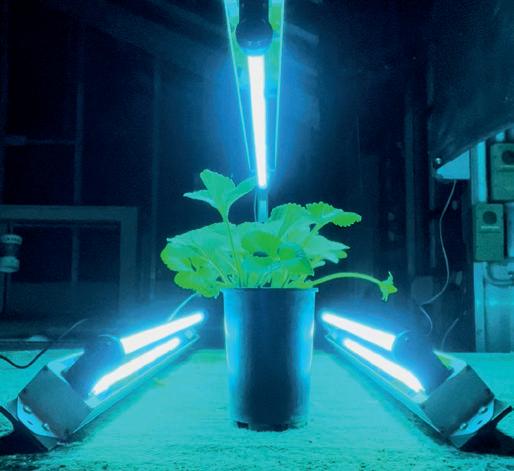
(Top) a UVC light treatment in the small glasshouse trials (Bottom) UVC exposure can cause eye and skin injuries so it’s important to wear protective clothing and face shields. Photo credit: Apollo Gomez, DAF
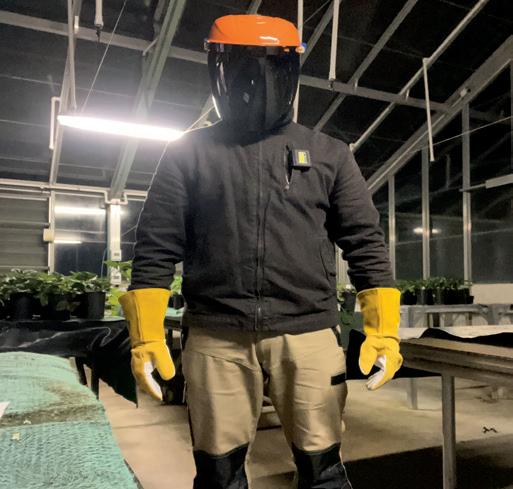
103 103
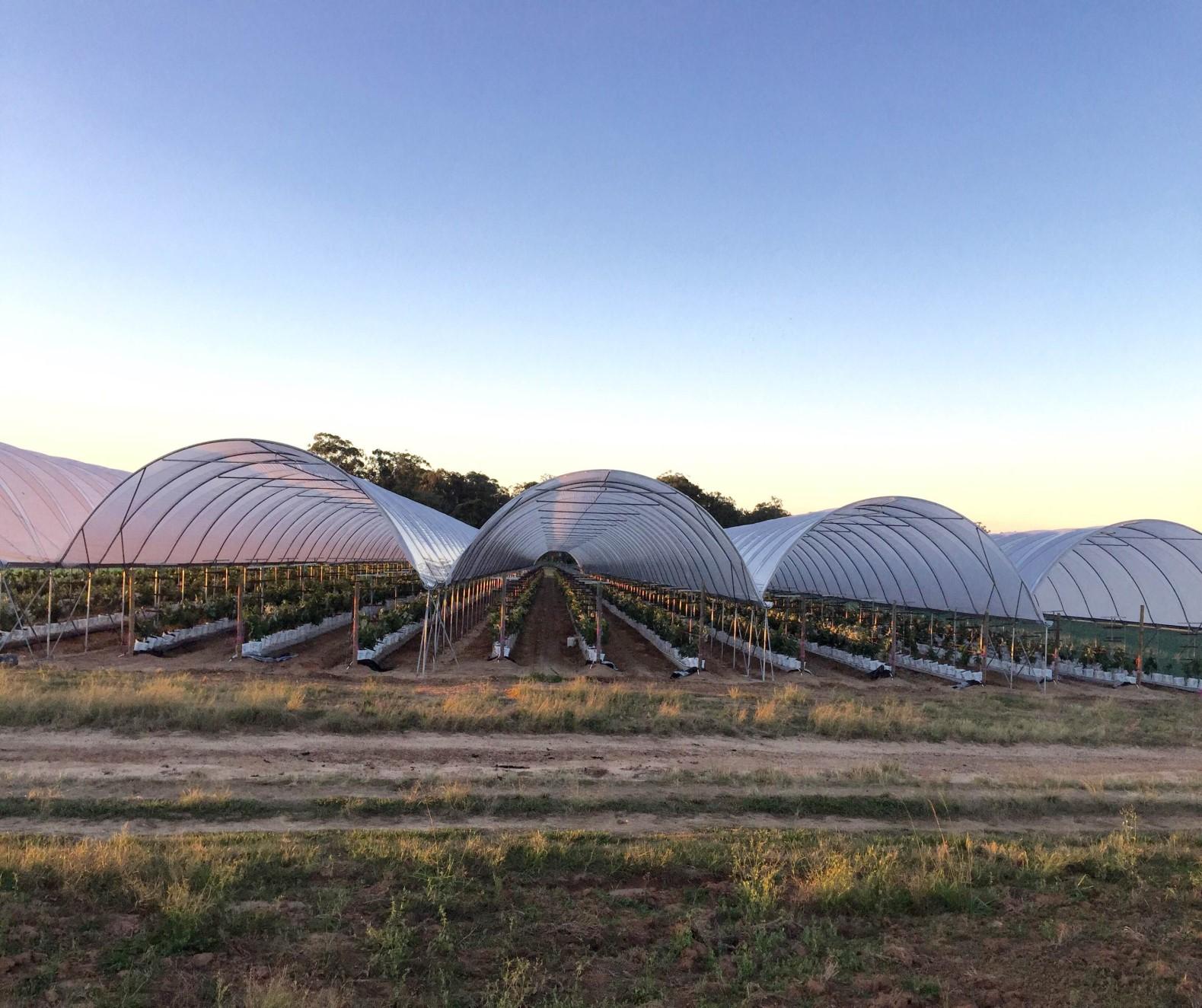




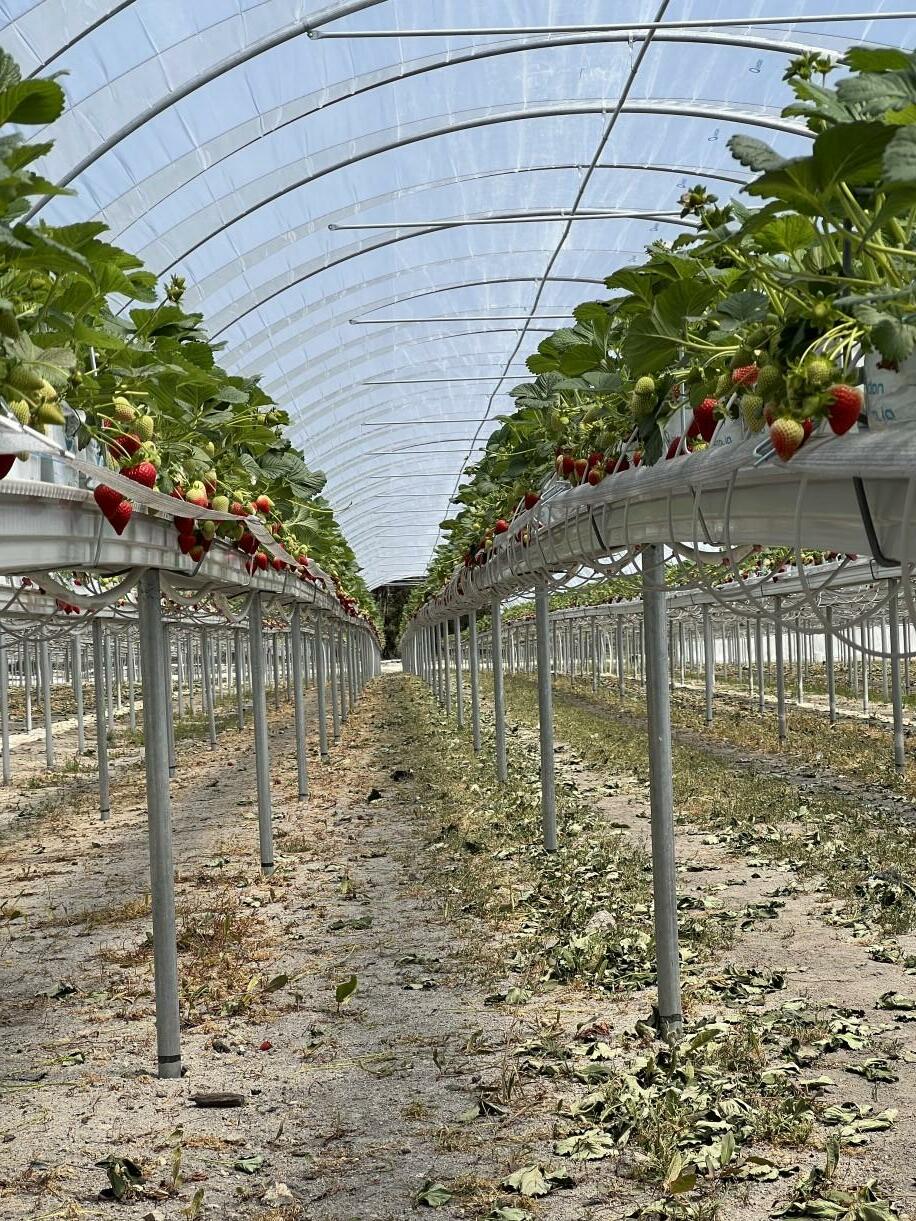
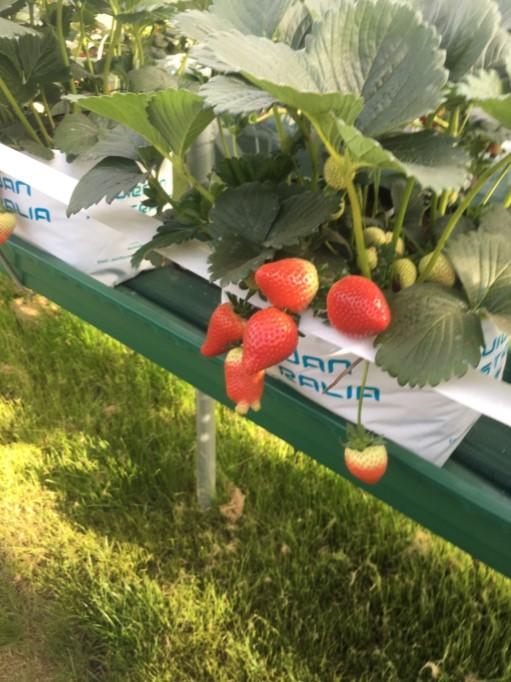
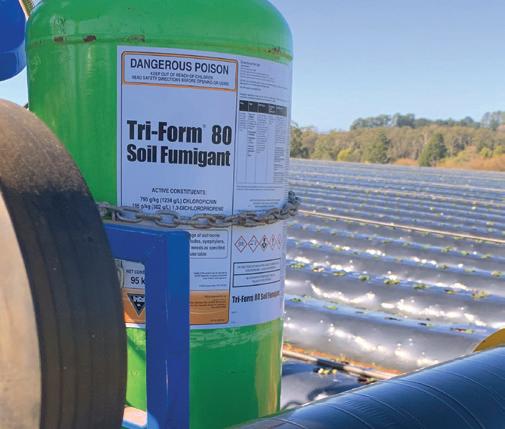
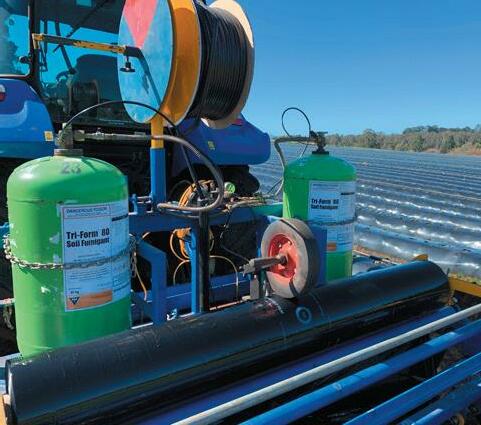
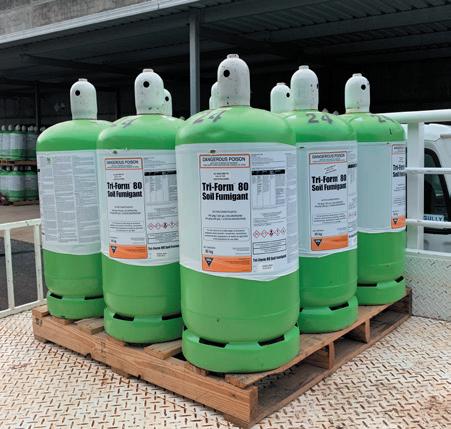
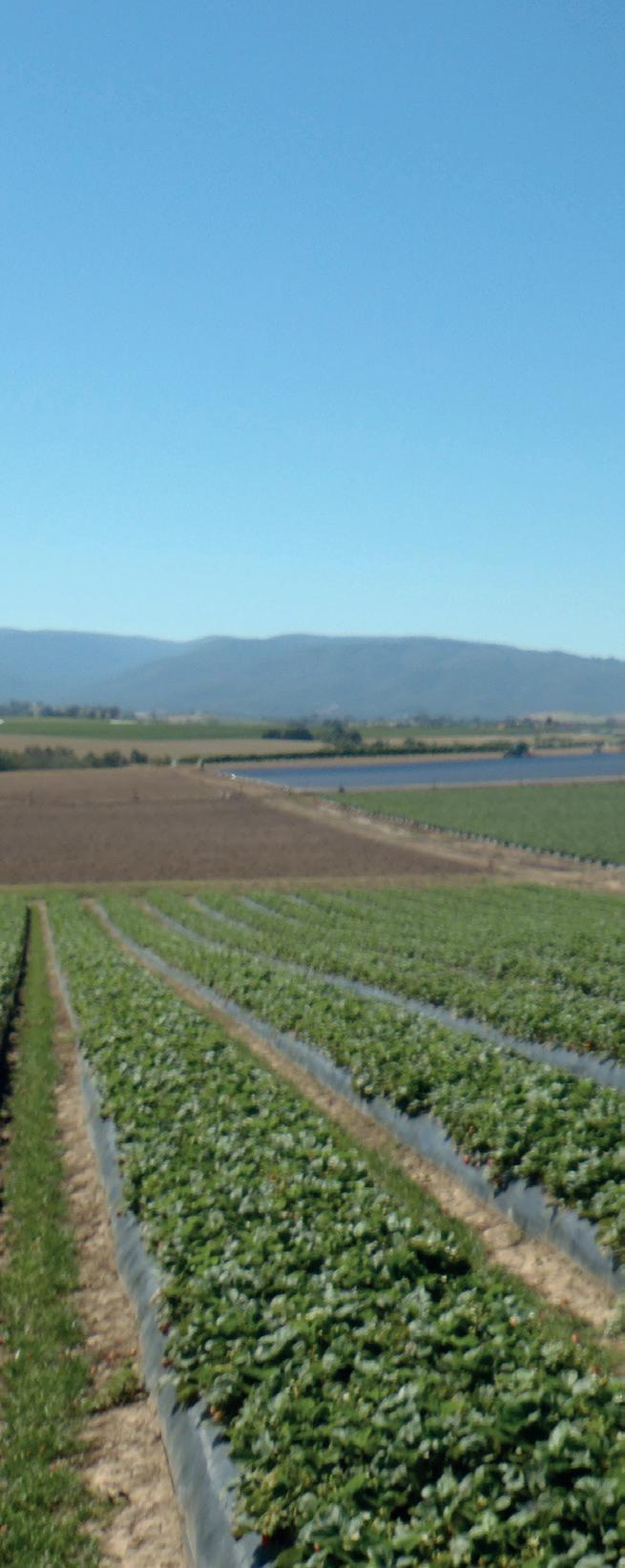

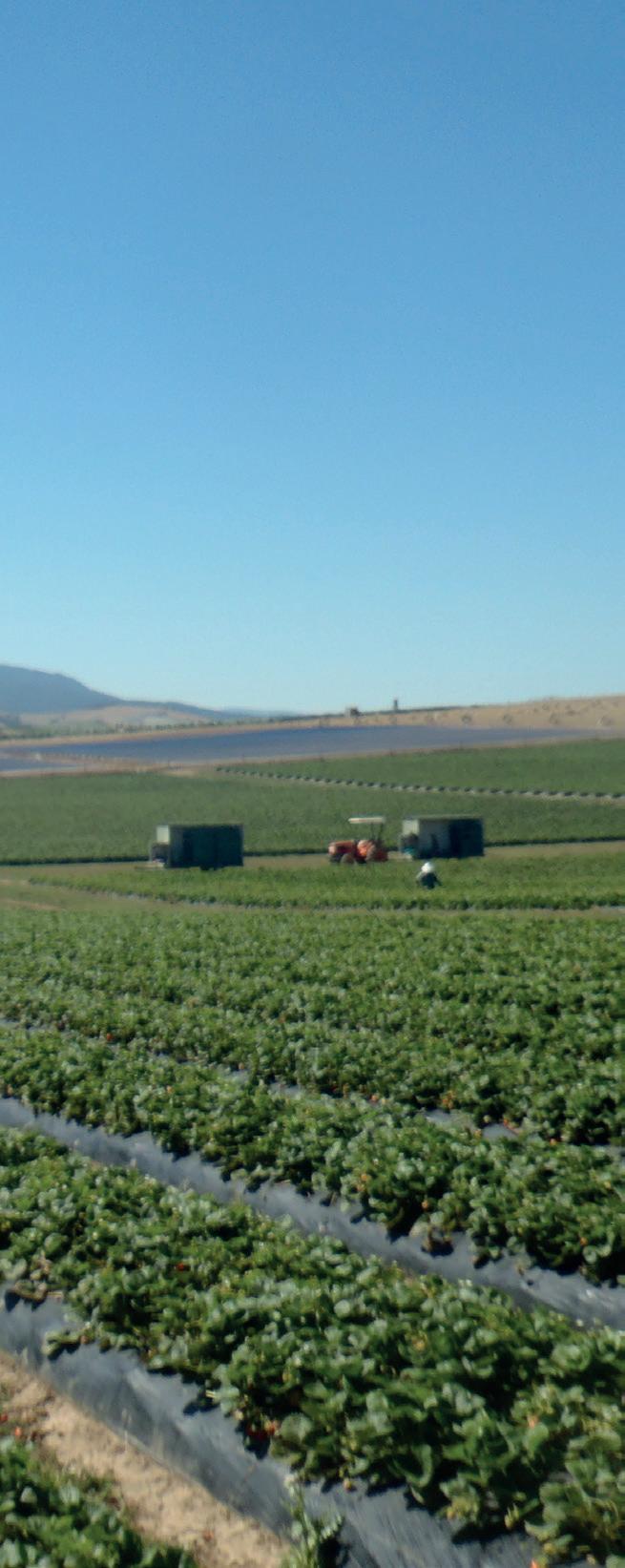

Supplying Quality Tunnel Structures & Plastic Covers Trellising hardware, Table Top systems & RHP Certified Coir Substrates Contact Paul Mobile: 0418 793 656 or Email: paul@quiedantunnelsaustralia.com.au Q uiedan Australia Improve Your Soil Health R&R Fumigation Services P/L, servicing all the major growing regions of Australia with the most comprehensive range of soil disinfestation products and services available today. Contact us today for a consultation to decide if our range of products and services can assist you in better managing your soil borne pests. R&R Fumigation Services P/L 1 Burton Crt Bayswater 3153 Rod Mitchell 0418 585 666 Office 03 9720 9099 A USTRALIANOWNED ANDOPERATED
RB21002 –
Alternative growing media for hydroponic Rubus production
Project Leader: Dr Doris Blaesing, RMCG
RB21002 – Alternative growing media for hydroponic Rubus production – a desktop review – was commissioned in response to increasing costs and supply-chain interruptions of sourcing coir, the preferred substrate for a vast majority of hydroponic production, not only Rubus hydroponic production. Coir is also used on its own or mixed with other media for other berries, vegetables, mushrooms and nursery crops.
Substrate choice is a critical component in any hydroponic production system. Given the industry’s heavy reliance on coir as a substrate, a review of current and emerging suitable substrate options for Rubus production was deemed necessary. The review is a riskmanagement strategy in the case that coir availability declined or costs continued to increase. Additionally, coir shipped over large distances internationally carries a large carbon emissions profile. Given the increasing spotlight on embedded carbon emissions within agricultural production, there may be a risk to social licence and potential cost increases should changes in carbon taxation policies be implemented.
The national and global scan to identify and analyse previously and currently used growing media, as well as emerging alternatives involved consultation with growers, substrate producers and industry representatives. These were the basis for an extensive desktop review. The review considered all potential substrate alternatives, not only those which had been used or developed specifically for Rubus hydroponic production. SWOT analyses were undertaken on all identified growing media options.
A novel wood-fibre substrate was identified as the currently most promising coir replacement. Further research is required to fine-tune its best use.
A comparative gross margin (GM) analysis was created to assess production systems using coir against a wood-fibre substrate. An economic threshold analysis was included to show at which substrate, berry price and yield the GM would not be adequate to cover variable costs of the substrate.
The economic analysis had to be based on available production data, and assumptions to fill data gaps for the new substrate. The GM analysis demonstrated that wood-fibre is likely to be cost-competitive when compared to coir assuming yield performance and durability are equivalent to coir. A high-level emission assessment was included for coir transport. The Excel based economic analysis model can be updated with actual data as it becomes available or used by producers to enter their own data.
The project demonstrated that wood-fibre substrates present a great opportunity for Rubus growers to diversify their substrate use. Further, long-term (over 3-4 production years) controlled trials are required to quantify any potential yield or production impacts when using 100% wood-fibre in comparison with coir and to understand any required changes in management practices including potentially mixing wood fibre with other materials.
A factsheet and a recorded webinar detailing and discussing the findings will be available on the Protected Cropping Australia and Berries Australia websites in coming weeks.
105
105
$2.4 million boost for Rubus pest management
RB21000: Integrated pest management approaches to address pest challenges in raspberry and blackberry Michele Buntain, Dr Stephen Quarrell - Research Fellow in Entomology, Dr Jonathan Finch - Research Fellow in Entomology, Tasmanian Institute of Agriculture
The program will be delivered through Hort Innovation and led by the Tasmanian Institute of Agriculture (TIA) partnering with NSW Department of Primary Industries (NSW DPI) and Agriculture Victoria (AgVic).
Dr Stephen Quarrell (TIA) is excited to be leading a truly integrated approach to pest management in Rubus crops.
“Working with blackberry growers on redberry mite management, it became obvious that we needed to consider the impacts of the whole pest and disease management program if we wanted better outcomes for growers. This funding is allowing us the time and scope to develop better integrated pest management systems, particularly for protected cropping and tricky-to-manage pests.”
The research team brings together some new and familiar faces. TIA’s Steve Quarrell is familiar to many through his research on redberry mite in blackberries. He is joined in Tasmania by entomologist and pollination guru Jon Finch. The Victorian team of Greg Lefoe, Jackie Steel and Hassan Rahmani bring expertise in classical biological control and mite management. Newly appointed entomologist Saleh Adnan will manage trials in NSW. The regionally based extension crew of Michele Buntain (TIA), and Melinda Simpson (DPI NSW) are berry industry stalwarts whilst Emily Crawford (AgVic) is a welcome new face with experience gained helping apple growers implement IPM. Research will be conducted in the main production regions of NSW, Tasmania and Victoria.
The program’s research focus will be the key IPM strategies of Cultural Management and Classical, Augmentative and Conservation Biocontrol. The program will also have a strong focus on developing extension materials that support better pest and disease management.
New biological control options
Two-spotted mite management is a good example of augmentative biological control currently being used in Rubus crops, where the natural enemies - predatory mites - are reared and then released in the crop. In this project, the research team will look to expand the biological control options available to Rubus growers.
The team will conduct a survey of the pest and beneficial species within our Rubus growing regions to find what beneficial insects are already in Australian Rubus crops. An example is the mite predator Typhlodromus dossei. It was commonly observed in blackberry fruit sourced from Victoria and Tasmania during the redberry mite project and could be cultivated as a future biocontrol agent to fill a current gap in mite management.
The Argentinian parasitic fly Trichopoda giacomelli is a potential candidate for green vegetable bug management. Scientists released this parasite in Northern NSW cotton for green vegetable bug control in 1996 but its current geographic range is unknown. The project will examine how far this species has spread since being released and if a release could be effective in southern growing regions.
BERRY AUSTRALIAN JOURNAL SUMMER 2022 EDITION 13 RUBUS
A national five-year $2.4m research program will boost integrated pest management (IPM) in Rubus crops - meeting the challenge of modern growing systems and pests.
106
Conserving our natural and introduced beneficials
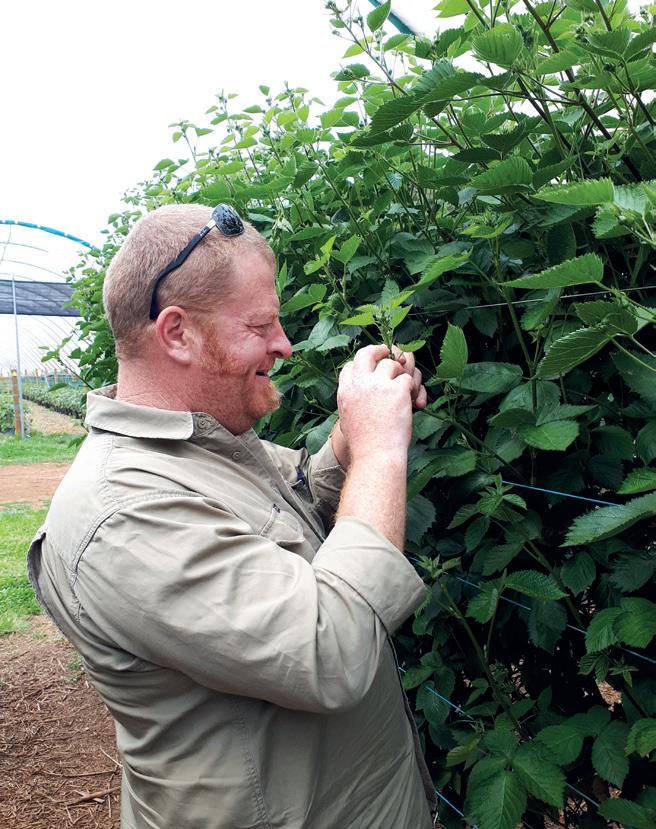
Introducing beneficial species multiple times during the long Rubus growing season can be hugely expensive. Protecting introduced beneficial species and natural enemies is a way of ensuring a better return on investment. Conservation biocontrol aims to both preserve and boost introduced and naturally occurring beneficial species in and around the crop by providing areas of shelter and forage that is not exposed to pesticides. These protected beneficial species help reduce pest pressure around the crop and help re-establish ‘good bug’ populations in the crop if a disruptive pesticide does need to be applied.
The research team recognises protected cropping poses some interesting challenges to implementing conservation biocontrol. The interrow can be very dry and is well trafficked making plant establishment tricky. We will work with growers to design a system that retains maximum cropping area whilst looking at innovative ways to economically establish more diverse plant communities for beneficial species.
Farm management and cultural control strategies
One form of cultural pest management we will investigate is trap cropping. The name ‘trap crop’ is very descriptive of how they work. ‘Trap crops’ are highly attractive to their target pests, luring them away from the Rubus crop. This provides growers with an opportunity to use disruptive chemical controls outside of the commercial crop without creating withholding period issues or secondary pest outbreaks. We see trap crops as a good option for highly mobile migratory pests such as mirids.
 Tasmanian entomologist and pollination expert Jon Finch
Photo credit: Tasmanian Institute of Agriculture
Dr Steve Quarrell (TIA) inspecting blackberry mites
Tasmanian entomologist and pollination expert Jon Finch
Photo credit: Tasmanian Institute of Agriculture
Dr Steve Quarrell (TIA) inspecting blackberry mites
107
Photo credit: Tasmanian Institute of Agriculture
Pesticides and Rubus IPM
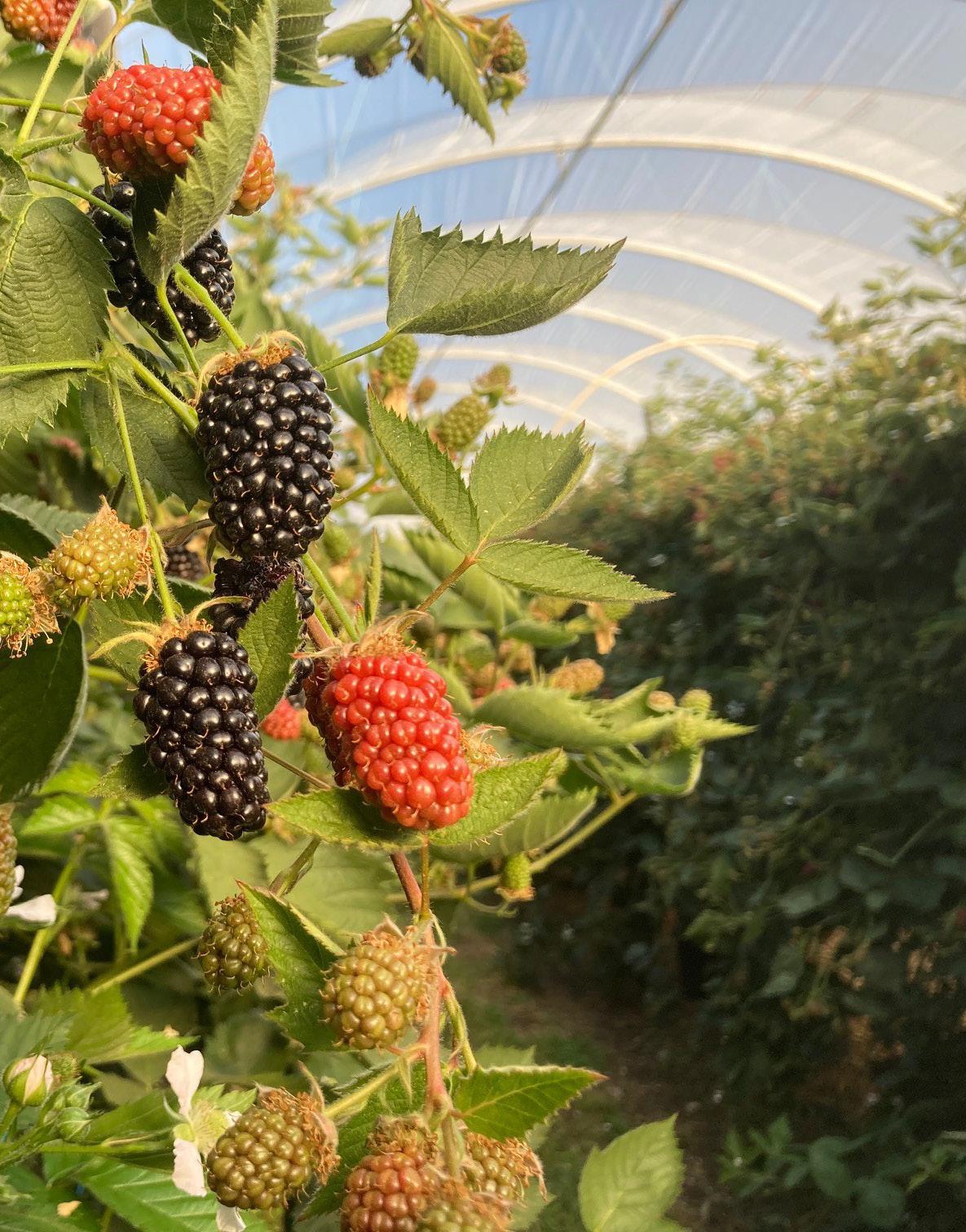




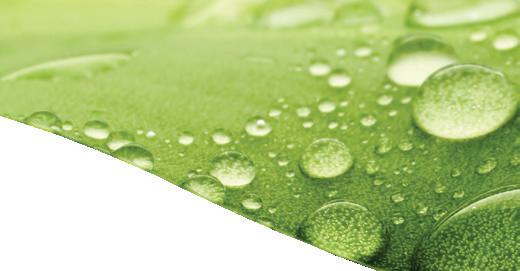
IPM aims to minimise pesticide use in the crop rather than eliminate it altogether. It looks at the whole system to understand how different management decisions impact on other aspects of crop protection, and fruit yield and quality. It may seem obvious, but one of the biggest issues when implementing IPM is knowing when and how best to respond to a pest outbreak. Part of this program is therefore about helping growers make the best decision around what pest management strategy (cultural, biological or chemical) is most appropriate at any given time and situation. Therefore, some of the key outputs for this project will be regional grower workshops and the development of industry friendly decision-making tools and guidelines to better understand how many common crop protection strategies impact on other aspects of production.




The project, Integrated pest management approaches to address pest challenges in raspberry and blackberry (RB21000) is a strategic levy investment under the Hort Innovation Raspberry and Blackberry Fund. This project has been funded by Hort Innovation, using the raspberry and blackberry research and development levy and contributions from the Australian Government and co-investment from the University of Tasmania, Agriculture Victoria, and NSW DPI. Hort Innovation is the grower owned, not-for-profit research and development corporation for Australian horticulture.


Australia - wide Sales, Service & Spare Parts Ph 1300 763 141 aisgreenworks.com.au
Solutions Irrigation Substrates Climate Control Water Treatment Trellising Accessories
Greenhouse
Photo: Burlington Berries
Profile: Roly & Jemma Mackinnon, Mountford Berries, Tasmania
Mark Salter, Berry Industry Development Officer, Fruit Growers Tasmania
Roly and his family run a mixed farming enterprise at Longford in the states’ north. Roly started his working life on the farm alongside his brother and father Hugh. During that early stage the farm produced livestock and cropping. It was 10 years later, after a chance meeting with Simon Dornauf from Hillwood Berries who was growing berries for Driscoll’s, that Roly decided to also consider growing berries. It was good timing as the Mountford farming business was looking to diversify and berries looked like a good fit.
Roly believed they had a suitable site on the farm to grow berries and decided to plant 4 hectares of inground strawberries in tunnels. After a very challenging second year growing strawberries due mainly to pest pressure, the Mackinnon’s decided to move all their plantings onto tables and into substrate, which improved pest and disease control and increased productivity. Roly admits the move to berries was very challenging in the early years, but it is now paying dividends as the farm has expanded their strawberry plantings as well as now growing raspberries and blackberries all in tunnels.
Currently the farm has 20 hectares of the Driscoll’s strawberry variety Amesti grown on tabletops, with a mix of double and single tables.
Roly explains the single tables are more suited to some of the newer strawberry varieties. They also grow 4 hectares of the Driscoll’s raspberry variety Maravilla and 3 hectares of blackberry varieties Elvira and Victoria, all grow in substrate and in pots.
The berries are fed hydroponically through four Priva automated irrigation controllers. The Priva units adjust the irrigation nutrient mixes throughout the production cycle depending on growth stage of the plant. Water is accessed from the South Esk river which is a reliable source of clean water and pumped straight into on-farm storage.
Labour
Roly states one of the biggest challenges is to have an even crop over the season and to spread out the harvest to help with labour management. Jemma is the HR Manager, and she explains that accessing sufficient labour for the 6–7-month harvest period is a major challenge.
Mountford Berries are an Approved Employer through the Pacific Australian Labour Mobility (PALM) scheme. The company employs over 150 seasonal workers and sources most of their harvest crew from Timor-Leste, Tonga, and Vanuatu. Jemma says the planning process begins well before the season starts with an extensive workforce plan which includes the harvest crew, supervisors, drivers, and management staff.
Planning early helps to ensure the company has adequate staff numbers throughout the full season. The planning process is particularly important as there is a minimum 10-week lead time to source harvest labour through the Seasonal Worker Program. The Mackinnon’s put great emphasis on maintaining a close relationship with their staff and regularly travel to the Pacific Islands to meet their crew.
The last few years they have focused their recruitment program on Timor-Leste, recently undertaking a 10-day trip to visit some of some of their current workers and to explore the potential to expand their work force.
RUBUS 109

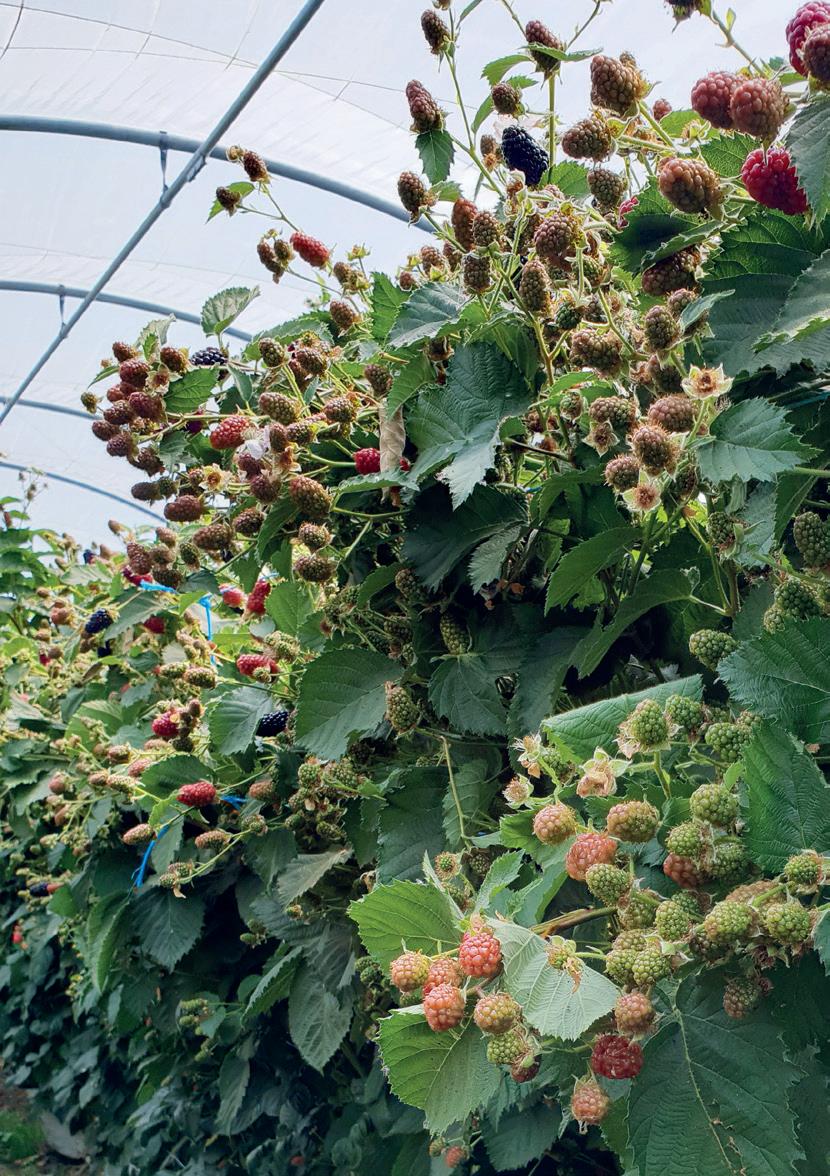
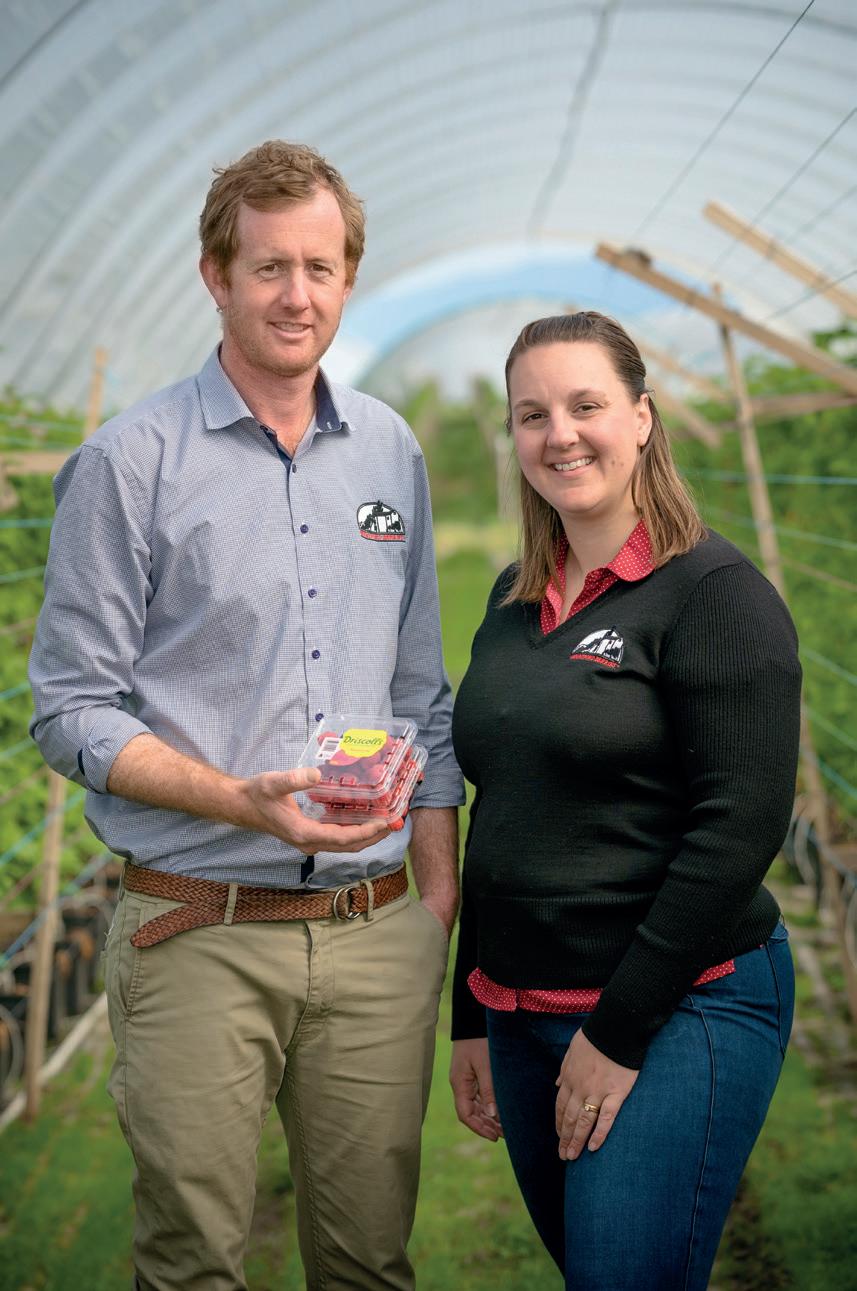 Joly & Jemma Mackinnon from Mountford Berries.
Photo credit: Mountford Berries
Mountford Berries grows strawberries and Rubus in tunnels at the property near Longford in the northern midlands of Tasmania.
Photo credit: Mountford Berries
Bumper raspberry crop developing. Photo credit: Mountford Berries
Joly & Jemma Mackinnon from Mountford Berries.
Photo credit: Mountford Berries
Mountford Berries grows strawberries and Rubus in tunnels at the property near Longford in the northern midlands of Tasmania.
Photo credit: Mountford Berries
Bumper raspberry crop developing. Photo credit: Mountford Berries
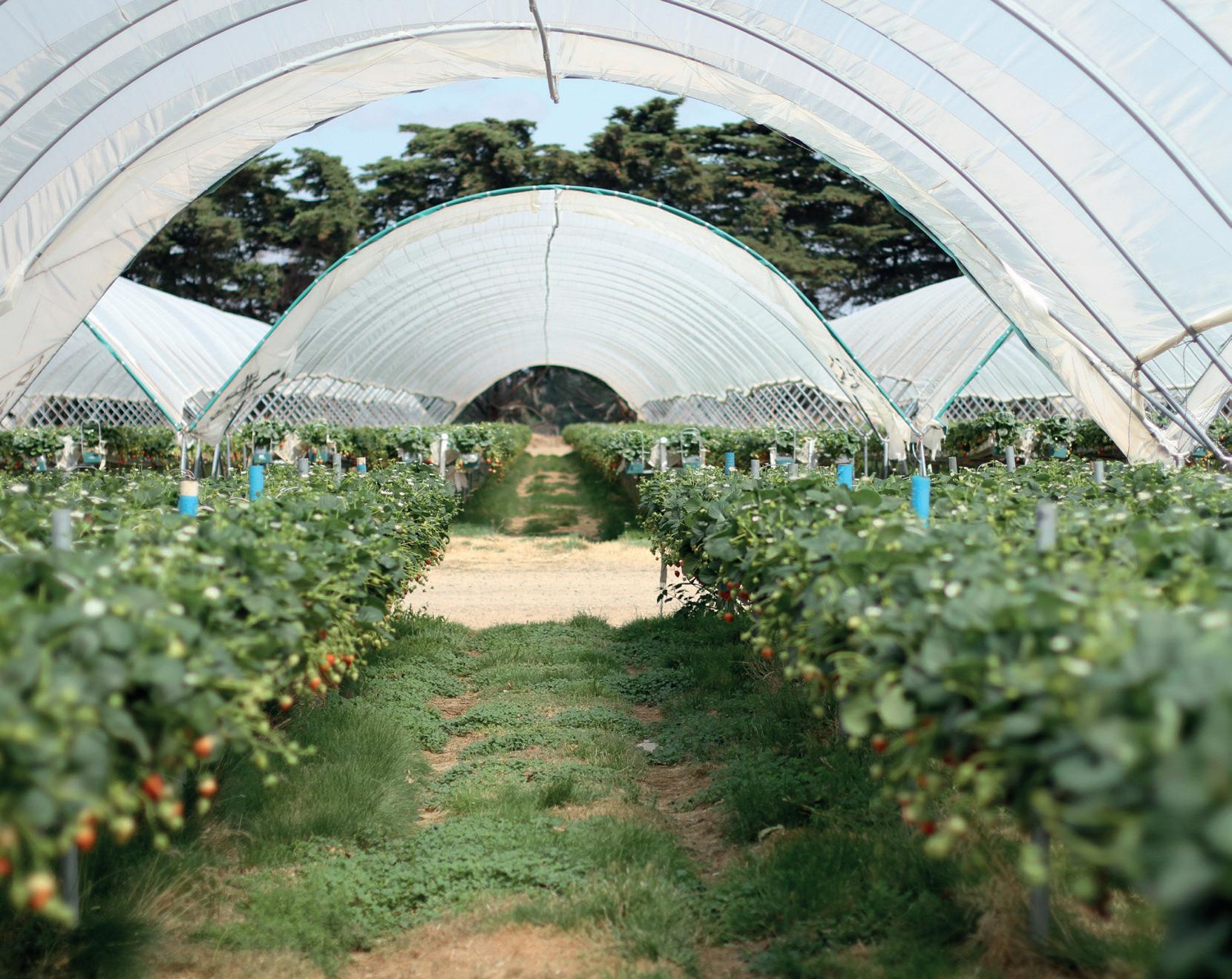

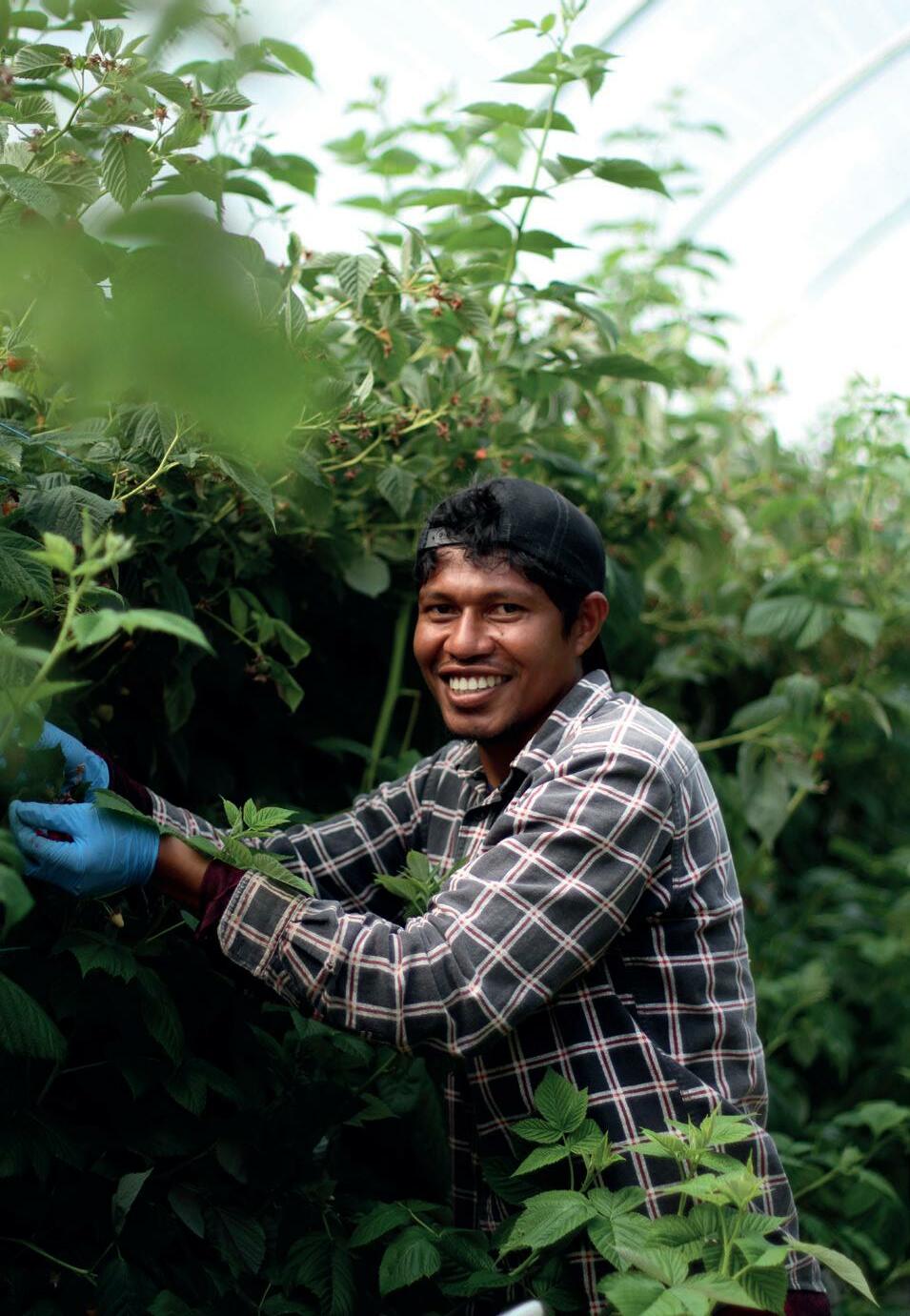 Strawberries growing on tabletops in the tunnel system.
Photo credit: Mountford Berries
Seasonal workers through the PALM scheme provide a large proportion of the harvest labour required.
Strawberries growing on tabletops in the tunnel system.
Photo credit: Mountford Berries
Seasonal workers through the PALM scheme provide a large proportion of the harvest labour required.
111
Photo credit: Mountford Berries
During their recent trip, Jemma says it was great to see what some of their workers have achieved in their own country, including building better homes, education facilities and supporting extended families.
Some have also developed small businesses and are now employing staff of their own. Jemma also explains it is critical for their business to have a reliable source of returning workers, as having them already trained and with prior experience makes the harvest process much more efficient.
Mountford Berries also have a core group of locals that make up their non-harvest staff. Roly makes the point that without the PALM scheme he would not be confident to expand and employ more people including locals.
Accommodation is a major consideration particularly when employing through the PALM scheme. To cater for their harvest workers Mountford Berries have built on-site accommodation and lease a number of houses in Longford and the surrounding area.
Marketing
All berries produced on the farm are marketed through the Driscoll’s marketing program, which suits Roly as it allows him more time to concentrate on growing and managing the production aspects of the farm.
Challenges
The major challenges include:
• The sourcing and cost of labour, particularly for berries which are very labour intensive

• Rising cost of inputs
• Public perception with plastic and disposal, and the current lack of recycling facilities available to handle waste plastic
• Red tape, particularly from local council
• Access to suitable accommodation
Future
Roly and Jemma both agree there are many challenges, but the future looks bright for Mountford Berries. Rather than expanding further they think now is the right time to consolidate, particularly after a few years of heavy investment. Roly explains their current focus is on getting the basics right, particularly growing and harvesting the crop.
Worker profile: Tarcisio from Timor-Leste
Tarcisio has been working with us, seasonally, since 2018. He is 30 years old and supports his family at home in Timor-Leste. Tarcisio is very passionate about his home country and wants to provide for his family for years to come. He has built a home for his parents in Suai which is near completion. This was possible due to his placement at Mountford Berries with the PALM Scheme.
Tarcisio works in Australia for Australian wages and saves his money to send home to better his and his family's lives.
During his time in Australia, he has learnt leadership and responsibility and takes that back to Timor-Leste along with the work ethic that he probably brought over with him!
Tarcisio understands that he cannot work in Australia forever and so he has been setting himself up so that once he has finished with us at Mountford Berries, hopefully in 10 years’ time, he has an income in Timor-Leste. He has started a printing and technology hire business in Dili, Timor-Leste’s capital city.
The business involves hiring out equipment, printing documents, taking drivers’ licence photos, screen printing logos onto clothing, and typing up documents for people. This is all to give an income to his wife and for him to have a job while he is back at home during the off season.
The business was going so well that he was able to also provide his brother a job as well as one other local person from the community.
Tarcisio not only is providing for himself and his family, but he is creating a circle of wealth within the community in Timor-Leste.
We feel so much joy being able to go over to Timor-Leste and see where all the hard work of our staff is going and just how much it is enriching their lives is amazing to see firsthand. We look forward to our relationship with the Pacific and Timor-Leste growing into the future.
112 BERRY AUSTRALIAN JOURNAL SUMMER 2022 EDITION 13


Good hygiene is in your hands.
Good hygiene is in your hands.
Good hygiene is in your hands.
Good hygiene is in your hands.
1
Wet hands with running warm water and apply soap.
Wet hands with running warm water and apply soap.
Wet hands with running warm water and apply soap.
Wet hands with running warm water and apply soap.
Rub hands and lather for at least 20 seconds.
Rub hands and lather for at least 20 seconds.
Rub hands and lather for at least 20 seconds.
Rub hands and lather for at least 20 seconds.
Rinse hands under running warm water.
Rinse hands under running warm water.
Rinse hands under running warm water.
Rinse hands under running warm water.
Dry hands thoroughly with a clean towel.
Dry hands thoroughly with a clean towel.
Dry hands thoroughly with a clean towel.
Dry hands thoroughly with a clean towel.
For more information about Coronavirus (COVID-19), please visit health.gov.au
For more information about Coronavirus (COVID-19), please visit health.gov.au
For more information about Coronavirus (COVID-19), please visit health.gov.au
For more information about Coronavirus (COVID-19), please visit health.gov.au
1 3 4 2
3 4 2
1 3 4 2
1 3 4 2









































































































































 WINNE R
WINNE R

































































 Melinda Simpson, Berry Industry Development Officer, NSW Department of Primary Industries
Melinda Simpson, Berry Industry Development Officer, NSW Department of Primary Industries
















 Steve Maginnity, The Australian Native Bee Company
Steve Maginnity, The Australian Native Bee Company














































 Figure 1. Seedlings at Bundaberg, with coloured flags indicating good performance at different time points throughout the 2022 subtropical season. Photo credit: Katie O’Connor
Figure 2. Harvesting of the 2022 subtropical clonal trial at Nambour.
Figure 1. Seedlings at Bundaberg, with coloured flags indicating good performance at different time points throughout the 2022 subtropical season. Photo credit: Katie O’Connor
Figure 2. Harvesting of the 2022 subtropical clonal trial at Nambour.
 Figure 3. 2022 Mediterranean seedling and clonal trial at a grower’s property in Bullsbrook, WA.
Figure 3. 2022 Mediterranean seedling and clonal trial at a grower’s property in Bullsbrook, WA.

 Figure 4. 2022-23 temperate clonal and seedling trial at Wandin, Victoria. Photo credit: Karen Spencer
Figure 4. 2022-23 temperate clonal and seedling trial at Wandin, Victoria. Photo credit: Karen Spencer



































 Tasmanian entomologist and pollination expert Jon Finch
Photo credit: Tasmanian Institute of Agriculture
Dr Steve Quarrell (TIA) inspecting blackberry mites
Tasmanian entomologist and pollination expert Jon Finch
Photo credit: Tasmanian Institute of Agriculture
Dr Steve Quarrell (TIA) inspecting blackberry mites














 Joly & Jemma Mackinnon from Mountford Berries.
Photo credit: Mountford Berries
Mountford Berries grows strawberries and Rubus in tunnels at the property near Longford in the northern midlands of Tasmania.
Photo credit: Mountford Berries
Bumper raspberry crop developing. Photo credit: Mountford Berries
Joly & Jemma Mackinnon from Mountford Berries.
Photo credit: Mountford Berries
Mountford Berries grows strawberries and Rubus in tunnels at the property near Longford in the northern midlands of Tasmania.
Photo credit: Mountford Berries
Bumper raspberry crop developing. Photo credit: Mountford Berries


 Strawberries growing on tabletops in the tunnel system.
Photo credit: Mountford Berries
Seasonal workers through the PALM scheme provide a large proportion of the harvest labour required.
Strawberries growing on tabletops in the tunnel system.
Photo credit: Mountford Berries
Seasonal workers through the PALM scheme provide a large proportion of the harvest labour required.






